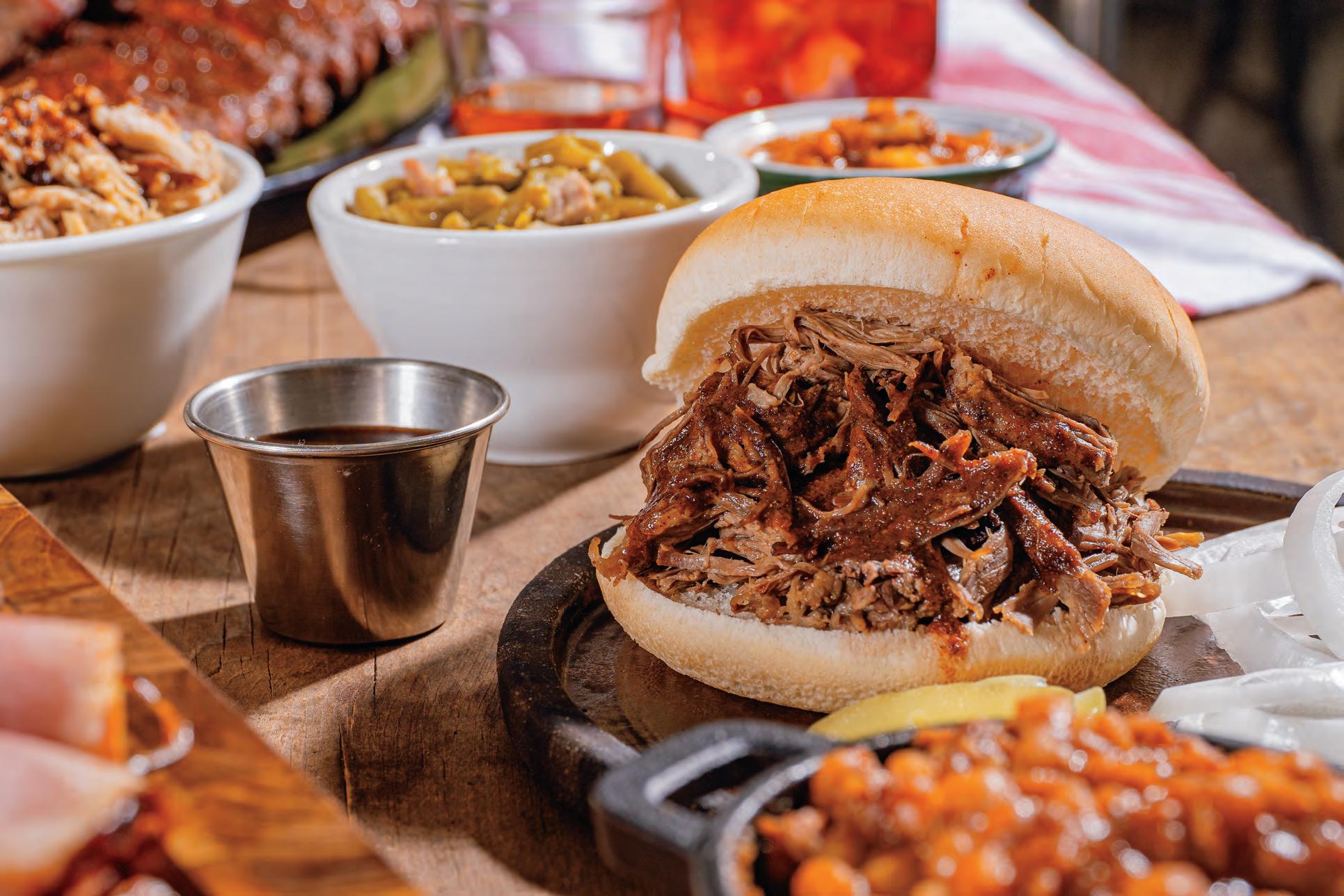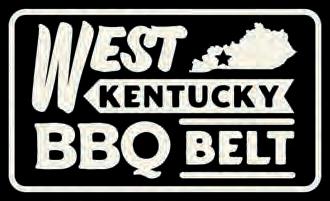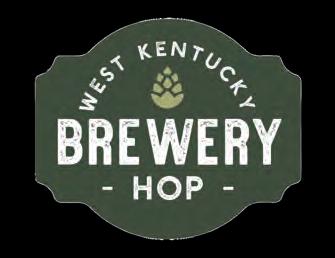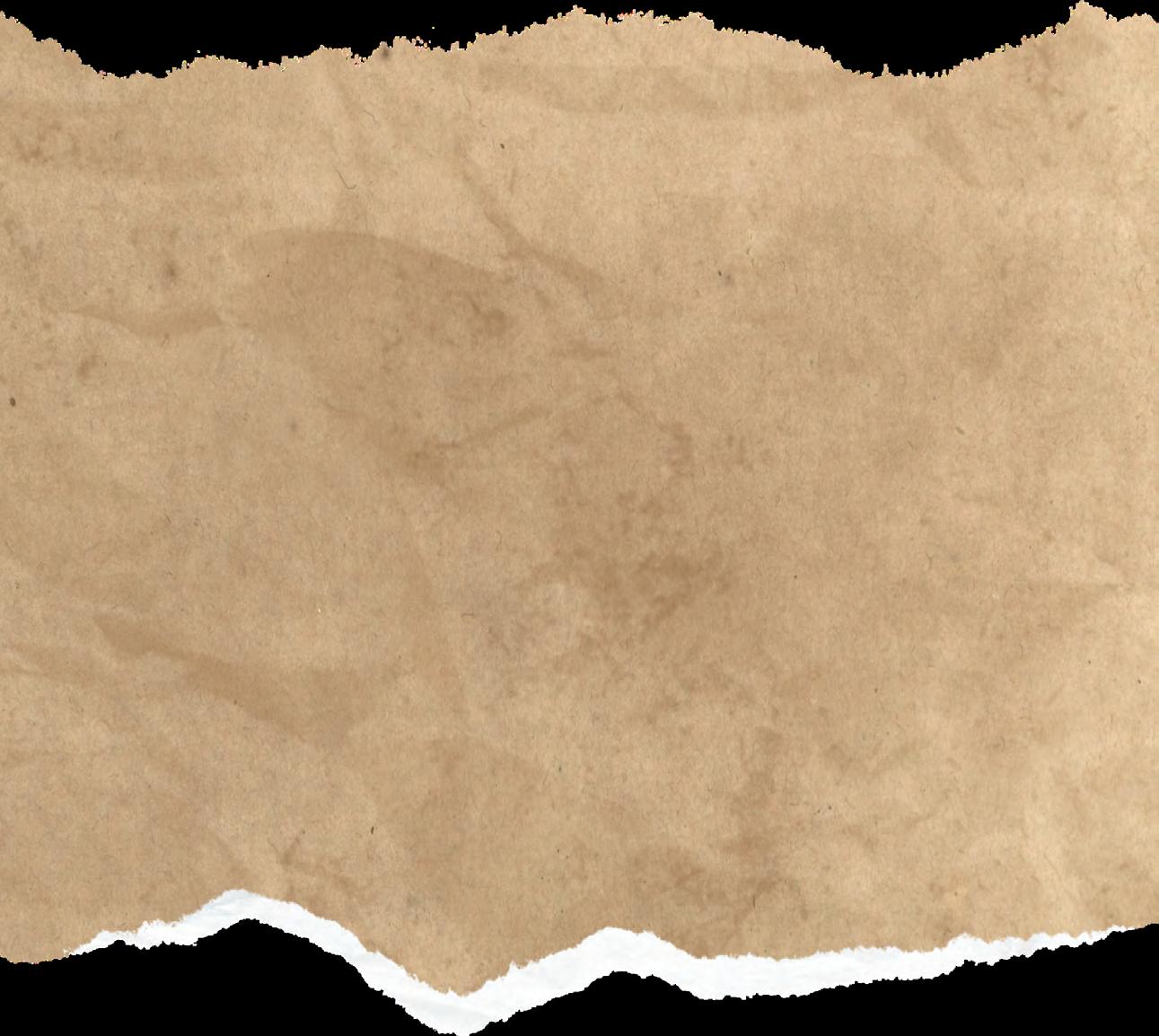with Kentucky Explorer


with Kentucky Explorer

Attending this year’s event: Gwenda Bond, John Lackey, David Arnold, Meg Shaffer and 150 more authors.
Appalachian Writers’ Workshop
America’s Most Haunted Neighborhood

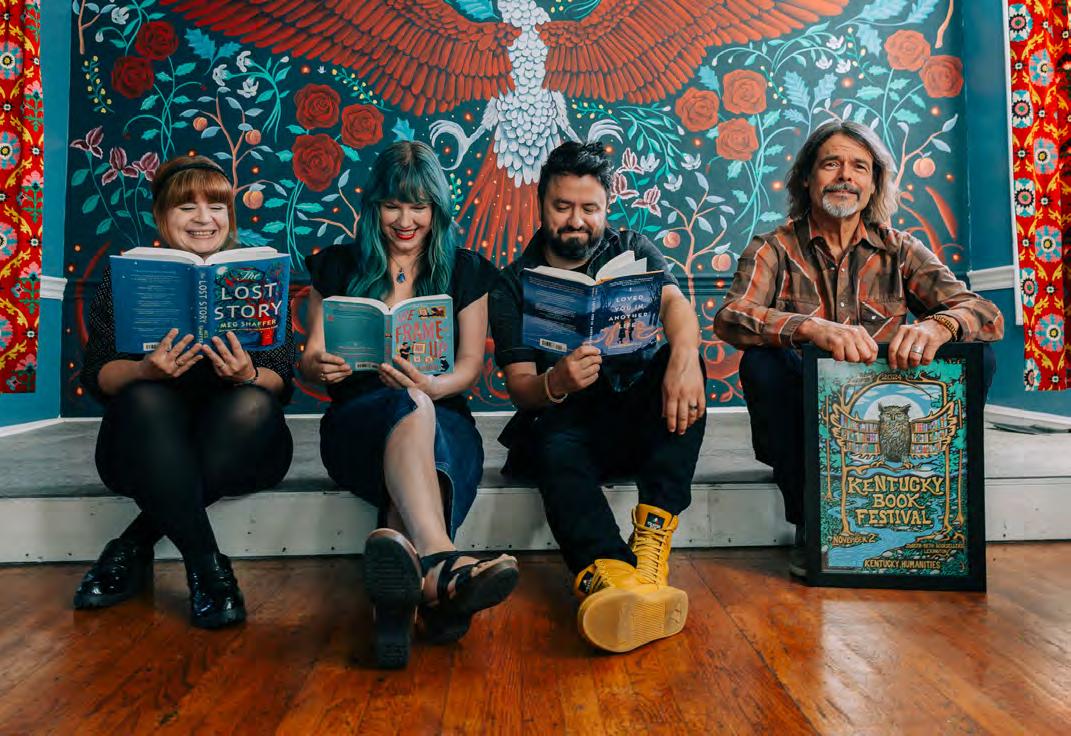

Character, Creativity, Collaboration and Community The James Baker Hall Foundation supports Kentucky’s
Honoring an Icon Martin Luther King Jr.’s legacy will loom large over a 2024 Kentucky Book Festival that also will feature fantasy, bourbon, spirituality and much more
The Kentucky Humanities presents the 42nd edition of the event at JosephBeth Booksellers in Lexington
Test your knowledge of our beloved Commonwealth. To find out how you fared, see page 4.
1. What country musician had the sound go out briefly during a concert, with the singer crediting the problem to “Paramount Joe,” who is said to haunt the Paramount Arts Center in Ashland?
A. Ricky Skaggs
B. Crystal Gayle
C. Billy Ray Cyrus
2. Which Paducah building is said to be one of the most haunted locations in Kentucky due to the spirit of Stella Cohen Peine lingering after she died in her apartment there?
A. Market House Theatre
B. C.C. Cohen Building
C. Hotel Metropolitan Museum
3. Whether it is the spirit of a worker who died in a dynamite explosion or the spirit of a climber who died in a fall, this ghost shows up in the Nada Tunnel at Red River Gorge as what color of light?
A. Glowing white light
B. Glowing green light
C. Glowing blue light
4. Which Kentucky school was featured in a 2012 episode of the original Ghost Hunters show on the SyFy Channel, in which three haunted locations were investigated?
A. Eastern Kentucky University
B. Northern Kentucky University
C. Western Kentucky University
5. The International Paranormal Museum and Research Center is located in which Kentucky city?
A. Maysville
B. Somerset
C. New Castle

© 2024, VESTED INTEREST PUBLICATIONS
6. Which Kentucky university has a tomb on campus that is the resting place of a professor who taught there in the 1800s? (He was buried there in the hopes of ending the curse he had placed on the school.)
A. Morehead State University
B. Transylvania University
C. Murray State University
7. Jimmie (also spelled “Jemmie”) Courtney Hickman Thompson is said to haunt her former home, Lone Oak, and is known for staring out the window and scaring cats and dogs inside the house. Lone Oak is in which Kentucky town?
A. Cadiz
B. Bowling Green
C. Hopkinsville
8. Patricia Wilson is said to be the spirit known as the “Lady in Blue,” who died in an elevator accident (or was it murder?) in 1936 in what Louisville hotel?
A. Seelbach Hotel
B. The Galt House
C. The Brown Hotel
9. Along with the spirits of previous owners, Maple Hill Manor in Springfield is said to be haunted by the spirits of several Civil War soldiers who died there after being injured in what battle?
A. Battle of Gettysburg
B. Battle of Perryville
B. Battle of Barkley
10. Talbott Tavern Inn, one of the oldest buildings in Bardstown, has long been rumored to be haunted by several spirits, including which famous outlaw?
A. Jesse James
B. Billy the Kid
C. Butch Cassidy
Contributed by Dr. Tamela W. Smith, Western Kentucky University Staff Emeritus.
VOLUME TWENTY-SEVEN, ISSUE 8, OCTOBER 2024
Stephen M. Vest Publisher + Editor-in-Chief
Hal Moss Associate Publisher + Business Editor
EDITORIAL
Patricia Ranft Associate Editor
Rebecca Redding Creative Director
Deborah Kohl Kremer Assistant Editor
Ted Sloan Contributing Editor Cait A. Smith Copy Editor
Jackie Hollenkamp Bentley, Jack Brammer, Bill Ellis, Steve Flairty, Gary Garth, Jessie Hendrix-Inman, Mick Jeffries, Kim Kobersmith, Brigitte Prather, Walt Reichert, Tracey Teo, Janine Washle and Gary P. West
BUSINESS AND CIRCULATION
Barbara Kay Vest Business Manager
ADVERTISING
Lindsey Collins Senior Account Executive and Coordinator
Kelley Burchell Account Executive
Laura Ray Account Executive
Teresa Revlett Account Executive For advertising information, call 888.329.0053 or 502.227.0053
KENTUCKY MONTHLY (ISSN 1542-0507) is published 10 times per year (monthly with combined December/ January and June/July issues) for $25 per year by Vested Interest Publications, Inc., 100 Consumer Lane, Frankfort, KY 40601. Periodicals Postage Paid at Frankfort, KY and at additional mailing offices.
POSTMASTER: Send address changes to KENTUCKY MONTHLY, P.O. Box 559, Frankfort, KY 40602-0559. Vested Interest Publications: Stephen M. Vest, president; Patricia Ranft, vice president; Barbara Kay Vest, secretary/treasurer. Board of directors: James W. Adams Jr., Dr. Gene Burch, Gregory N. Carnes, Barbara and Pete Chiericozzi, Kellee Dicks, Maj. Jack E. Dixon, Bruce and Peggy Dungan, Mary and Michael Embry, Judy M. Harris, Greg and Carrie Hawkins, Jan and John Higginbotham, Frank Martin, Bill Noel, Walter B. Norris, Kasia Pater, Dr. Mary Jo Ratliff, Randy and Rebecca Sandell, Kendall Carr Shelton and Ted M. Sloan.
Kentucky Monthly invites queries but accepts no responsibility for unsolicited material; submissions will not be returned.
KENTUCKYMONTHLY.COM


I loved Bill Ellis’ article “What’s in a Name” (August issue, page 57). Having red hair growing up, I had quite a few nicknames. “Redheaded Woodpecker Sitting on a Fence” was the longest and most aggravating nickname in school. Some things you never forget! But mostly, we survive.
“Hey Red” was another one. Now, my hair is white and nobody dares to comment!
Ellen Glasgow, Frankfort
Toward the end of each month, I begin looking into our mailbox, eagerly awaiting the next issue of Kentucky Monthly, wondering what the next
issue has in store for me.
I have a flexible pattern of reading each issue—from the front cover to “In this Issue.” Next, I take the “Kentucky Kwiz” and on to “Readers Write,” then to the back page for my friend, Steve’s “Vested Interest,” then back to “Past Tense/Present Tense” to read Bill Ellis’ words of wisdom, to which, agewise, I usually relate.
I especially am drawn to Kentucky Explorer and the “I Remember” section. And sometimes, I am proud and pleased to see my name in print with my own contributions.
Recently, while waiting for the beginning of my OLLI at the University of Kentucky, a shared interest group with weekly afternoon gatherings, I expressed some of the above thoughts to Sara
Dodson Moore, one of my writer friends, who said, “Don, ever since you introduced me to Kentucky Monthly and I began subscribing, I also eagerly await the next issue.”
My sister who lives in Rhode Island, Nancy Dodson Wake, who recently lost her husband, commented upon receiving my gift subscription, “Kentucky Monthly keeps me connected to the Commonwealth, the land I love, and helps me to cope.”
Don Dampier, Georgetown
The answer to question No. 1 in our September Kwiz (page 2) should have included the Green Bay Packers’ Lambeau Field, which is composed of a hybrid of Kentucky bluegrass and artificial turf.
We Love to Hear from You! Kentucky Monthly welcomes letters from all readers. Email us your comments at editor@kentuckymonthly.com, send a letter through our website at kentuckymonthly.com, or message us on Facebook. Letters may be edited for clarification and brevity.

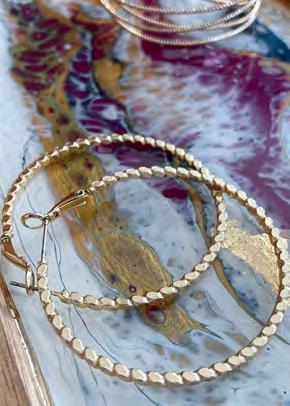
’s

Even when you’re far away, you can take the spirit of your Kentucky home with you. And when you do, we want to see it!

Linda and Bryan Stopper (center and right) of Frankfort with Kennie Gill of Arlington, Virginia, by way of Lexington, at Garden of the Gods at Manitou Springs in Colorado.
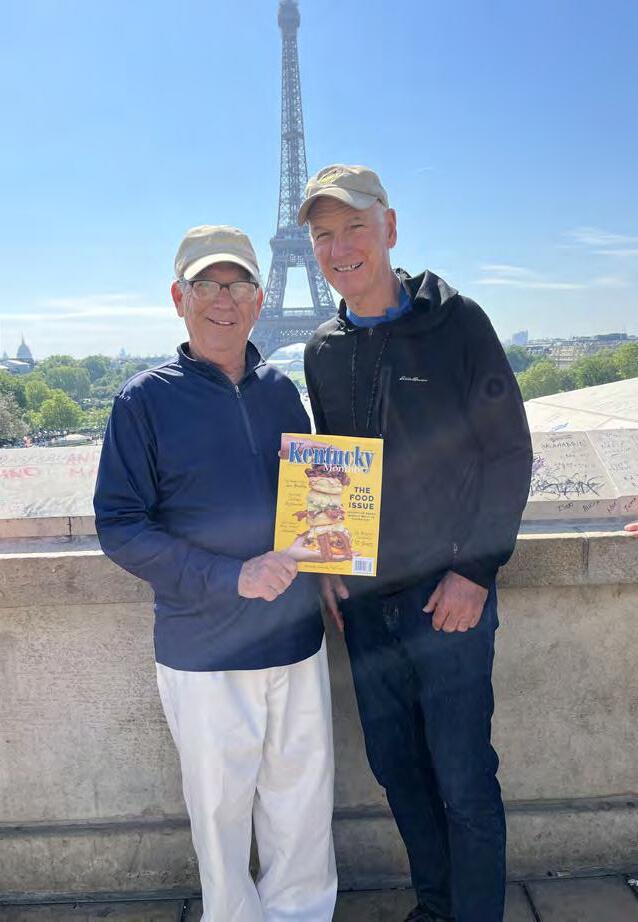
Mark Joyce and Jim Roush, lifelong brothers of Kappa Sigma at the University of Kentucky, embarked on a bucket list Paris to Zurich river cruise. Their group of eight travelers, all from Louisville, enjoyed two weeks of sightseeing and local cuisine.

Bill and Brenda Watson of Georgetown checked out The Mystery Machine in Pigeon Forge, Tennessee, near the Old Mill.
Take a copy of the magazine with you and get snapping! Send your high-resolution photos (usually 1 MB or higher) to editor@kentuckymonthly.com or visit kentuckymonthly.com to submit your photo.
1. B. Several incidents have been credited to Joe, including lights mysteriously going out, pictures falling from walls, and heavy footsteps stomping the stage; 2. B. Stella’s restaurant occupies the first floor of the building in which Stella Cohen Peine was found dead in an upstairs apartment in 1980; 3. B. Those who have seen the light describe it as a floating green orb; 4. C. Paranormal researcher and retired WKU faculty member Dr. Tamela Williams Smith conducts Hilltopper History and Haunts Tours on the campus; 5. B. The museum is open to the public Tuesday-Saturday, 11 a.m.-5 p.m.; 6. B. Students at the university vie for the opportunity to spend Halloween night in the tomb of botanist Constantine Samuel Rafinesque; 7. C. Thompson’s spirit also has been blamed for rearranged glassware, gifts that disappeared and pulled hair; 8. A. Wilson had planned to meet her husband at the hotel, but he was killed in a car accident on his way there; 9. B. The building served as a Confederate and Union hospital following the battle; 10. A. Ironically, James himself reportedly saw a ghost in the inn.
The beautiful resort community of French Lick West Baden, Indiana and neighboring towns of Orleans and Paoli have been welcoming guests on marvelous Indiana getaways for over 100 years — guests who have been searching for the perfect destination with gracious hospitality, ultimate luxury, and an unforgettable experience. Whether you’re seeking adventure or tranquility, there is something for everyone to discover.



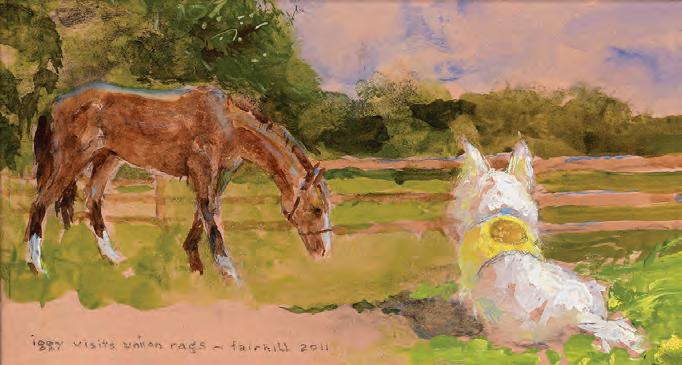
“In the whole history of the world there is but one thing that money cannot buy … to wit—the wag of a dog’s tail.” Josh Billings
Lexington’s Headley-Whitney Museum of Art’s newest exhibition is a celebration of all things dogs and cats. Going on now through Nov. 24, Dogs & Cats: An Exhibition features the work of realist artist Jamie Wyeth
The third generation, internationally renowned artist has 25 works of canine and feline art on display. They join the works of 30 Kentucky artists, as well as mid-1800s dog paintings on loan from private collections.
The tribute to our four-legged friends also features a historical dog collar collection on loan from the National Sporting Library & Museum in Middleburg, Virginia. Kentucky artist Ellen Skidmore will exhibit 26 new works and her book How Dogs Make Me Feel.
The Headley-Whitney Museum of Art’s fall hours are Friday through Sunday, 10 a.m.-4 p.m.
For more information, go to headley-whitney.org
Hal Moss has joined Kentucky Monthly as associate publisher and business editor, bringing with him decades of knowledge and experience. He previously served in senior account executive roles at Thoroughbred Times, Daily Racing Form and, most recently, The Lane Report. Moss resides in Lexington with his wife, Dana
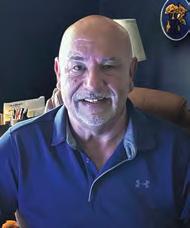
“I look forward to joining the great team at Kentucky Monthly,” Moss said. “I have long admired the editorial content, photography, interesting stories and profiles of people from across the Commonwealth. One of the new initiatives is to expand our economic development coverage. We plan to feature the Kentucky-based industries and people who are the key economic drivers in the state. My personal goal is to make Kentucky Monthly the most complete publication in the Commonwealth, serving our readers with informative, relevant content. I am so grateful for this opportunity!”
A honky-tonk owner, a sound engineer, a fiddler, singers and songwriters make up the Class of 2024 Kentucky Music Hall of Fame.

Sturgill Simpson
Honorees include Edmonton hard rock band Black Stone Cherry; Somerset gospel legend Rodney Griffin; singer-songwriter and Wilder’s famous honky-tonk owner Bobby Mackey; Winchester musician Paul Martin; Grand Master Fiddler Champion and Leitchfield native Jimmy Mattingly; The McLain Family Band of Hindman; Paint Lick’s Billy Moore, the first sound engineer inducted into the Hall of Fame; Mayfield native and famed Nashville venue owner Ruble Sanderson; American Music Awardand Grammy Award-winning country star Sturgill Simpson of Versailles; singer-songwriter and Puncheon Creek (Anderson County) native Charlie Sizemore; and country singer Gary Stewart of Jenkins (Letcher County), also known as the “King of the Honky-Tonk.”
Kentucky Music Hall of Fame
Executive Director Jessica Blankenship noted that this year’s class of inductees covers the gamut of the music industry. “We’ve got so much talent in Kentucky; it’s just bustin’ at the seams,” she said.
The induction ceremony is set for Oct. 26 at Renfro Valley Entertainment Center in Mount Vernon.
More information on current and past inductees can be found at kentuckymusichalloffame.com


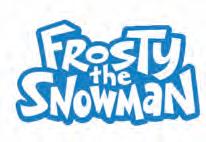


Question: How would you describe Kentucky’s tourism industry?
Answer: The most literal description is that the businesses and organizations that attract and serve Kentucky visitors are the industry. That includes local tourism bureaus, hotels and other types of accommodations, attractions, restaurants, marinas, state agencies and suppliers, including media such as Kentucky Monthly
But the industry is more than an assortment of businesses. It’s the professionals throughout the Commonwealth—from GMs and CEOs to frontline service providers— who are passionate about Kentucky and who channel that passion into convincing people to experience our state and who provide exceptional services to them during their visits.
Q. What role does KTIA play in the tourism industry in Kentucky?
KTIA helps the industry carry out its work of attracting and serving visitors. We do that as the industry’s collective voice to the General Assembly and other policymakers, as a source of education and information, and in other ways that help businesses and individuals develop to their fullest potential.
Q. Why should an organization or business join KTIA?
If your business serves visitors to your community, you can choose to be on an island by yourself, fending for
yourself, and learning only from your own experiences. Or you can choose to connect with others from throughout the state who share your issues and challenges and work together to address them … That opportunity to connect is the “why” of joining KTIA.
Q. Do you work in concert with the Kentucky Department of Tourism?
Absolutely. The department holds an exclusive KTIA designation of Partner, which is much more than just a title. As they market Kentucky to the world and we focus on serving the industry, we occupy distinct lanes as partners, both pointed toward the shared goal of building tourism and the benefits it provides to Kentucky.
Q. What is the total economic impact that Kentucky tourism generates? Is the bourbon craze a huge factor?
Tourism’s economic impact in 2023 was $13.8 billion, the second consecutive record-breaking year. Yes, bourbon is a huge factor and deserves a great deal of credit, yet Kentucky’s ultimate strength as a travel destination is its variety of experiences. … The complete Kentucky tourism story includes horses, history and culture, special interest attractions, urban excitement and small-town authenticity.
Q. Tell us what to expect from KTIA’s upcoming Kentucky Travel Industry Annual Conference held
In this edition of Kentucky Monthly, we introduce a new column: “Five Minutes With …” For each issue, we will pose questions to a prominent Kentucky business leader and publish them along with the responses.
this year in Covington (Nov. 13-15). Conference planning is a year-round process. This year’s edition will be one of the best in terms of the variety and quality of experiences. Education topics range from agritourism to how to do podcasts to sports tourism to serving group tours, and a variety of others. Add to that networking events like Bowling for Bourbon, a voluntourism event at a facility for displaced children, and area tours.
Q. What brings you the most satisfaction working for KTIA?
It’s pretty basic—helping people. To be able to help the type of folks who are in our industry—good, committed and creative people—is enormously satisfying.
Q. And conversely, what are the biggest challenges you face in your role at KTIA?
One is figuring out how to deliver value and support to each of the diverse segments of the industry. The other is what I think of as bifocal vision: seeing and responding to immediate industry needs and opportunities and at the same time looking ahead to the tourism horizon and anticipating and planning for what’s out there.
Please contact Business Editor Hal Moss at hal@kentuckymonthly.com with press releases or business news you want to share.
BY LAURA YOUNKIN
Whether he’s listening to new music, playing for his elders, or digging into oldies, Louisville musician Tyrone Cotton is always listening and learning. “The world’s still new,” he said.
While visiting a friend in New York City, Cotton said his friend played a recording by singer-songwriter and Louisville native Tim Kreckel, “an older record. I hadn’t heard it.” That got him digging deeper into Krekel’s catalog.
Other Kentucky musicians have piqued Cotton’s interest. He likes the songs of R&B singer-songwriter Prince Phillip Mitchell, who had hits in the 1970s, and Will “Bonnie Prince Billy” Oldham (see November 2023 issue, page 6).
“I do love Bonnie Prince Billy,” Cotton said. “I was on YouTube, and I heard him doing some covers. He really puts something into it.”
listening to a lot of music,” he said. Whether attending piano recitals or going to hear blues bands, “There’s something in that—listening.”
Cotton’s music is hard to pin down genre-wise because he can play so many different types. He describes
memory care and assisted-living centers during the day and plays gigs in the evening.
“I learn a lot,” he said of working around older folks. He tries to stick to songs that are familiar to his audience. “Everybody knows ‘My Girl’ by The Temptations and ‘Country Roads’ by John Denver.”
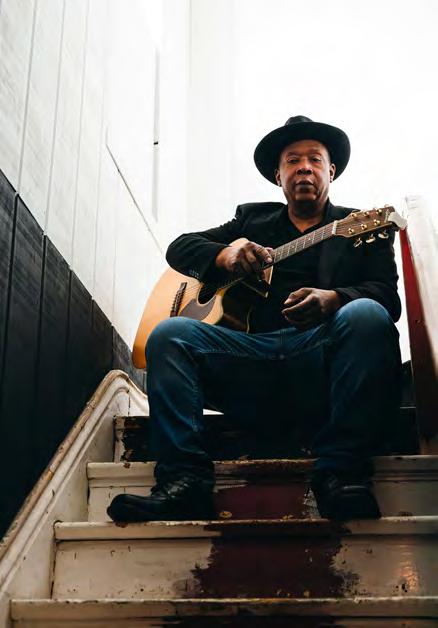
Being influenced by Kentucky musicians feels natural to Cotton because of his openness to all music. He grew up with music around him but not in a formal way. He listened to the radio a lot as a teenager and especially liked Jimi Hendrix, who got Cotton interested in playing the electric guitar. “I was pretty open to many things,” he said.
“I think one of the best things I ever did regarding music is just
his sound as blues, soul, a little jazz and Americana. “I’ve been playing out a while,” he said. “I’m getting old. I’ve been gigging a while in [Louisville].”
His most recent release, “Man Like Me,” has gotten quite a bit of airplay on local radio. Since its release, Cotton said, it “seems like the phone is ringing a little more.” Cotton is a full-time musician who entertains at
He pays attention to his listeners and adapts his show to their taste. “I had a group who liked gospel, so I’d throw in gospel. Motown. It varies,” he said.
Two listeners stick out in Cotton’s memory. One was an older woman who requested “Ripple” by the Grateful Dead. The other was a man who began dancing during the show. “Pops is getting down a little bit,” he said. It turns out the man’s son was a professional drummer.
Ever the lifelong learner, Cotton aims to learn more about the craft and become a better musician.
He’d also like to write more songs and have enough for another album. His debut album, Man Like Me , was released last February.
While Cotton’s career isn’t exactly conventional, it works for him. “A friend said I don’t follow the rules, but somehow I’m getting away with it,” he said.
Cotton’s music is available on the usual sites for streaming, and fans can check tyronecotton.com or his Facebook page for upcoming show dates.
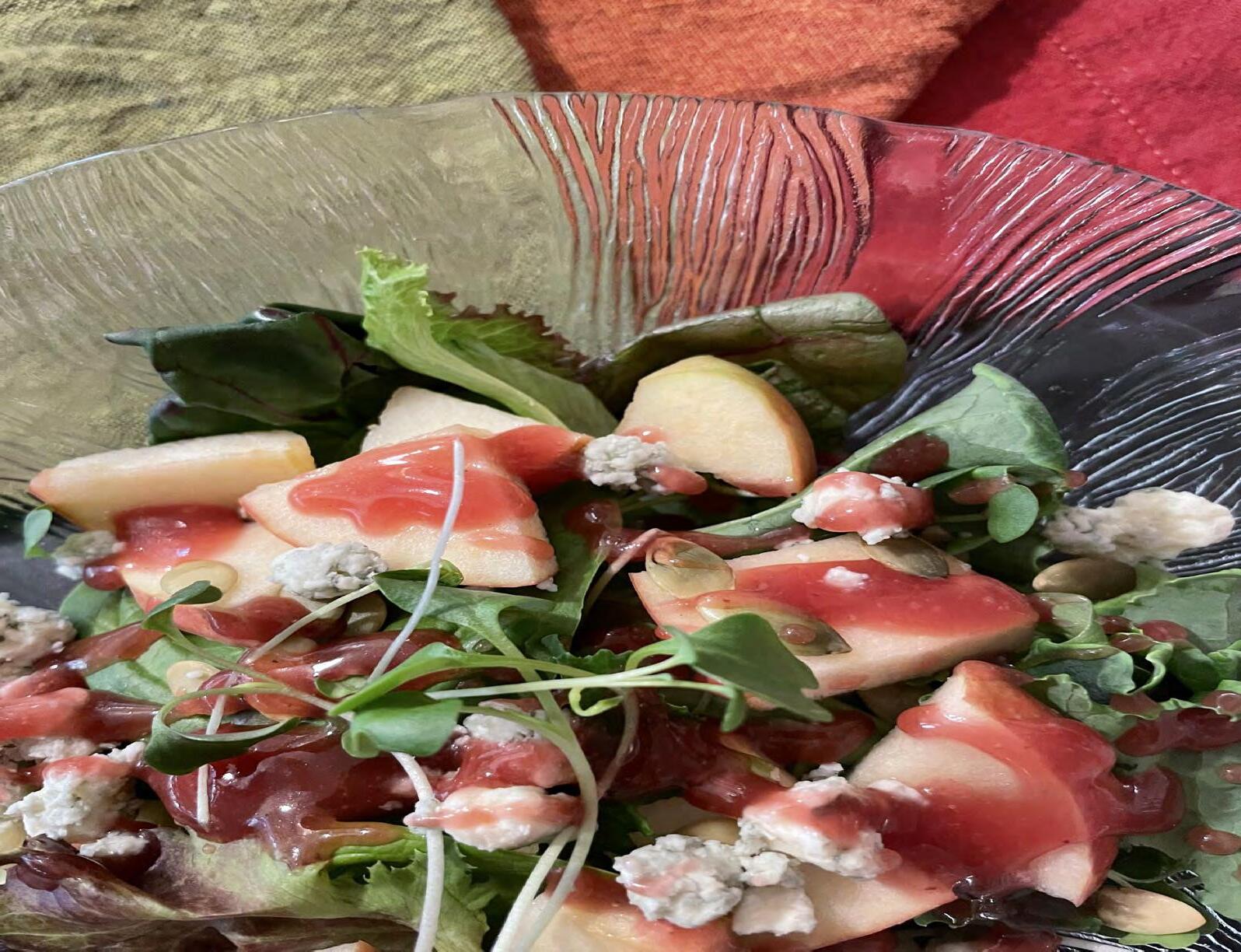
SERVES 6-8
¼ cup extra virgin olive oil
¼ cup balsamic vinegar
1 tablespoon pure maple syrup
2 cloves garlic, minced
¼ teaspoon pepper
¼ teaspoon salt, or to taste
½ -1 pound Brussels sprouts, ends removed and halved
½ -1 pound butternut squash, cut into ½-inch cubes
1 medium sweet potato, peeled and cut into ½-inch cubes
¼ cup pecans or walnuts
¼ cup shelled pumpkin seeds (pepitas)
½ cup farro or orecchiette pasta
½ cup goat cheese, crumbled
¼ cup dried cranberries
Shredded smoked chicken, if desired
1. Preheat oven to 400 degrees.
2. For the sauce, whisk together olive oil, balsamic vinegar, maple syrup, garlic, pepper and salt.
3. Place prepped Brussels sprouts and butternut squash on a rimmed 9x13-inch baking sheet lined with parchment paper. Toss with half the sauce. Roast 20-30 minutes, stirring every 10 minutes. Add pecans or walnuts and pumpkin seeds in the last 8 minutes.
4. While vegetables are roasting, cook farro or pasta according to package instructions. Toss pasta with remaining sauce, roasted vegetables, goat cheese and cranberries.
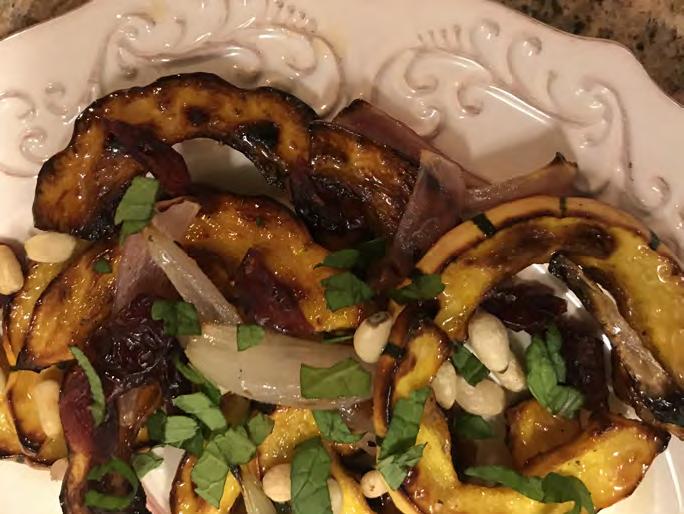
SERVES 4-6
2 delicata squash
2 shallots
1½ tablespoons avocado oil
1/8 teaspoon salt
1/8 teaspoon ground pepper
Pinch of red pepper flakes
¼ cup honey
¼ cup cider vinegar
Pinch of salt
¼ cup pomegranate seeds or dried cranberries
¼ cup pine nuts, toasted
¼ cup fresh basil, cut into strips
1. Position the oven rack in the center of the oven and preheat to 400 degrees.
2. Trim ends from the squash. Halve the squash lengthwise and scoop out the seeds. Cut the squash crosswise
into ½-inch-thick slices. Slice the shallots lengthwise. Toss the squash slices and shallots with avocado oil, salt, pepper and red pepper flakes in a large bowl.
3. Place squash and shallots on a large rimmed baking sheet lined with parchment paper. Roast in the oven 30-40 minutes, turning each piece over halfway through roasting. Cook until squash is tender and caramelized in spots. Transfer the squash and shallots to a serving platter.
4. A few minutes before serving, combine honey, vinegar, and a pinch of salt in a small saucepan; bring to a boil over high heat. Reduce heat to simmer and cook until reduced to ¼ to 1/3 cup or about 5 to 8 minutes. Immediately drizzle the syrup over the squash.
4. Serve topped with pomegranate seeds or cranberries, pine nuts and basil.

Autumn has arrived in the Bluegrass State, prompting home chefs to serve heartier dishes. Starchy vegetables—such as winter squash, sweet potatoes and pumpkin—fit the bill. Owensboro resident, Kentucky Monthly Reader Recipe finalist and registered dietitian nutritionist Merritt Bates-Thomas has provided us with recipes featuring these satisfying veggies that offer plenty of flavor and vitamin-rich nutrition.
Recipes and photos provided by Merritt Bates-Thomas, RDN, who has been sharing recipes with a healthy twist on WBKR-FM 92.5’s What’s Cooking since 2017. In May 2023, she joined ABC-25 Local Lifestyles to share recipes and tips for flavorful cooking. She also appears on CW7’s Daybreak Extra’s “Joe’s Kitchen.”You can follow her on Instagram @thekitchentransition.
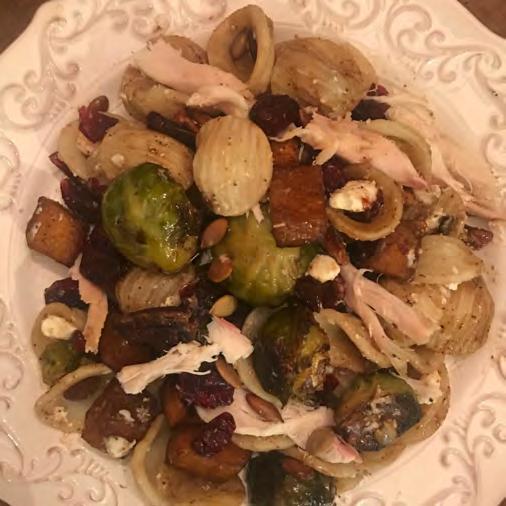
SERVES 4
8-ounce container salad greens
1 medium apple, sliced
¼ cup blue cheese crumbles
2 tablespoons pumpkin seeds (pepitas), toasted
Dressing
½ cup jellied cranberry sauce
2 tablespoons red wine vinegar
2 tablespoons olive oil
4 tablespoons water
1. Rinse and drain salad greens and place in a salad bowl.
2. Wash and cut the apple into desired shape: sliced or chopped. Add apple and blue cheese crumbles to salad greens.
2. In a skillet over medium heat, toast pumpkin seeds for about 2-3 minutes, tossing with spatula so they don’t stick or burn. Sprinkle seeds over the salad.
3. For dressing, blend together cranberry sauce, vinegar, olive oil and water. Drizzle dressing over salad just before serving or pour into a salad dressing cruet or shaker for individual servings.
SERVES 6
1 pound (about 2 medium) sweet potatoes
1½ tablespoons olive oil
Salt and pepper, to taste
3½ ounces (about 3 handfuls) arugula
½ cup pecans
¼ cup red onion, diced
¼ cup dried cranberries
2 ounces goat cheese or feta, crumbled
Dressing
1 tablespoon honey
2 tablespoons lemon juice
2 tablespoons extra virgin olive oil
½ teaspoon Dijon mustard
¼ teaspoon poppy seeds
1. Preheat oven to 400 degrees.
2. Peel sweet potatoes and cut into ½-inch cubes or ½-inchthick slices, with each cut into fourths. Place potatoes in a bowl, drizzle with olive oil, and sprinkle lightly with salt and pepper. Toss well to coat. Pour onto baking tray lined with parchment paper.
3. Roast for 20 minutes, then flip cubes and roast for an additional 10 minutes or until golden and lightly caramelized.
4. While sweet potatoes are roasting, mix honey, lemon juice, extra virgin olive oil, Dijon mustard and poppy seeds in a salad dressing shaker or jar. Blend ingredients with a small whisk to get honey off the base, then shake well until combined.
5. Toast pecans in a dry skillet over medium high heat for 3 minutes or until they smell nutty. Remove pecans to cool.
6. To assemble, place sweet potatoes, arugula, red onion and dried cranberries in a bowl, reserving pecans and cheese for garnish. Drizzle with most of the dressing, then toss gently.
7. Transfer into a serving bowl and garnish with pecans and cheese. Drizzle with remaining dressing.

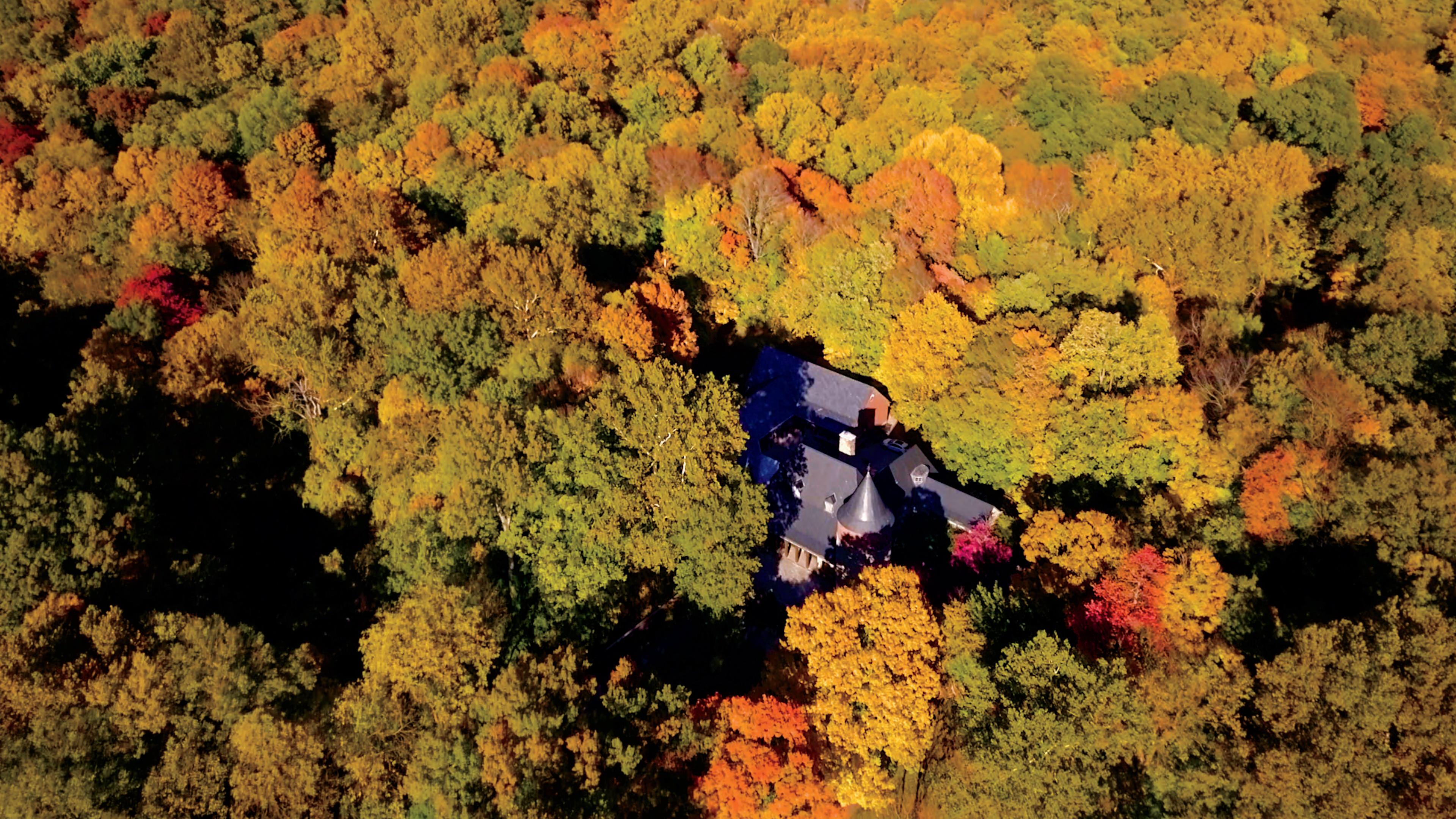

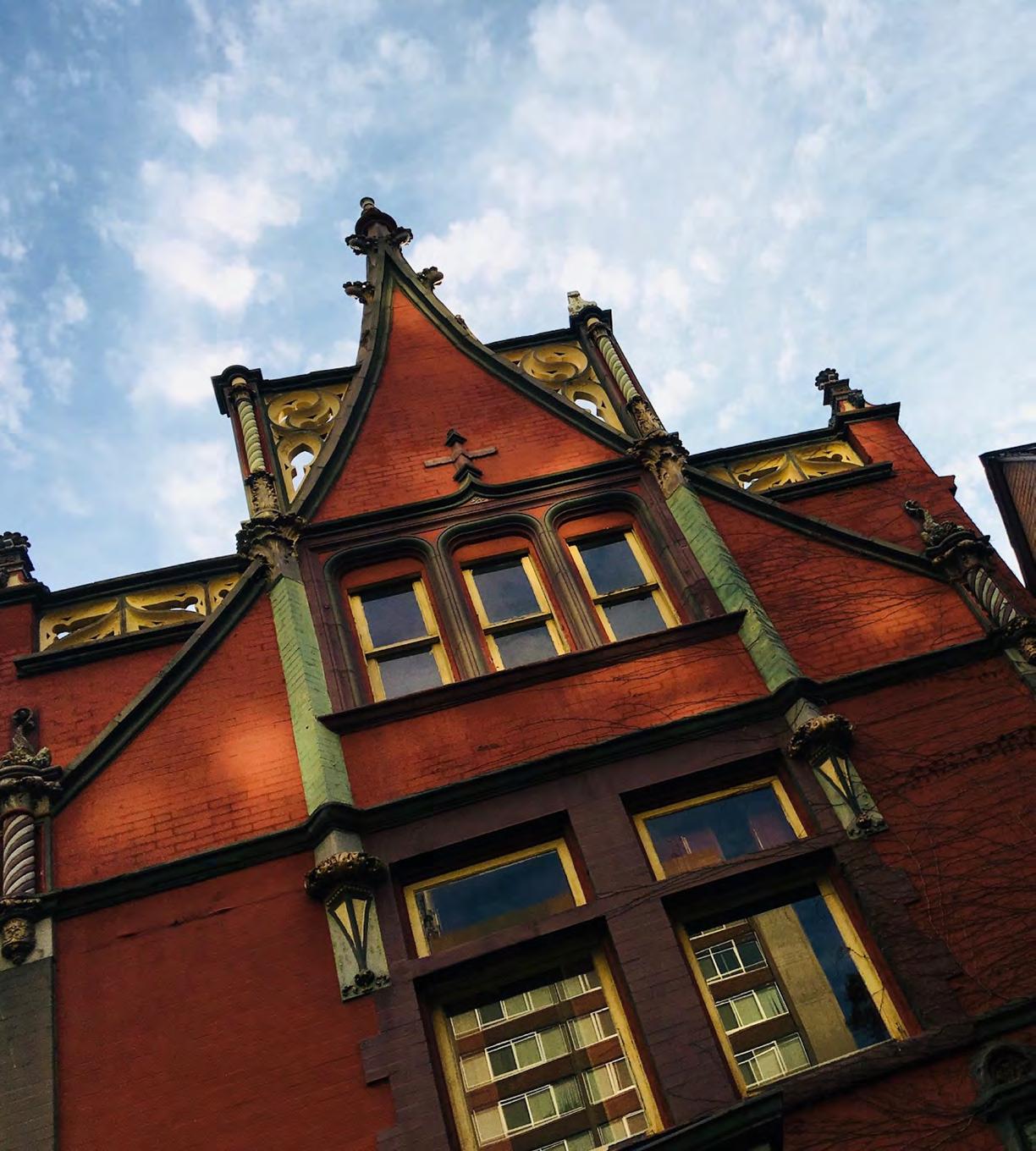
BY TRACEY TEO

If there’s something strange in your neighborhood, who ya gonna call? Forget Ghostbusters. Call David Dominé if your ghost is in Old Louisville, one of the country’s largest historic preservation districts that some say is the most haunted.
Dominé, an award-winning Louisville author and historian, has written several books about supernatural encounters in his former stomping ground, where flickering gas lamps cast an eerie glow on Victorian mansions. He won’t “bust” your ghost, but he might add it to the cast of dearly departed characters on his Old Louisville Ghost Tour.
The gleefully ghoulish 90-minute walking tour stops at several architectural wonders, where shadowy figures flit in the windows of turrets, and gargoyles grimace in the moonlight.
Dominé started the tour 20 years ago because he had his own ghost when he moved into the Widmer House on Third Street in 1999. The previous owner warned him to try to get along with “Lucy,” a poltergeist who disliked pictures hanging on a wall in the butler’s pantry. Dominé disregarded this piece of advice and hung his pictures.
They never stayed there for long. The pictures would come crashing down in the middle of the night, no matter how securely they were affixed to the wall.
Furniture rearranged itself in the wee hours, and Dominé’s dogs and cats sometimes became inexplicably agitated, as though a stranger had entered the room when nobody was there.
He wasn’t alone. Half the neighborhood had a story about an unsettling experience or knew someone who did.
The place was a hotbed of paranormal activity. Some of Dominé’s friends who embrace the metaphysical offered a theory that the homes retain energy and imprints, making it possible for memories to be “played back.”
Dominé is a skeptic despite his encounter with Lucy. To get to the bottom of the creepy goings-on, he meticulously researched the history of the neighborhood and its previous residents. He uncovered a treasure trove of stories and decided to share them through his books that include Ghosts of Old Louisville: True Stories of Hauntings in America’s Largest Victorian Neighborhood and Voodoo Days at La Casa Fabulosa: An Unconventional Memoir
The ghost tour—a hair-raising mix of fact, fiction, folklore and true crime— brings Old Louisville’s colorful past to life (or, more to the point, back from the dead).
“On the tour, we don’t try to convince anybody that the ghosts are real,” Dominé said. “We use the stories as a vehicle to talk about the history of the neighborhood.”
Whether you are a believer or not, it’s fascinating to see the palatial houses where Kentucky’s tobacco titans and bourbon barons lived like royalty during the Gilded Age.
You don’t have to believe in ghosts to get a spine-tingling chill at the “murder house,” a key stop on the tour.
In Dominé’s latest book, A Dark Room in Glitter Ball City: Murder, Secrets and Scandal in Old Louisville, he reveals that, while house hunting, he toured the brooding mansion on South Fourth Street before it became infamous
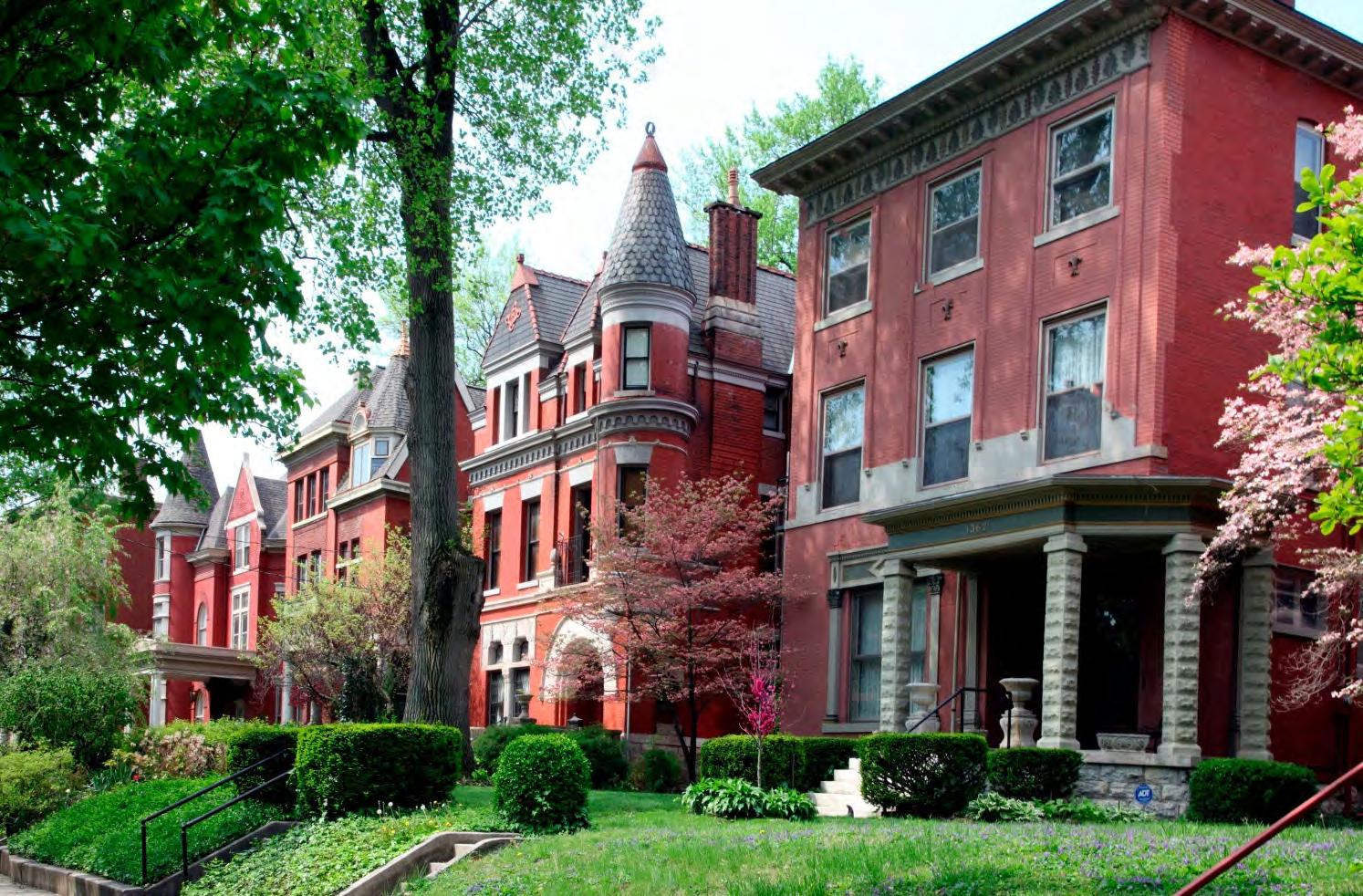
citywide. He admired the majestic mahogany staircase, leaded glass windows and, most of all, a vast wine cellar that could house a large collection.
Dominé didn’t buy the 11-bedroom home and put it out of his mind until it became a news sensation, the site of a gruesome crime that rocked the city in 2010. A drag queen, kinky sex and illegal drugs weave a story that is stranger—and, in this case, scarier—than fiction.
When police responded to a domestic dispute at the residence, a terror-stricken Jeffrey Mundt said his boyfriend, Joseph Banis, tried to murder him. Then he made a chilling accusation: Banis had murdered before, and the body was buried in the basement wine cellar.
The couple had met drag queen Jamie Carroll on a gay adult website and got together for a drug-fueled orgy that ended with Carroll shot and stabbed. Mundt said he was forced to help bury the entertainer.
Dominé’s dream wine cellar had been transformed into a nightmare reminiscent of an Edgar Allen Poe tale. Even though the body wasn’t there when Dominé toured the house, it still gives him the heebie-jeebies to think about it.
Not every house has such a sordid past.
The Pink Palace (which appeared on the March 2022
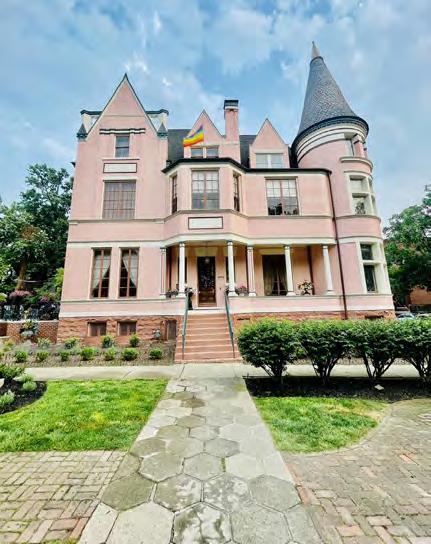
cover of Kentucky Monthly), a landmark mansion on St. James Court, is home to Mr. Avery, the benevolent ghost of a former owner who lived there in the 1890s. He’s a harbinger of danger to living residents and warns them when something sinister is afoot.
One of the best-known stories of Mr. Avery involves him startling a woman while she was in the bathtub, but he was no peeping Tom. He was there to save her life. The sight of the apparition caused the woman to jump out of the water, and, seconds later, vandals sent a concrete block crashing through the window and into the tub where she had been having a relaxing soak moments before.
This stop contains another mystery: Why does a flamingo-hued mansion loom over the elegant red-brick and gray-stone houses in this mecca of Victorian splendor? It doesn’t exactly blend in.
Dominé explained that the 1890 structure was once a red-brick gentlemen’s club and casino, where wellheeled businessmen gathered to woo Lady Luck and sip bourbon. When the Louisville chapter of the Woman’s Christian Temperance Union, an organization that opposed alcohol and gambling, moved its headquarters into the Chateau-style building in the 1920s, it tried to purge its sinful past by painting it pink. It’s now a private residence.

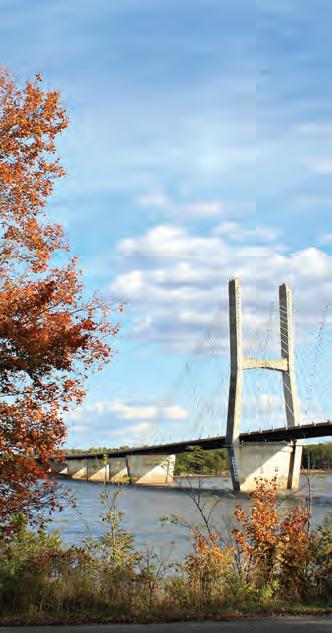






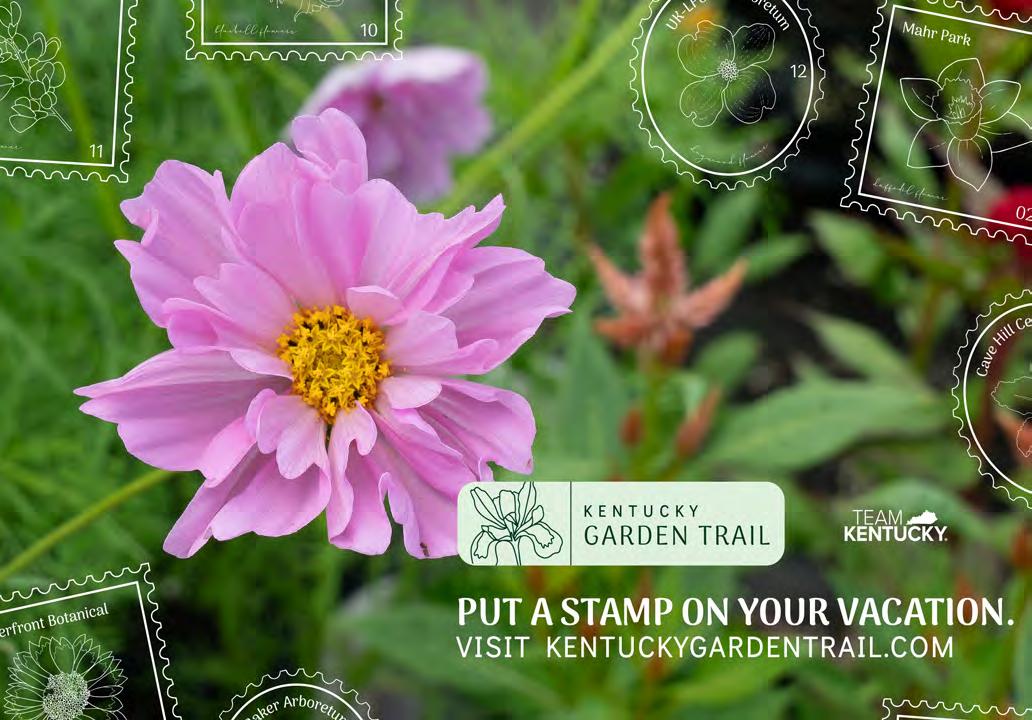
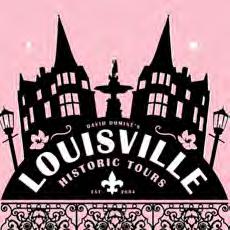
On the Victorian Ghost Walk held Oct. 18-20, tourgoers are guaranteed to see otherworldly apparitions. The spooky fun starts at the Conrad-Caldwell House Museum, a three-story grand dame on St. James Court, and moves on to several privately owned homes, providing a rare chance to peek inside. At each location, costumed actors portray a ghost that refuses to cross over.
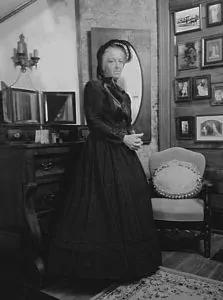
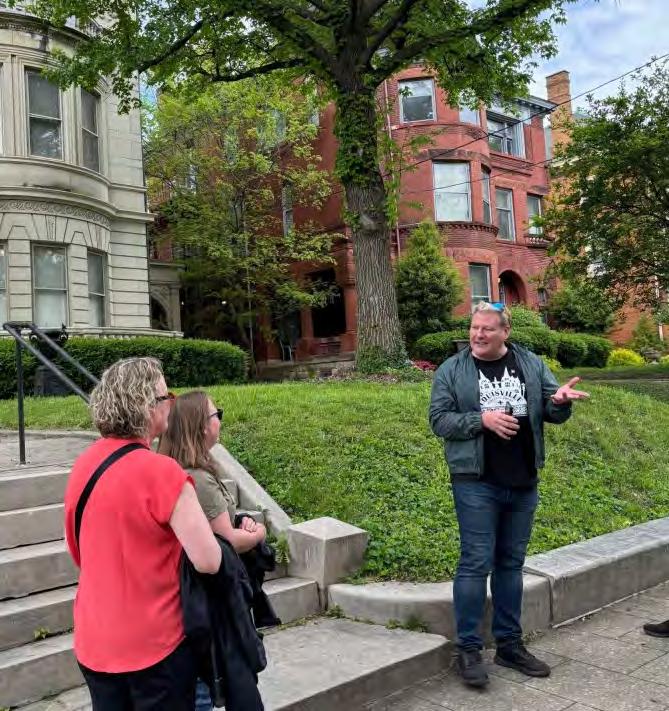
“It’s the perfect blend of history, architecture, and storytelling, all delivered with a healthy dose of David Dominé’s expertise. Do yourself a favor and book this tour—you won’t regret it!”
Chelsea Gilson My KY Bucket List
mykybucketlist.com
Meet Lucinda, an insane, griefstricken woman who proclaimed herself “Queen of America,” and the influential businessman who, according to legend, was murdered by his scorned mistress.
The two-hour tour departs every 15 minutes starting at 6 p.m. For tickets and more information, visit louisvillehistorictours.com/ victorian-ghost-walk
Louisville Historic Tours offers several tours of Old Louisville, and not all of them focus on the paranormal.
The Old Louisville Walking Tour and the Secrets and Scandals of Old Louisville Walking Tour are popular. For a full tour list, visit louisvillehistorictours.com
At the First Church of Christ, Scientist, Dominé recounted the story of the Lady on the Stairs, a tear-jerker that casts a melancholy shadow over its listeners. Local lore has it that an apparition in white waits eternally on the church stairs for her fiancé to make her his bride, unaware that he was one of hundreds of soldiers struck down by the influenza epidemic of 1918 at Louisville’s Camp Zachary Taylor. The bride soon died, too, perhaps going to her grave believing she had been jilted by the love of her life.
The tour group shuffled through the carcasses of fallen leaves littering the sidewalk until arriving at the Witches’ Tree, which is gnarled and knotted, its bare branches resembling skeletal hands. If the malicious Whomping Willow from Hogwarts had a sibling, this would be it.
According to folklore, it was once the site of a beautiful maple tree beloved by a coven of witches, who used to have clandestine meetings beneath its lush branches.
When the tree was cut down by the city for an 1890 May Day celebration, the outraged witches put a curse on Louisville, warning its citizens to “Beware the 11th month.” Exactly 11 months later, they unleashed their wrath through a powerful tornado that killed dozens and caused widespread damage. A lightning bolt struck the maple’s stump, and the next day, the misshapen tree appeared in its place.
Today, the tree is adorned with a bizarre collection of beads, dolls and other tributes meant to appease any modern witches.
Dominé no longer lives in Old Louisville, but he joked that he might return in the afterlife.
“When I’m gone, I plan on coming back and haunting the neighborhood to make things more interesting for future tour guides,” Dominé said with a laugh. Q
ARGILITTE
Black’s Bookshop, 7625 Romeo Ridge, 606.922.2805 blacksbookshop.com
FORT THOMAS
Blue Marble Books, 1356 South Fort Thomas Avenue, 859.781.0602 bluemarblebooks.com
ASHLAND
Broadway Books, 1537 Winchester Avenue, 606.694.7100 broadwaybooksaky.com
LOUISVILLE
Carmichael’s Bookstore, 1295 Bardstown Road, 502.456.6950 carmichaelsbookstore.com
LOUISVILLE
Carmichael’s Bookstore, 2720 Frankfort Avenue, 502.896.6950 carmichaelsbookstore.com
MOREHEAD
CoffeeTree Books, 159 East Main Street, 606.784.8364 coffeetreebools.com
LEXINGTON
Joseph-Beth Booksellers, 161 Lexington Green Circle, 859.273.2911 josephbeth.com
MAYSVILLE
Kenton Stories with Spirit, 11 West Second Street, 606.407.6037 kenton.social
STANFORD
Kentucky Soaps & Such, 203 West Main Street, 606.365.0808 kentuckysoapsandsuch.com
DANVILLE
Plaid Elephant Books, 115 North Third Street, 859.449.2100 plaidelephantbooks.com
FRANKFORT
Poor Richard’s Books, 233 Broadway Street, 502.223.8018 poorrichardsbooksky.indielite.org
HAZARD
Read Spotted Newt, 221 Memorial Drive, 606.373.4811 readspottednewt.com
COVINGTON
Roebling Books & Coffee, 306 Greenup Street, 859.292.1560 roeblingbooks.com
DAYTON
Roebling Books & Coffee, 301 Sixth Avenue, 859.308.7086 roeblingbooks.com
NEWPORT
Roebling Books & Coffee (and Art), 601 Overton Street, 859.669.3181 roeblingbooks.com
EDDYVILLE
The Shire Bookstore, 115 Newman Drive, 254.245.0439 theshirebookstore.com
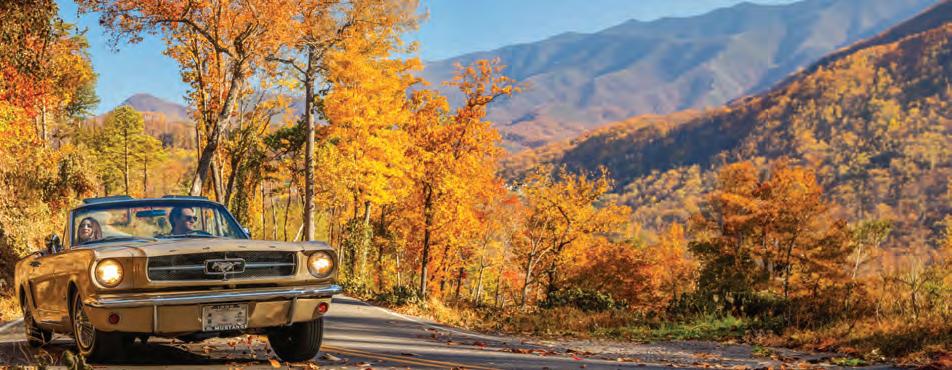


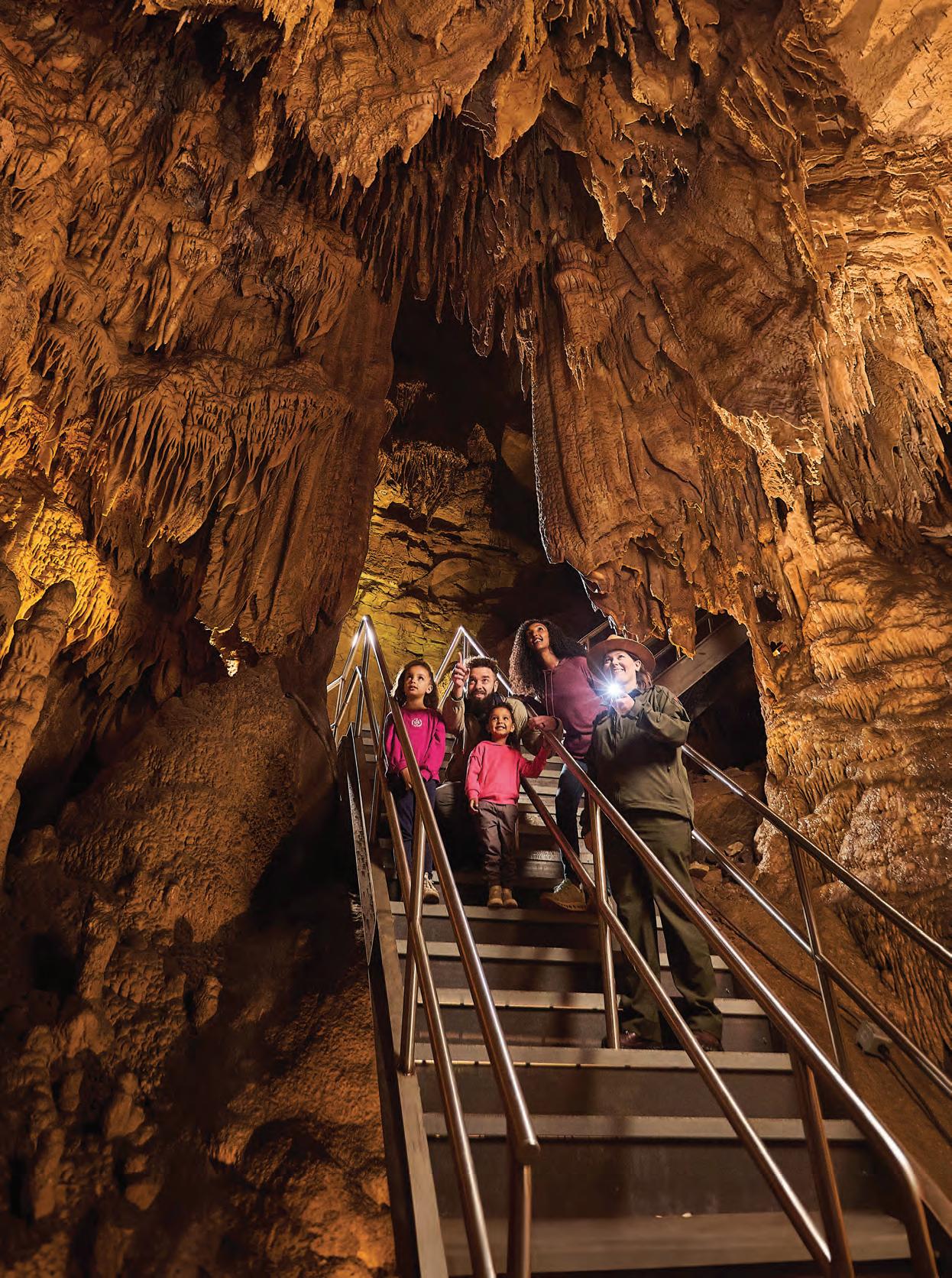



Come See For Yourself!
Known as the Horse Capital of the World and the epicenter of Bourbon Country, the Bluegrass State is also a land of immense natural beauty and outdoor attractions.
Sip centuries of tradition in the birthplace of bourbon and tour distilleries to learn how Kentucky’s signature spirit is made. Stroll through rolling horse farms, catch a race at the track and take a trail ride through the forest. Visit epic family attractions, vibrant cities and charming small towns. Explore woods, waters, caves and trails offering endless outdoor adventure. KentuckyTourism.com

Plan Your Trip to Cadiz
Considered the region’s biggest festival of the year, the Country Ham Festival swells the little town of 2,600 to over 50,000 for one weekend each October. The festival is two days packed with pork-oriented cuisine, carnival rides, over 200 street vendors and live music acts that make feet tap and crowds dance. GoCadiz.com/HamFest



Visit Harlan, KY
Witness the unspoiled beauty of the Appalachian Mountains from Kentucky’s highest peaks. Then, head underground to tour Portal 31, Kentucky’s only animatronic mine tour. Experience the thrill of a lifetime by riding your ATV or side-by-side at Black Mountain Off-Road Adventure Area or Kentucky’s highest, fastest and longest zip line at Black Mountain Thunder Zipline. For local fare and boutique shopping, explore downtown Harlan. HarlanTourism.com


kentuckytourism.com

Come Visit Central City
Celebrate legends like The Everly Brothers, John Prine, Merle Travis and Jim Walker at the Muhlenberg Music Museum. Come visit the Merle Travis Center, the site of the annual International Thumbpickers Contest.
Then, stop by Festival Square to snap a photo with bronze statues of The Everly Brothers and Prine. The attraction pays tribute to the artists’ immense contributions to the community, including the Everly Brothers Homecoming Music Festival, which featured a who’s who of performers over the years, including Billy Ray Cyrus, Sawyer Brown, Keith Urban, Tammy Wynette, Neal McCoy, The Kentucky Headhunters and Travis Tritt.
Come see Kentucky’s motorsports tradition at the Kentucky Motorsports Hall of Fame & Museum. Open year-round, the museum features more than 40 auto and motorcycle displays, covering everything from pit crews and drivers to salt flats and dirt tracks to Daytona and the Indy 500. Be sure to circle the annual Hall of Fame Induction on your calendar.
CityofCentralCityKY.com
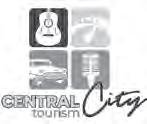


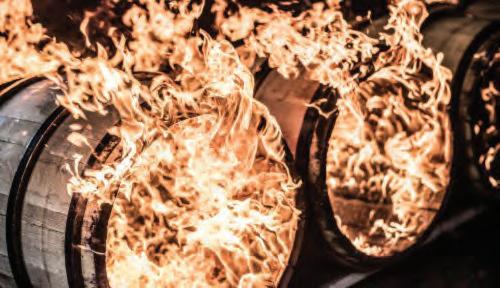
The Heart of Kentucky Lebanon is the Heart of Kentucky and the Kentucky Bourbon Trail®. Experience the beauty of historic Maker’s Mark Distillery and tour the Kentucky Cooperage to see how bourbon barrels are hand-crafted. Finish your visit with a trip to our one-of-a-kind Limestone Branch Distillery to take home their famous Yellowstone Bourbon. VisitLebanonKY.com

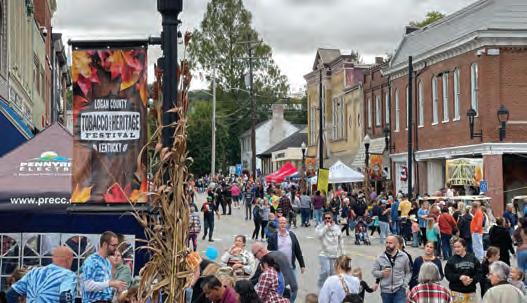
The Logan County Tobacco & Heritage Festival is the county’s largest community event each year, attended by an estimated 30,000 people. Set for September 28 – October 12, the festival includes more than 20 family-friendly events, including historic walking tours, a golf scramble, a reenactment of the 1868 Jesse James robbery and the festival’s biggest event, the annual Festival Parade. TobaccoFest.org

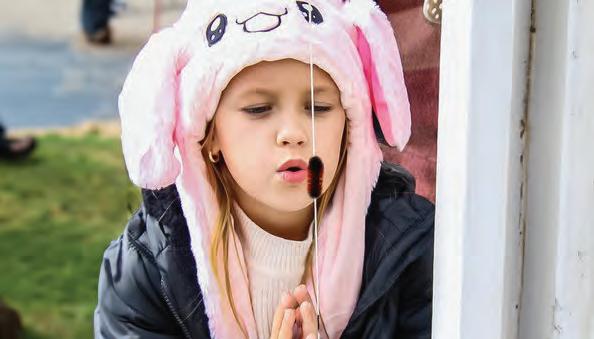
Explore Lee County Kentucky.
Discover unforgettable moments and memories throughout Lee County, from festivals to regional cuisine, music to arts & crafts. And be sure to experience the annual Woolly Worm Festival in Beattyville, October 25-27. With fantastic woolly worm races, live entertainment, delicious foods, a vibrant parade, car show and much more.
VisitLeeCountyKY.com

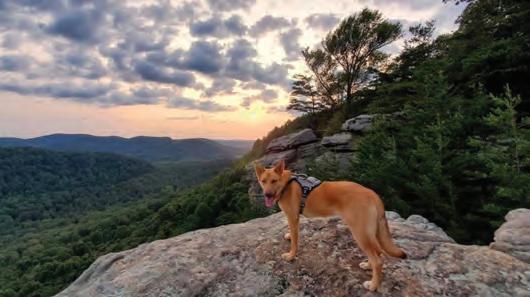
Plan a Berea Vacation
Take in the breathtaking views of Berea, where the rolling foothills of the Appalachian Mountains meet the bluegrass! As a certified Kentucky Trail Town, outdoor enthusiasts can craft their own adventure. Experience the Arts and Crafts Capital of Kentucky by watching artists at work, exploring local galleries and shops or taking a class through Berea Tourism’s LearnShop Program.
VisitBerea.com

kentuckytourism.com

Explore Lake Malone State Park
Engaged in all kinds of thrilling activities, the larger-than-life Big Twigs family is inviting you to share in all the fun at Lake Malone State Park. These enchanting characters – from 10-17 feet tall – are ready and waiting for your unforgettable selfies.
Lake Malone State Park also features a nature inspired butterfly wing mural in the campground. Along with a picturesque beach, fishing, picnic shelters, a playground and more. The park and all of the attractions are free to visit from dawn to dusk, beginning in mid-March through mid-November.
VisitMuhlenberg.com

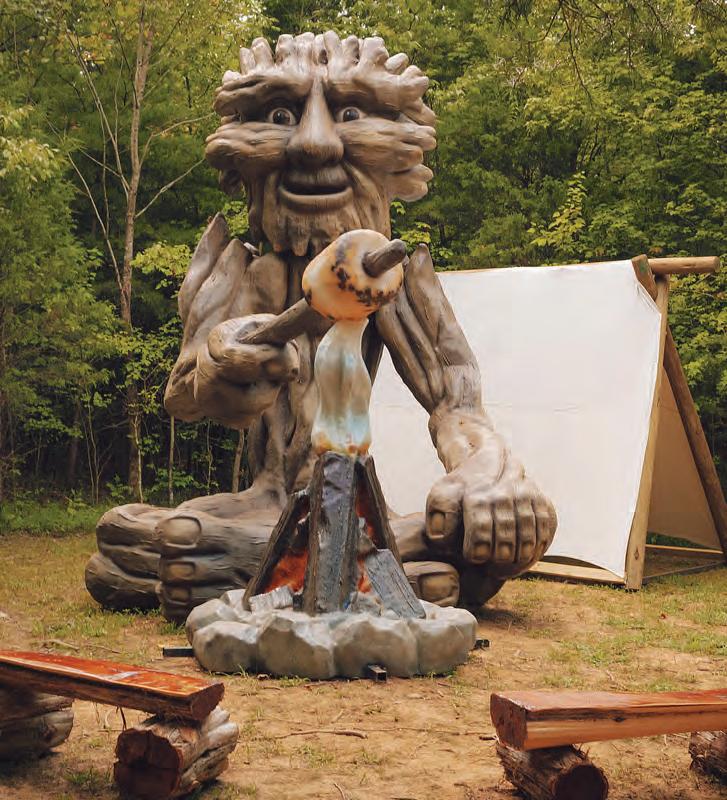
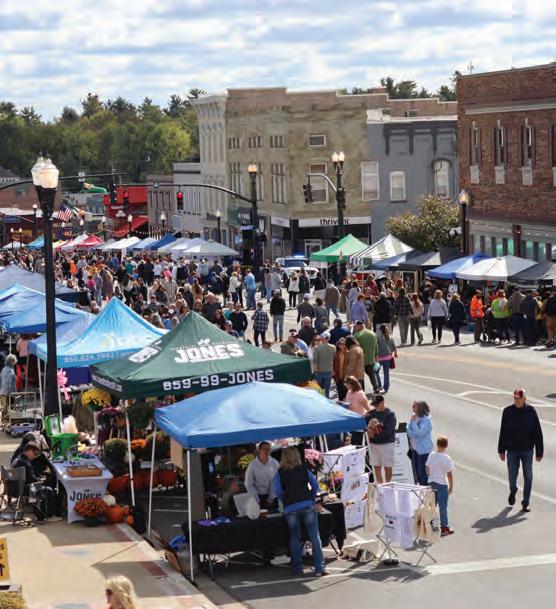
Explore the annual Millstone Festival
Discover unique designs & crafts from a variety of artisans. Listen to lively local entertainers. Indulge in the delicious aromas and menus of several food vendors. And ignite your senses of joy and wonder. Join in all the thrills of the 5th Annual Millstone Festival in downtown Richmond on Saturday, October 5 – from 11 a.m. to 8 p.m.
Celebrate the area’s rich history and distinctive Kentucky culture. During the festival, be sure to explore the charming downtown area and boutique shops, along with quaint neighborhoods and all kinds of walking trails within minutes of downtown.
VisitRichmondKY.com




Experience Hodgenville Historic District
Wander through the pivotal points in the life of the 16th President at the Lincoln Museum, with life-size dioramas, period artifacts, a collection of wax figures, original artwork and Civil War memorabilia. The museum is just three miles north of Abraham Lincoln’s Birthplace National Historical Park and seven miles west of Lincoln’s Boyhood Home at Knob Creek. LincolnMuseum-KY.org

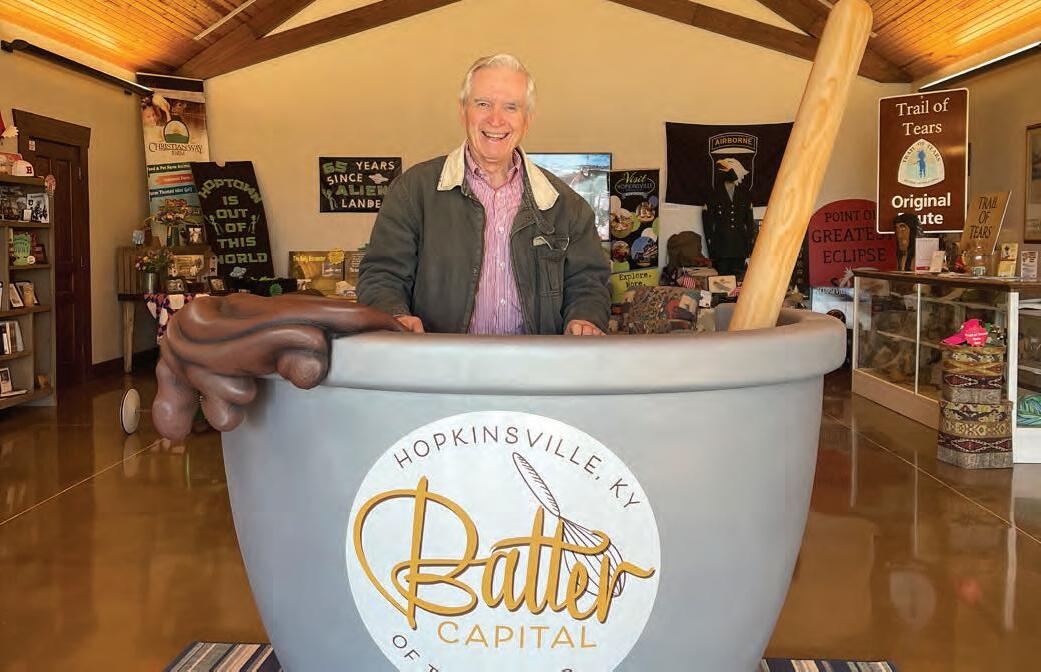
Find history, mystery and adventure in Hopkinsville Hopkinsville, Kentucky, is a place where sweet adventures await. Over three million bushels of soft red winter wheat are harvested annually. As the leading wheat-producing county in Kentucky, Hopkinsville is responsible for globally recognizable products like Ghirardelli brownie mix, Krusteaz products, Red Lobster Cheddar Bay Biscuit Mix, SunFlour cornmeal and more. This is why Hopkinsville, KY, is known as the Batter Capital of the World ®! VisitHopkinsville.com


Eat, Drink & Be Scary
Celebrate spooky season in Graves County. Haunted Graves is a month-long celebration of all things Halloween. The county is also home to fall fun zones like the Bluegrass State’s largest corn maze at A-Maize-ing Farms and two haunted attractions – Industrial Slaughterhouse in Fancy Farm and Talon Falls ScreamPark in Melber. While you’re here, be sure to check out stops along the Western Kentucky Wine Trail, the West Kentucky BBQ Trail and the Kentucky After Dark Paranormal Passport. VisitMayfieldGraves.org

BY AMANDA CORBIN
Here’s a surprising effect of the COVID-19 pandemic: New independent bookstores have opened across the country, including Kentucky, where more than 20 new bookstores have opened since 2020. With the pandemic, people confined to their homes started to read more, creating a higher demand for books. As businesses began to reopen, those new independent bookstores became community centers for those who like to buy local.
“We’ve seen tremendous growth since the beginning of the pandemic,” Allison Hill, CEO of the American Booksellers Association, told USA
Today. “That has been a pleasant surprise for us here at the ABA, and for bookstores and their communities.”
Each store is unique in how it competes with internet retailers. Some offer inventory in addition to books, some host special events or activities, a few cater to niche markets (horror, romance, children’s), and they offer a personal touch not available to online shoppers.
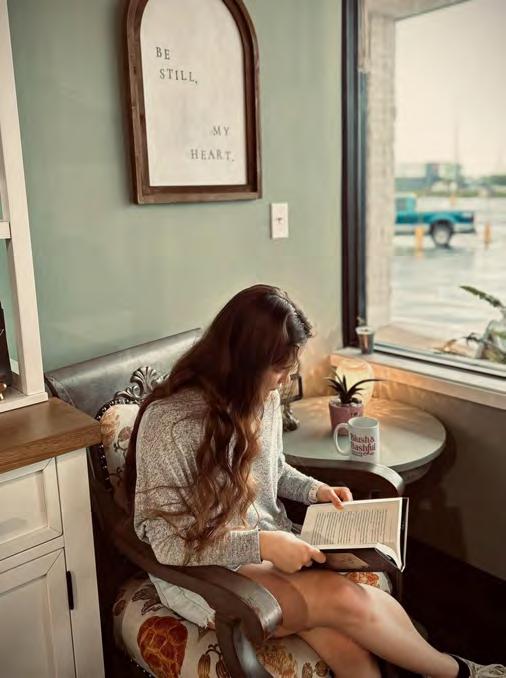
3012-B Fort Campbell Boulevard, Hopkinsville 270.839.9727 • blushbashfulbooks.com
Blush & Bashful is a haven for romance lovers, with a beautiful bookish backdrop for photos and books in every sub-genre, from dark fantasy to rom-com. The shop, owned by Emily Ezell, hosts author signings and other romance-themed events.

990 Barret Avenue, Louisville • horrorbookstore.com
The spooky season lasts all year long at Butcher Cabin Books, where author and owner Jenny Kiefer operates a niche bookstore that offers new and used horror books and other items for thrill seekers.
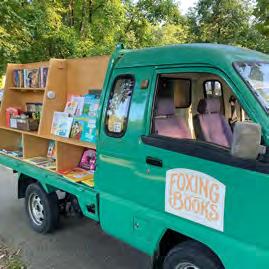
1314 Bluegrass Avenue, Louisville
502.536.8858 foxingbooks.com
Owned by Kelly Nusz, Foxing Books got its start as a bookmobile and now has a storefront in south Louisville. Aiming to make books available to every neighborhood in the city to help foster a love of reading for all, the shop carries books and other merchandise for adults, teens and children.
601 Commerce Drive, Owensboro
Facebook:
Displaced Pages
Inside T&T Vendors Mall in Owensboro is Displaced Pages, a micro-bookshop owned by Virginia Hardesty that carries new and used books and gifts for the book lover. Displaced Pages also sets up at local cafes, breweries, and street fairs and hosts events such as book fairs.

201 East Pike Street, Cynthiana
859.569.3078 • thenextchapter41031.com
In downtown Cynthiana, across from the “Walking Dead” mural and beside Boyd’s Station Gallery, is The Next Chapter, a community-minded bookstore owned by Andrew and Betsy Owen that stocks new releases. The store and other local businesses participate in fall-themed events, tours and festivals throughout the season.
1537A Winchester Avenue, Ashland 606.694.7100 • broadwaybooksaky.com
Part of Ashland’s downtown resurgence, Broadway Books was opened by friends Jill Donta and Nancy Miller. The spacious bookshop has new and used books, gifts by local artisans and a large children’s section with activities to keep kids entertained while their parents shop.

BELT BOOKS
410 West Pike Street, Covington 859.360.2311
conveyorbeltbooks.com
With the credo “all killer, no filler,” Conveyor Belt Books, owned by Brandon Thomas DiSabatino, specializes in used and rare books with an eclectic mix of topics. The bookstore collaborates with others to host poetry readings, film screenings, popups, live music and other performances.
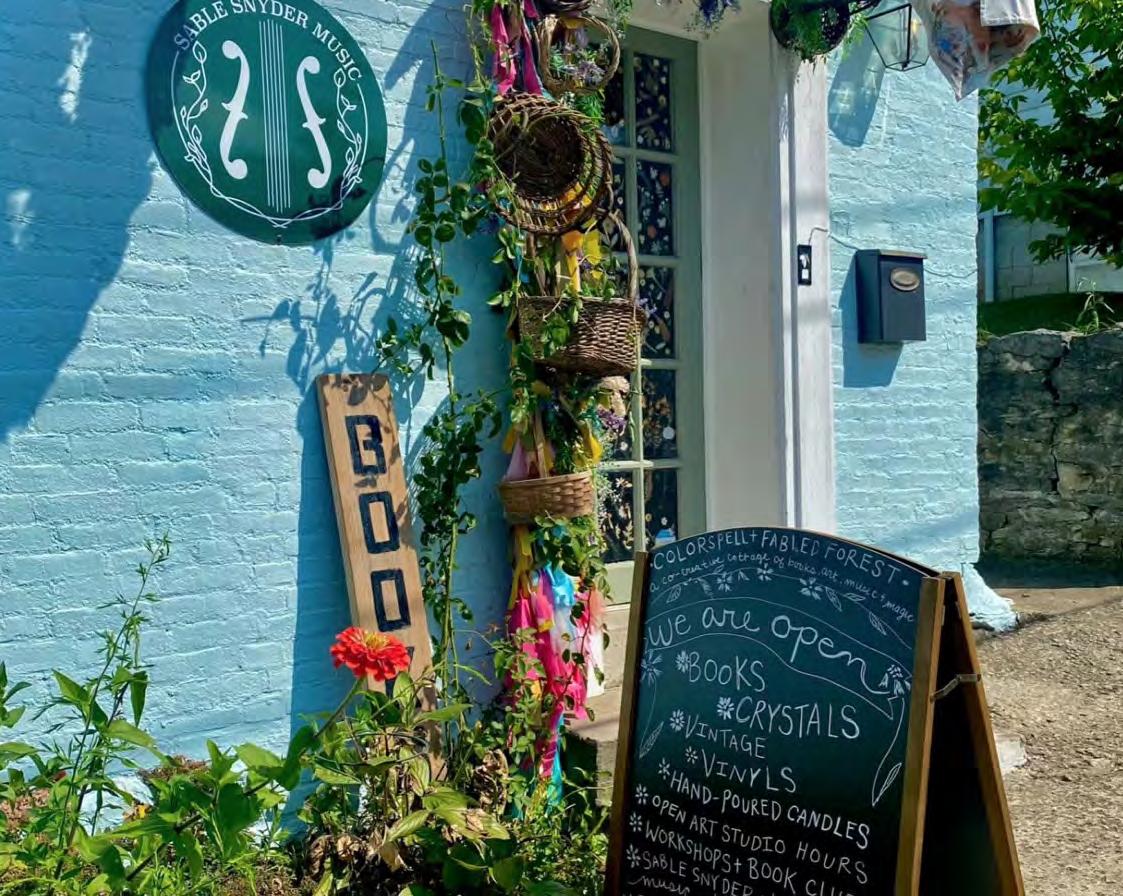

11 West 2nd Street, Maysville
606.407.6037
kenton.social
In Maysville, Kenton Stories with Spirit offers pottery, paintings, jewelry and textiles created by local artists; a selection of new books; and a restaurant/bar that serves food, coffee and bourbon. Owned by Bruce Carlson, the shop is managed by Dee Werline and her husband, Skip
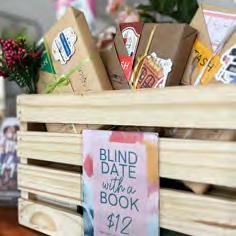
10512 Watterson Trail, Louisville
502.509.5410
anovelromance.com
The state’s first-ever romance bookstore opened last year and quickly outgrew its first location. Now in a larger space, A Novel Romance, owned by Jonlyn Scrogham, is home to several book clubs and a writing group, enabling readers and writers to find their happily ever after.

304 Main Street, Murray
270.216.0863
bolinbooks.com
Bolin Books carries new and used books with a focus on vintage and rare titles. It also has a children’s section. Through their preservation of a 140-year-old building, owners Whitney and Wesley Bolin contribute to a revitalized downtown, where visitors can take a historic walking tour or a mural walk.
146 South Broadway Street, Georgetown
859.361.9490
fabledforestky.com
“Magical” is the vibe at Fabled Forest Books and Gifts in Georgetown, where you can get a tarot reading or memorialize a person or event in your life on the book mural that decorates the stairs. The shop, owned by Bobbi Craig, carries books for children and adults, and most gift items are locally sourced.
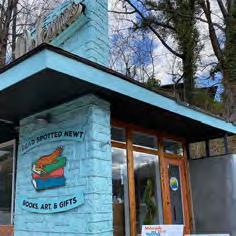
221 Memorial Drive, Hazard
606.373.4811
readspottednewt.com
Owned by Mandi Fugate Sheffel, The Read Spotted Newt opened in Hazard just before the pandemic but survived the shutdown and 2022 flooding. The shop has become known across the region for fostering a writing community, promoting Appalachian storytelling, and inspiring young readers.
205 East Main Street, La Grange • 502.293.0496
160 Frank E. Simon Avenue, Shepherdsville 502.531.0032
fromthegroundupbooks. com
Author and owner Lynne Tincher’s mission is to help build writers, artists and bookstores From the Ground Up. Both locations carry all genres of new and used books and items from local artists and craftspeople. From the Ground Up offers mentorship programs, classes and writers’ groups for aspiring authors and hosts book clubs, author signings and other events.
113 East Main Street, Midway
859.753.4962
alikelystoryky.com
Halfway between Frankfort and Lexington, historic Midway is home to A Likely Story. This family-owned bookstore, owned by mother-anddaughter pair Ashlee and Anagail “Annie” Denington, carries new and used books starting at $1 and hosts author events. It includes a community room, a children’s area and a reading nook inside an old bank vault.
116 North 3rd Street, Danville
859.449.2010
plaidelephantbooks.com
The Plaid Elephant, owned by Kate Snyder, is Central Kentucky’s only independent children’s bookstore. This kid-focused shop carries everything from board books to young adult literature and hosts a
variety of events, including mosaic classes. With its colorful décor and large selection of books, stuffed animals and gift items, it is a magical place to browse, making it a destination for families.

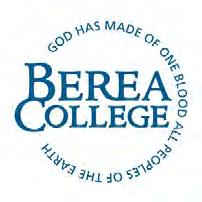







118 North Fort Thomas Avenue, Fort Thomas 859.442.0118
thehiddenchapter.com
The Hidden Chapter, owned by Dave and Lacey Mulcahy, offers a fairy-tale atmosphere (think crystal chandelier, shiny gold ceiling and crackling fireplace). The store hosts a variety of events from poetry nights to stand-up comedy. It also serves coffee and spirits.
There is value in the experience of visiting a local bookstore, browsing its shelves, and discovering that special something we didn’t know we were looking for. Find a selection of well-established independent booksellers in Kentucky worth visiting on our website.
21 North Main Street, Monticello
606.753.6125
msbmonticello.com
Charity and Rhett Ramsey of Monticello bought a 123-year-old building after it was damaged by fire, and out of its ashes, Main Street Books was born. The bookstore celebrated its one-year anniversary this summer.
3147 Lone Oak Road, Paducah • 270.816.1771
Facebook: Pages Turned, LLC
Nestled in a two-story house just outside of downtown Paducah is Pages Turned, a shop with used books and other media. Thanks to its trade-in policy, Pages Turned, owned by Kimberly Ferguson, has a constantly changing inventory, and it hosts book signings for Paducah-area authors.
115 Newman Drive, Eddyville
254.245.0439
theshirebookstore. square.site
An avid reader and book collector, Anna Tobey started selling new and used books online and then opened The Shire Bookstore in Eddyville’s Lakeway Plaza to also serve as a community space with nights for knitting, poetry, games such as Dungeons & Dragons, and more.
204A Estill Street, Berea 859-302-8757
thetalelessdog.com
Housed in a 100-year-old cottage owned by Berea College, The Taleless
Dog offers adult, young adult and children’s books as well as gifts for book lovers. The bookshop is so cozy, it was adopted by a tailless cat, now named Nora. The Taleless Dog’s owners, Clark and Susan Buckmaster, liken their shop to “a candy store for bibliophiles.”
1512 Portland Avenue, Studio 11, Louisville setandsettingshop.com
Set & Setting started as an online shop with a curated selection of affordable used books and now has a permanent location in Louisville’s Portland neighborhood. The shop, owned by Kaleigh Basso, carries all genres of fiction, nonfiction and poetry. Q
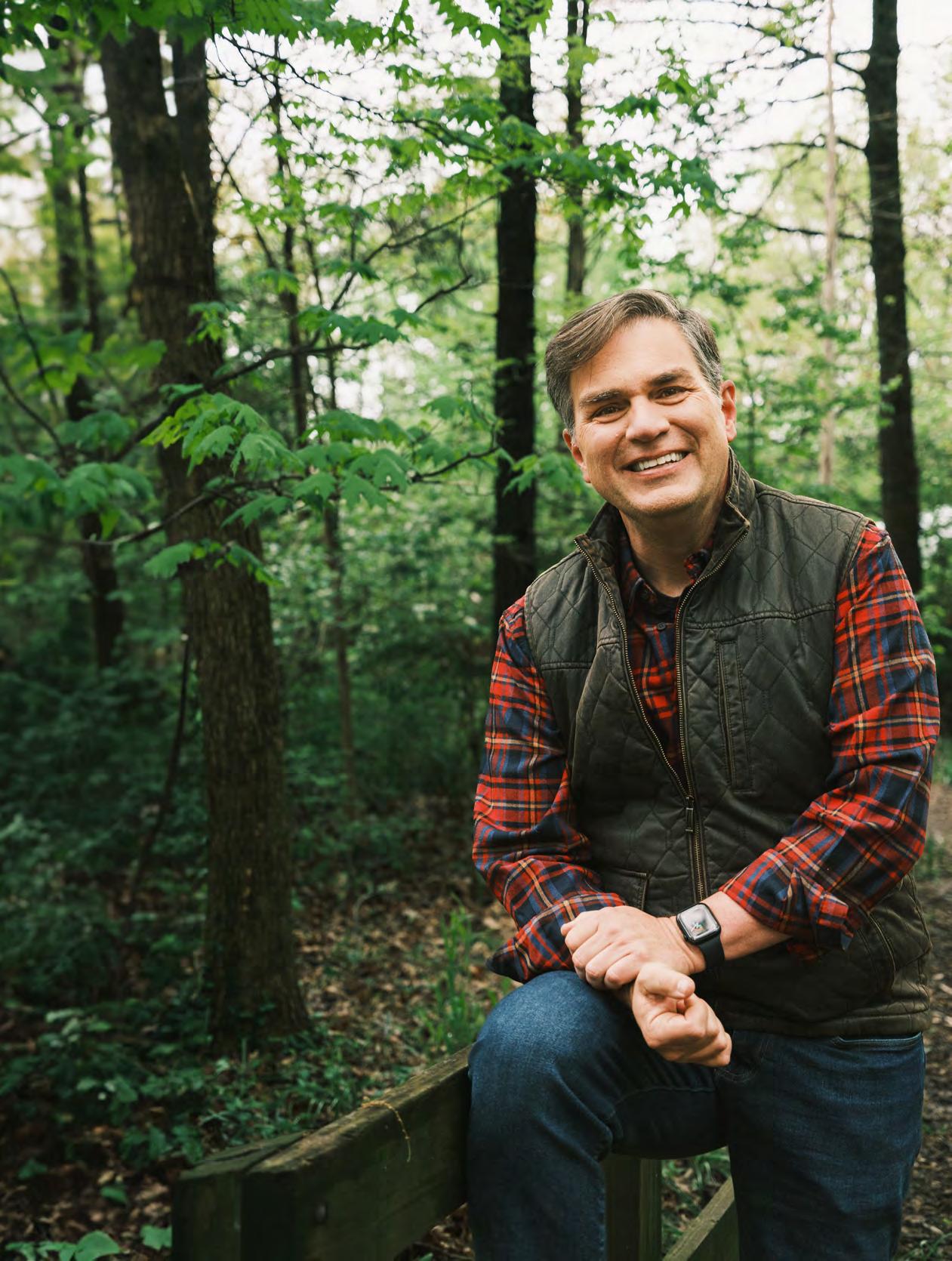
Kentucky Life host Chip Polston is hitting the road for season 30! Join him for brand new adventures as he discovers the Commonwealth’s most fascinating people, places and stories.
Kentucky Life
KET Saturdays • 8/7 pm
KET2 Wednesdays • 2:30/1:30 pm

Stream on KET.org or the PBS Video App
For more information, visit hindman.org/workshop.
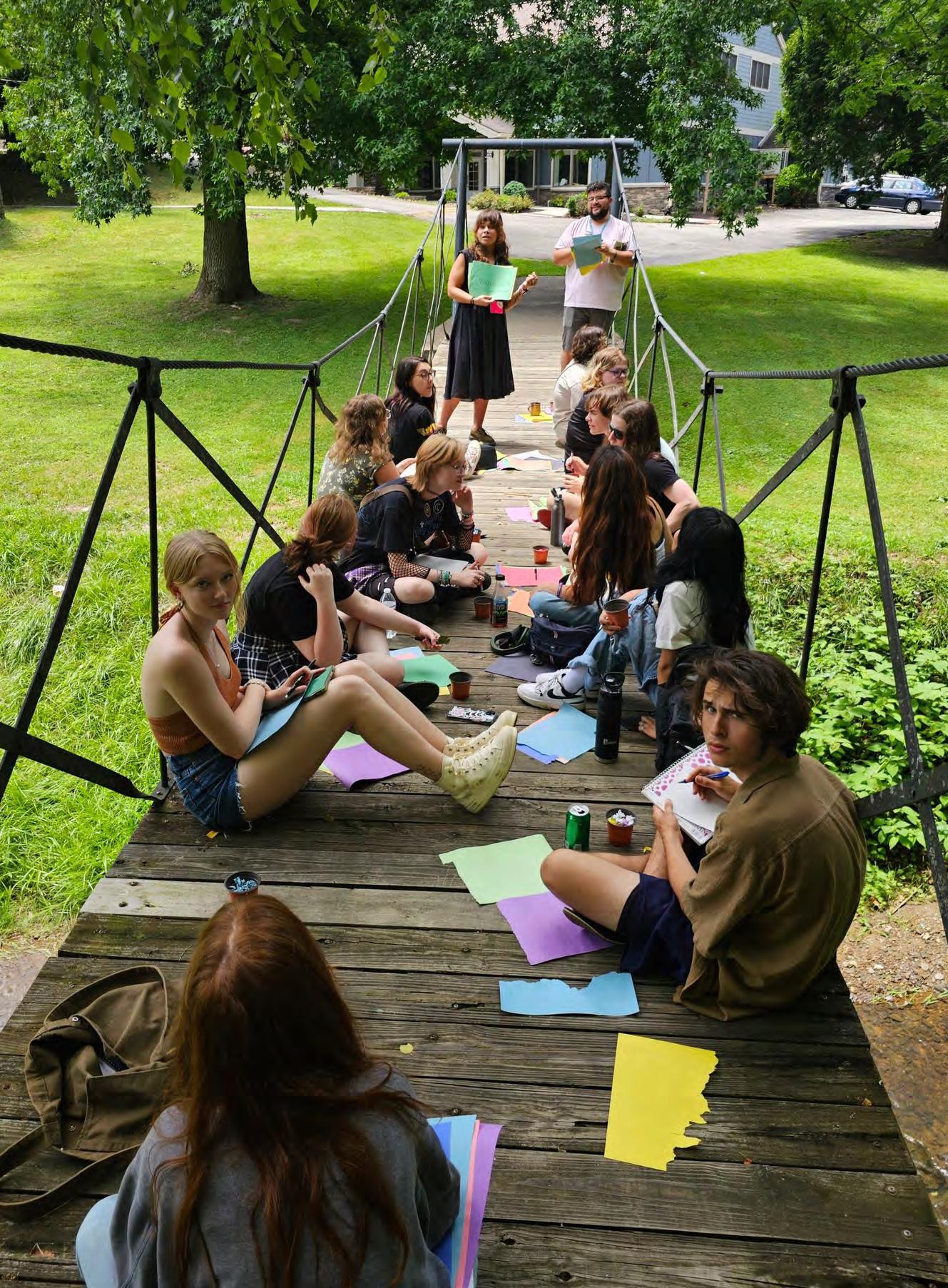
The annual Appalachian Writers’ Workshop in Hindman brings writers together for a week of teaching, learning and communing
TEXT BY KIM KOBERSMITH PHOTOS BY MELISSA HELTON
or 47 years, writers have gathered on the banks of Troublesome Creek at Hindman Settlement School for what has been called the premier literary gathering of the Mountain South. The list of attendees at the Appalachian Writers’ Workshop through the years reads like a Who’s Who of regional literature: James Still, Harriet Arnow, Harry Caudill, George Ella Lyon, Silas House, Barbara Kingsolver, Crystal
Wilkinson, Gurney Norman, Frank X Walker and Wendell Berry
The workshop has become an expected place to be every July for a cadre of regional writers. They gather to talk about craft, share work, and gain confidence and skill. For those who have returned year after year for decades, it is something more—a family reunion, a homecoming and a celebration of carefully cultivated community.
“Arriving at Hindman is a favorite moment for me every year,” said
Harlan County’s Robert Gipe, who has been part of the workshop since 2006. “Writing is a strange and isolating thing to do. Being embraced by other writers and anticipating the week feels like Christmas morning.”
The structure of the event lends itself to camaraderie. Most participants travel to Hindman and stay on campus the entire week. Conversations happen organically across the table in the dining hall and between adjacent rocking chairs on open-air porches. Many relationships

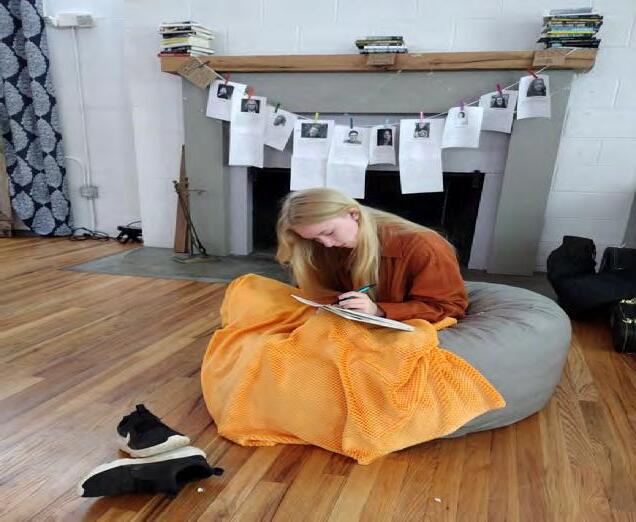
are forged over the dishwashing sink, a required task for all attendees at least once a session.
But according to Hindman’s director of literary arts, Melissa Helton, the event is truly special because of the people and the spirit they bring to the workshop. There is no hierarchy, no sense of division or ego based on publishing history or writing experience. Instead, workshop leaders in one class join as participants in another. There is an ebb and flow of teaching and learning, where everyone is taken seriously and respected as a writer.
“Writers often talk about the workshop with a mythic tone,” Helton said. “People come to be in community, and the elders feel a calling to pass along the legacy. Looking at the passage of the community through time is like
seeing an Appalachian literary family tree.”
The Hindman Settlement School has a rich literary legacy. Early teachers and administrators— including Lucy Furman and Ann Cobb—published journals, novels, folk songs and poetry. In 1977, Hindman alumnus and writer Albert Stewart, along with Hindman director Mike Mullins, founded the Appalachian Writers’ Workshop. Their aim was to mentor young Appalachian writers and preserve the cultural heritage of the region. The two set the tone of egalitarianism and nurturing support from the beginning.
The event has grown and evolved. Beginning, emerging and established
writers are all encouraged to apply. Between 80 and 100 writers attend each year, and while many return for 20, 30, even 40 years, at least a third of participants annually are firsttimers. Applicants turn in poetry, short story, novel or creative nonfiction manuscripts and are selected for genre-specific classes of 12 to 15 students. The curriculum is determined by each teacher. Some are intensely craft focused; others are more generative. One beneficial element is a one-on-one critique for each student by the class leader.
Aside from the genre-specific workshops held daily, the schedule is filled with optional classes on writing for children and panel discussions about publishing. The afternoon participant readings may be the first time new writers share their work. Evenings might offer
faculty readings, keynote speakers (Tennessee author and opinion writer Margaret Renkl this year), a square dance, playing music on the porches, and a trivia tournament. Schedules can be as filled or open as people need or want.
Supportive creative partnerships formed at the workshop have launched careers. Writers find friends to read manuscripts, blurb books, and help find an agent. Gipe was already an experienced playwright with Higher Ground Theater, but when he decided to try his hand at fiction, he knew where to go. The first fiction piece Gipe ever wrote was for his Appalachian Writers’ Workshop application. His first published piece was in Appalachian Heritage. The editor of Appalachian Heritage heard Gipe at a Hindman afternoon participant reading and asked if he could publish what Gipe had read. The workshop helped birth Gipe’s three illustrated novels: Trampoline, Weedeater and Pop He took a longer novel class with a mentor he found there, and Still: The Journal published six chapters after editors saw his zines at the workshop. Gipe credits his first book contract to connections he made at the event.
Through the development of new writers and the formation of an ethos, the Appalachian Writers’ Workshop has had a major influence on the course of place-based literature. The event is a response to early writings about the region that often were by outsiders. It is part of a larger movement of Appalachians reclaiming the right to tell their own stories,
stories that are nuanced and include Affrilachian, immigrant, Eastern Band of Cherokee and queer voices.
One of those nuanced voices is that of Neema Avashia, author of the memoir Another Appalachia: Coming Up Queer and Indian in a Mountain Place Through the workshop, she found her place in regional literature. “As a queer, desi woman who grew up in West Virginia, I wasn’t always even sure I could use the term ‘Appalachian’ to describe my identity,
despite having been born and raised in the region,” Avashia shared. “But being in community with other Appalachian writers, hearing their words, hearing their responses to my words, and seeing the ways in which they’ve extended themselves to support my work has given me the powerful sense of belonging and home that I’ve been chasing ever since I moved away from West Virginia.”
Almost everyone who writes in the region has a connection to the
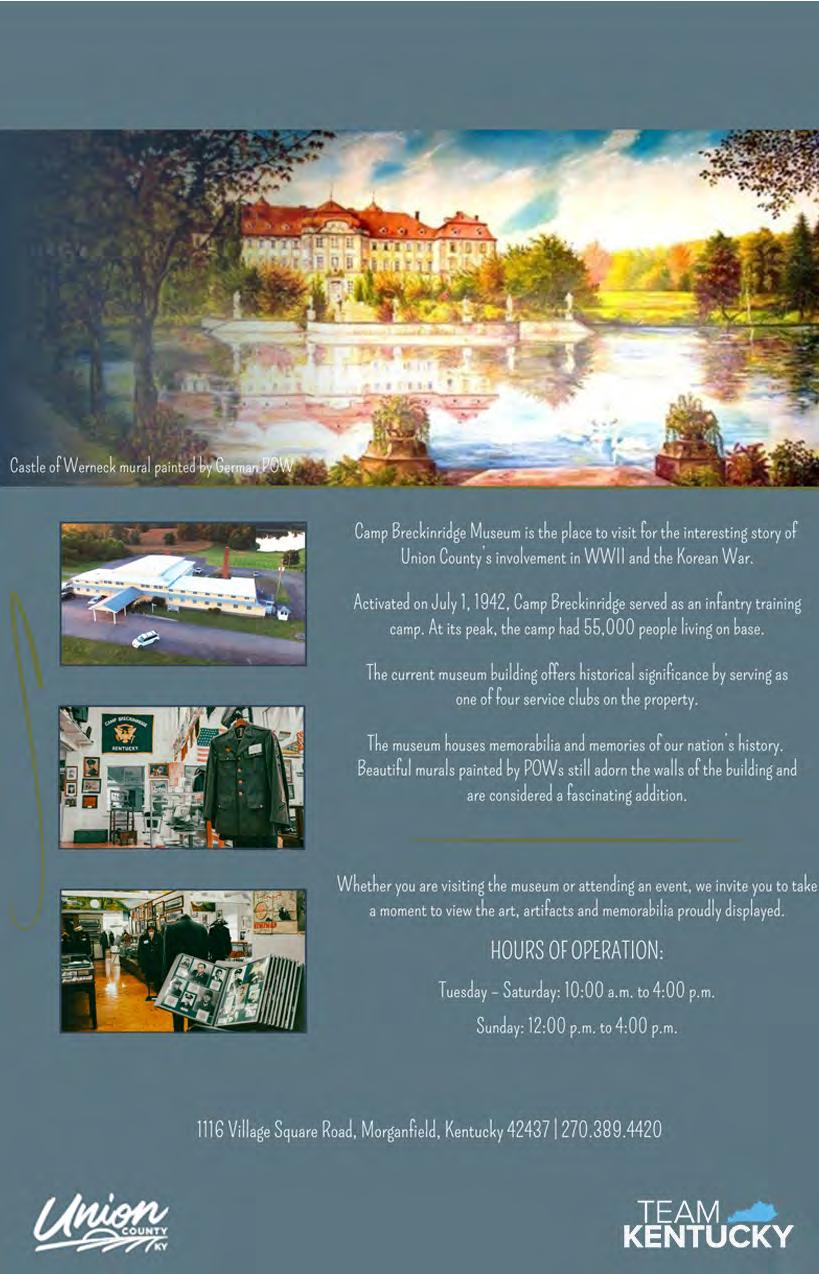

Hindman’s rich literary tradition has generated a smorgasbord of programs in addition to the Writers’ Workshop.
Now in its third year, the Ironwood Writers Studio is a weeklong summer residency for high-school students. Adults can join the spring or fall writers’ retreats. The upcoming November event will be led by author Annette Saunook Clapsaddle of Cherokee, North Carolina. Oak Ledge Writing Residencies are self-led retreats in the historic James Still Cabin. The Makery offers online writing courses of varying lengths across genres.
In the publishing realm, Hindman has its own imprint with the University Press of Kentucky called Fireside Industries. Its most recent publication was Troublesome Rising: A ThousandYear Flood in Eastern Kentucky, an anthology from more than 60 writers who were in session at the Appalachian Writers’ Workshop during the destructive 2022 Eastern Kentucky floods. This past June marked the first issue of Untelling, a new biannual print literary journal that shares regional voices.

workshop. Yet, Hindman does not want to serve as a gatekeeper or definer of “Appalachian.” Historically, mountain voices have been excluded from the mainstream; the workshop, as a response, leans toward inclusion. At Hindman literary functions, Appalachian writers are prioritized, but others are not excluded.
Recently—no one is quite sure when it started—the workshop adopted a spontaneous tradition to close out the last evening. Attendees gather in a long line in the parking lot, and each takes a turn at holding a flashlight to read an excerpt of “The Brier Sermon” poem by Jim Wayne Miller. Couched in religious language, it serves as a reminder of the
importance of knowing and honoring Appalachian identity and tradition, even while moving outside the region or into the future.
That closing ritual continues to be reinvented. Sometimes, participants read poems by Crystal Wilkinson and Irene McKinney that also relate to leaving a homeland and culture. There was an issue with everyone being able to hear the poem when they were in a long line, so traditional music leaders at Hindman have started weaving the group into a spiral before the readings begin.
It serves as a fitting symbol of the Appalachian Writers’ Workshop itself: a tradition that honors what has come before yet remains open to the evolving needs of the writing community it serves. Q






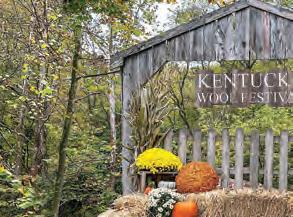
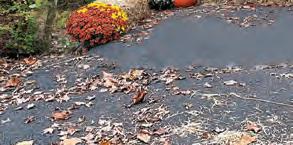
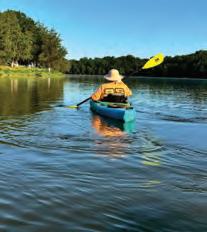
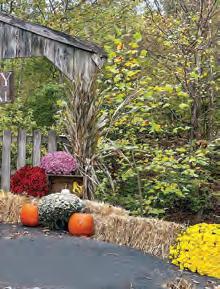

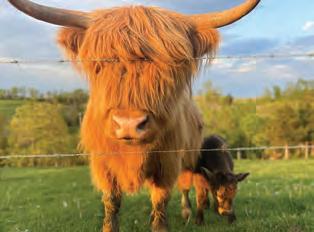



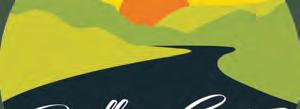













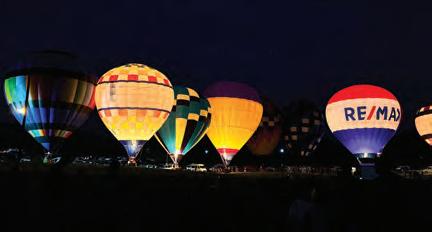


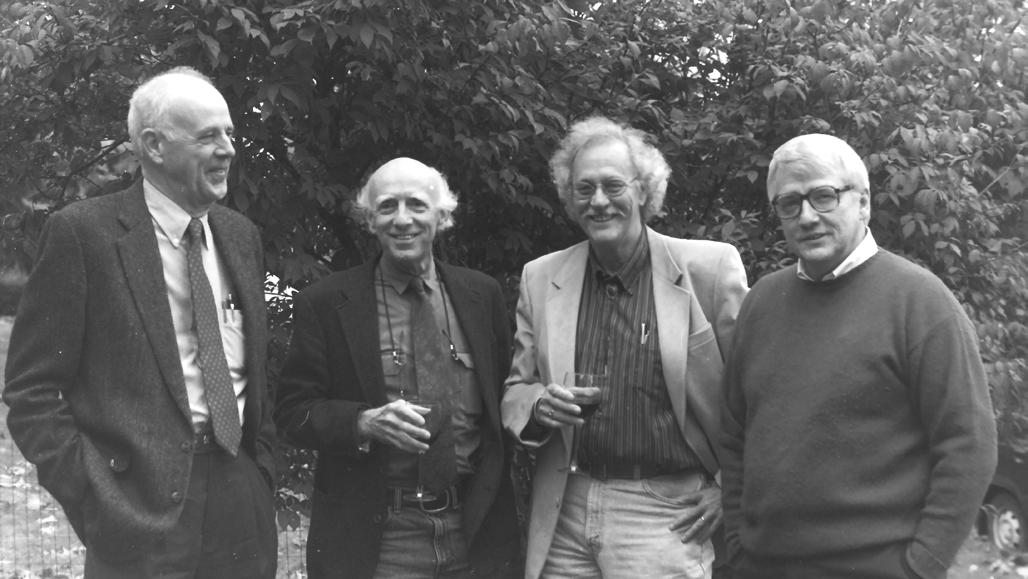
The James Baker Hall Foundation supports Kentucky’s literary and visual creatives
BY STEVE FLAIRTY
James Baker Hall imparted his oldest son, Lawrence “Larry” Pemble, with the strong notion to “recognize that from where your bliss comes is where your energy comes … and be ready to receive it.” With that realization ingrained and received in his own life, Hall often said, “It’s not what you say; it’s what you do.” Inspired, Pemble established the James Baker Hall Foundation (JBHF) in 2023. It might rightly be called a gift to Kentucky’s storied literary and artistic environment. Its James Baker Hall Book Award in Poetry, with prize money of $3,000 and a contract with Accents Publishing, is already a coveted literary recognition, gaining scores of submissions. The winner will be announced on Oct. 1. But there is much more. The work of the Foundation is off to a good start, with vast potential to foster the emergence of more James Baker Halls who might serve to enrich the state’s humanities footprint.
Pemble, who set aside a career guiding a successful health-care company in China to start the Foundation, knows from where his bliss comes these days—in honoring his father’s literary and artistic legacy.
And what an impressive legacy it is.
Born in Lexington in 1935, Hall resided in the Scott County community of Sadieville with his wife, Mary Ann Taylor-Hall. The two were kindred spirits walking together down a creative path. She also is a successful author and today continues to garner respect for her work, which includes her 1995 debut novel Come and Go, Molly Snow She joined her husband as a Kentucky Writers Hall of Fame inductee earlier this year.
Along with noted authors Wendell Berry, Gurney Norman, Bobbie Ann Mason and Ed McClanahan, Hall was counted as one of the state’s vaunted “Fab Five” of writers. All studied under Robert Hazel and Hollis Summers at the University of Kentucky and went on to
illustrious writing careers. Hall wrote three novels and seven volumes of poetry, and shot an estimated 75,000 photographs for display and publication.
Hall was appointed Kentucky Poet Laureate in 2001, and for 30 years, he taught and directed the creative writing program at UK, having a great and positive influence. He died in 2009 and was inducted into the Kentucky Writers Hall of Fame in 2014.
In Kentucky and beyond, James Baker Hall’s words are quoted; his photographic images are shared; and the legions who knew him as a friend bear witness to his imprint on their lives.
Regarding his father’s teaching impact, Pemble remarked that he “was a very determined guy, always about making his art. Students all over the country now are doing what he taught them to do. Most of them, when you talk to them, say something like: ‘He changed my life.’ ”
Hall wrote many letters to his students, Pemble discovered, and when Pemble perused a collection of them at the Kentucky Historical Society, he was “astounded,” noting that any person who had a relationship with his father knew that “when he was with you, he was totally yours. He gave you his time, and he gave you his spirit.”
• • •
The Foundation’s stated mission is “to celebrate the legacy of our great artistic heritage by providing direct support to Kentucky’s literary and visual creatives.” Emphasizing the values of character, creativity, collaboration and community, JBHF believes that creating art “gives testimony to the very fabric of life … [and] is the record of our existence, a vehicle to change individual lives and build communities.”
The 2024 inaugural program goals include bestowing the Book Award, funding Eastern Kentucky’s Hindman Settlement School to supplement its literary outreach to area high schools and its Ironwood Writers Studio, and collaborating with Bobbi Buchanan and the Write to Recover program that she directs at the Bullitt County Detention Center in Shepherdsville. Buchanan hopes to impart skills to help individuals overcome addiction. More program details will be announced at the Oct. 1 press conference at Spalding University in Louisville.
The executive committees of the Foundation include well-known Kentucky humanities influencers Bill Goodman, Frank X Walker, Maurice Manning, Tom Eblen, Christopher Meatyard and Guy Mendes Katerina Stoykova heads Accents Publishing, which partners with JBHF on the Book Award.




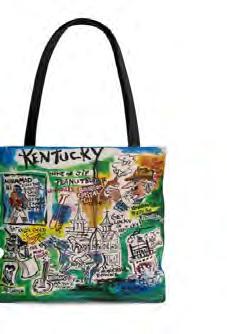

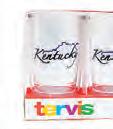


Pemble uses the term “friend-raising” when describing JBHF’s current direction, and that starts with locating Hall’s former students. “It takes a lot of time,” he said. Many have been found, but Pemble knows there are more, and he would appreciate help in directing them to the Foundation. Along with that initiative, it also is searching for today’s emerging writers across the state. The Foundation is looking toward “partnering with people doing interesting work, successful work, that meets our mission standards,” Pemble said. Q
Visit jamesbakerhallfoundation.org for more information.
Opposite page, from left, Wendell Berry, James Baker Hall, Ed McClanahan and Gurney Norman.








Martin Luther King Jr.’s legacy will loom large over a 2024 Kentucky Book Festival that also will feature fantasy, bourbon, spirituality and much more
BY KEVIN NANCE
Well before his King: A Life won this year’s Pulitzer Prize for biography, Jonathan Eig knew he had outdone himself. Readers and critics were responding to his book about the Rev. Martin Luther King Jr. in ways that set it apart from his past biographies of Muhammad Ali, Al Capone and Lou Gehrig. “From the minute the book came out, it was getting a special reaction,” Eig said. “People were connecting with it emotionally and spiritually, so I could tell I had touched a nerve.”
Eig is among more than 150 authors looking to connect with readers at the Kentucky Book Festival on Nov. 2 at Lexington’s Joseph-Beth Booksellers. Other big names at this year’s festival, a program of Kentucky Humanities, include TV personality Al Roker, young adult author Nic Stone, Louisville chef Edward Lee and two prominent Lexington writers—novelist Gwenda Bond and Kentucky Poet Laureate 2021-2023 Crystal Wilkinson (Wilkinson, author of the culinary memoir Praisesong for the Kitchen Ghosts, also will be featured at a literary luncheon
at Fasig-Tipton in conversation with the award-winning food writer Ronni Lundy on Oct. 31.) Also appearing will be newcomer Yolanda Renee King, the only granddaughter of MLK and his wife, Coretta Scott King, who celebrates her grandparents’ legacy in a new children’s book, We Dream a World.
Eig always expected that King: A Life—a page-turning, deeply human portrait of the great man that relies, in part, on newly released FBI files and new interviews with scores of people who knew the slain civil rights leader personally—would require unusual sensitivity, especially when revealing details about his personal life, including infidelity and struggles with mental health. “The bar was always higher on this book because he matters so much to people … There are plenty of people who have pictures of Jesus and MLK on their walls,” Eig said in an interview from his home in Chicago. “I had to be careful to write a book that dealt with his greatness and his flaws. If I balanced it right and didn’t overemphasize those negative things, I felt that readers would give me a fair shake.”
The decision to use information from the FBI files,

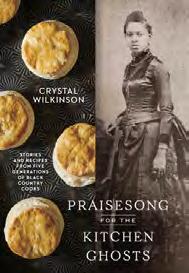

including transcripts of wiretapped conversations and other electronic surveillance over many years, was particularly fraught. “The files had to be handled delicately and with the overriding goal of showing how the Bureau and its director, J. Edgar Hoover, were out to destroy King,” Eig said. “You could argue that the files don’t belong in the book because they come from a corrupt source, but they also help us understand him better as a person. They show how vulnerable, how distraught he is, how he’s suffering.”
The book reveals for the first time the existence of a shocking note anonymously mailed to King by the FBI in 1964 suggesting that he should avoid the exposure of his extramarital activities by committing suicide. “When I do public readings from the book,” Eig said, “that draws audible gasps from the audience every time.”
MLK figures in the work of another KBF guest, Nic Stone, author of the bestselling young adult debut novel Dear Martin (2017) about a Black teenager who begins writing letters to King after a frightening run-in with a racist policeman. Since then, Stone has written several books that, unlike many YA novels that keep the mood light, delve into surprisingly dark themes.
In her most recent novel, Chaos Theory, Stone writes
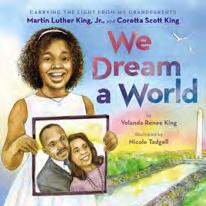
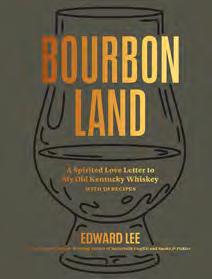

about Black high school students dealing with heavy issues—including mental illness and alcohol abuse. The story follows Shelbi, a physics genius with bipolar depression and a history of self-harm, and Andy, an excellent student-athlete who deals with grief and the stress of his troubled family life by drinking too much.
Andy and Shelbi find themselves falling in love, but can their relationship withstand the pressure of their respective “brain stuff,” as Shelbi calls it? The answer is moving, complicated and, for the author, deeply personal. In an author’s note, Stone revealed to her readers that much of the story is inspired by her own experiences. “I needed to validate my own reality,” she said in an interview from her home in the Atlanta area. “For me growing up, my father was an alcoholic, and he never hid his drinking from me, including the fact that he was actively working to mitigate it. He used to take me with him to his AA meetings, and just recently hit his 30-years-sober mark.”
Stone used that life experience as inspiration for Andy’s story, while Shelbi’s neurodivergent condition is informed by the author’s struggle with bipolar depression and generalized anxiety disorder. She hopes to help reduce the stigma around mental illness by reminding affected young people that they’re not alone and that it’s OK to talk about it. “As human beings, we’re
not designed to exist in isolation, so it’s important that we not hide from each other,” she said. “Books like mine can serve as mirrors and can help young people realize that there’s nothing wrong with them. It’s only dark because we keep it out of the light.” •
In another neck of the fictional woods, bestselling author Gwenda Bond once again does what she does best: mixing genres. In The Frame-Up, a feisty former con artist named Dani must reassemble her estranged mother’s old crew of art thieves with magical abilities to pull off a new job: stealing a painting that might have supernatural properties. Bond delivers a fast-paced mash-up of an oldfashioned heist caper and fantasy, with big dollops of action, screwball comedy and romance—not to mention that the book is set mostly in Lexington and Louisville.
“It’s Ocean’s Eleven meets The Picture of Dorian Gray in Kentucky,” Bond said. “Weird combinations of things are my rubric.”
As research before she began writing, the author watched about 50 heist movies, focusing on ones that “put a lot of time into building the team,” including the Ocean’s series (including Ocean’s Eight, which she says is unfairly unappreciated) and both versions of The Thomas Crown Affair and To Catch a Thief
“It’s really about how everyone’s going to work together with competing motives, about second chances and found family,” Bond said.
There’s also a strong Bluegrassy flavor in Bourbon Land: A Spirited Love Letter to My Old Kentucky Whiskey, the newest book by the chef and author Edward Lee. A collection of short essays on the history of bourbon, profiles of industry luminaries and 50 recipes featuring the Commonwealth’s famous libation, Bourbon Land is a delicious concoction for bourbon lovers and adventurous home cooks alike. (For a recipe sampling from Bourbon Land, see Kentucky Monthly’s Setpember issue, page 8.)
“When I was thinking of what my next book would be about, I asked myself whether I had something to say that’s not already out there,” said Lee, chef and owner of 610 Magnolia and Nami in Louisville, whose earlier books include Buttermilk Graffiti: A Chef’s Journey to Discover America’s New Melting-Pot Cuisine, winner of a 2019 James Beard Book Award. “There were a lot of barbecue cookbooks that featured bourbon, but there are a lot more uses of bourbon in cooking than that.”
In Bourbon Land, Lee explains how to use what he calls “the one true American spirit” in a dazzling array of delectable-sounding dishes featuring bourbon in marinades, vinaigrettes, sauces and gravy; bourbon for poaching, basting and braising; and bourbon combined in a multitude of ways with gochujang, miso and other Asian ingredients, not to mention old standbys such as honey, maple syrup and sorghum, to infuse, enhance and otherwise glorify meats, fish, vegetables and desserts.
“In the beginning of America’s culinary journey, we were mostly fascinated by European cuisines, but now American cuisine is fast becoming a melding of cultures: Mexico, the Far East, the American South,” Lee explained. “Now you need something stronger than wine to stand up to all those chiles and ginger, all that turmeric, all that smoke. You need bourbon.”
Much of Brother Paul Quenon’s half-century of monastic life at the Abbey of Gethsemani in New Haven has been spent nurturing the legacy of his former novice master: acclaimed writer, poet and theologian Thomas Merton. But in the just-published A Matter of the Heart: A Monk’s Journal—a follow-up to his 2018 memoir In Praise of the Useless Life and several earlier poetry collections—Quenon consolidates his reputation as Merton’s literary heir and continues to emerge as a gifted writer in his own right.
Based on excerpts from his journals from the 1970s to the 2000s, A Matter of the Heart barely mentions Brother Louis, as Quenon called Merton. Instead, it oscillates between spiritual reflections and elegantly observed, sometimes gently comic slices of daily life at the monastery: the routines of worship; insightful encounters with nature, including animals, on the Gethsemani grounds; conversations—sometimes in sign language— with other monks; and occasional reactions to world events such as the wars in Vietnam and Iraq.
“Brother Louis didn’t like imitators,” said Quenon, who will participate in a KBF panel discussion about spiritual writing with Fenton Johnson and Jon Sweeney “He wanted people to be themselves, the way God made them, and I suppose I’ve tried to do that as a writer and poet. I can’t be compared with him, really, but I admit that he inspired me to develop that part of my life. There’s something about monastic life that allows for writers and inspires them. You’re given the gift of the contemplative life and having these moments, so why not share them? It’s about having something to give and to give it freely to others.” Q
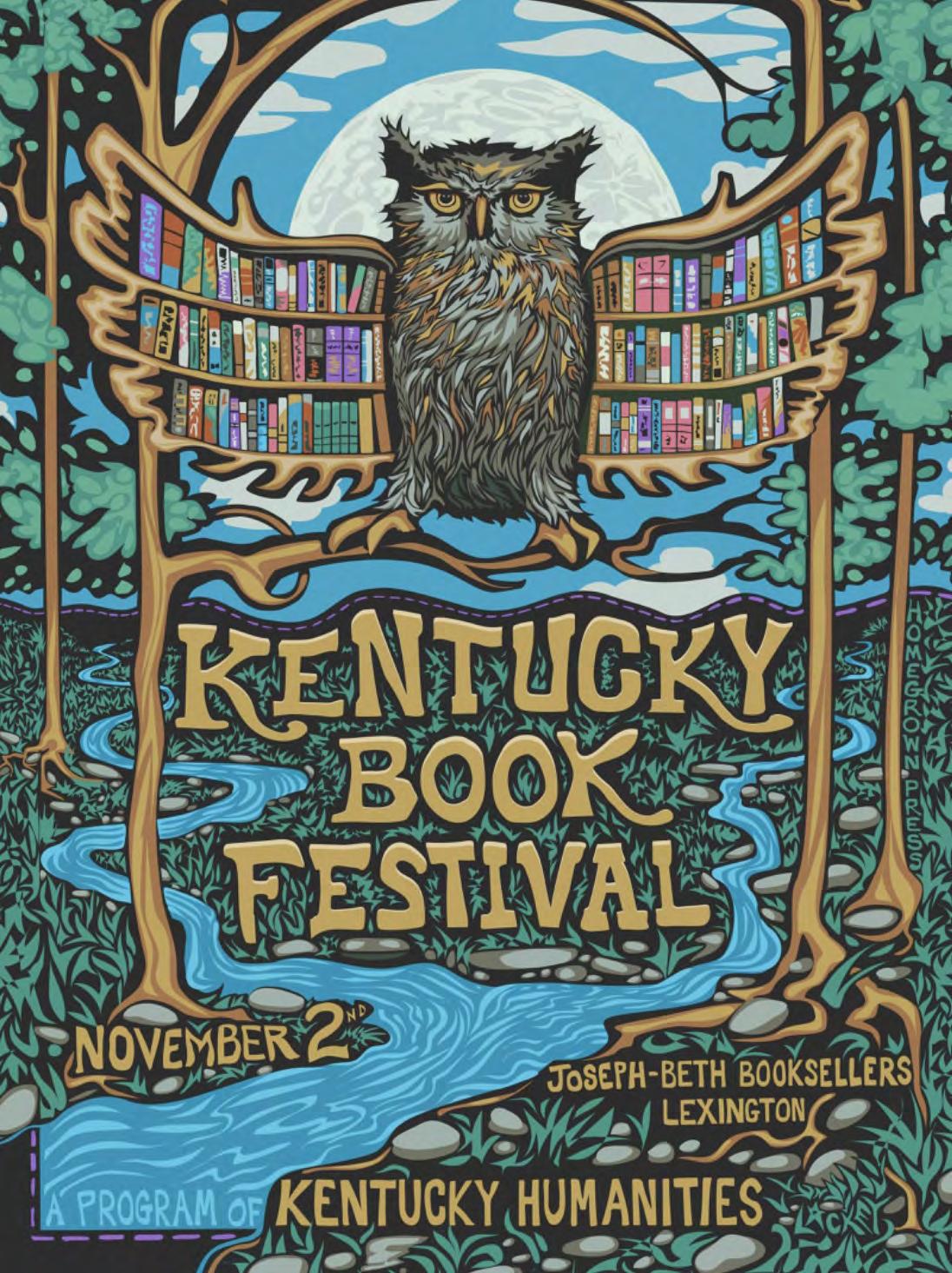
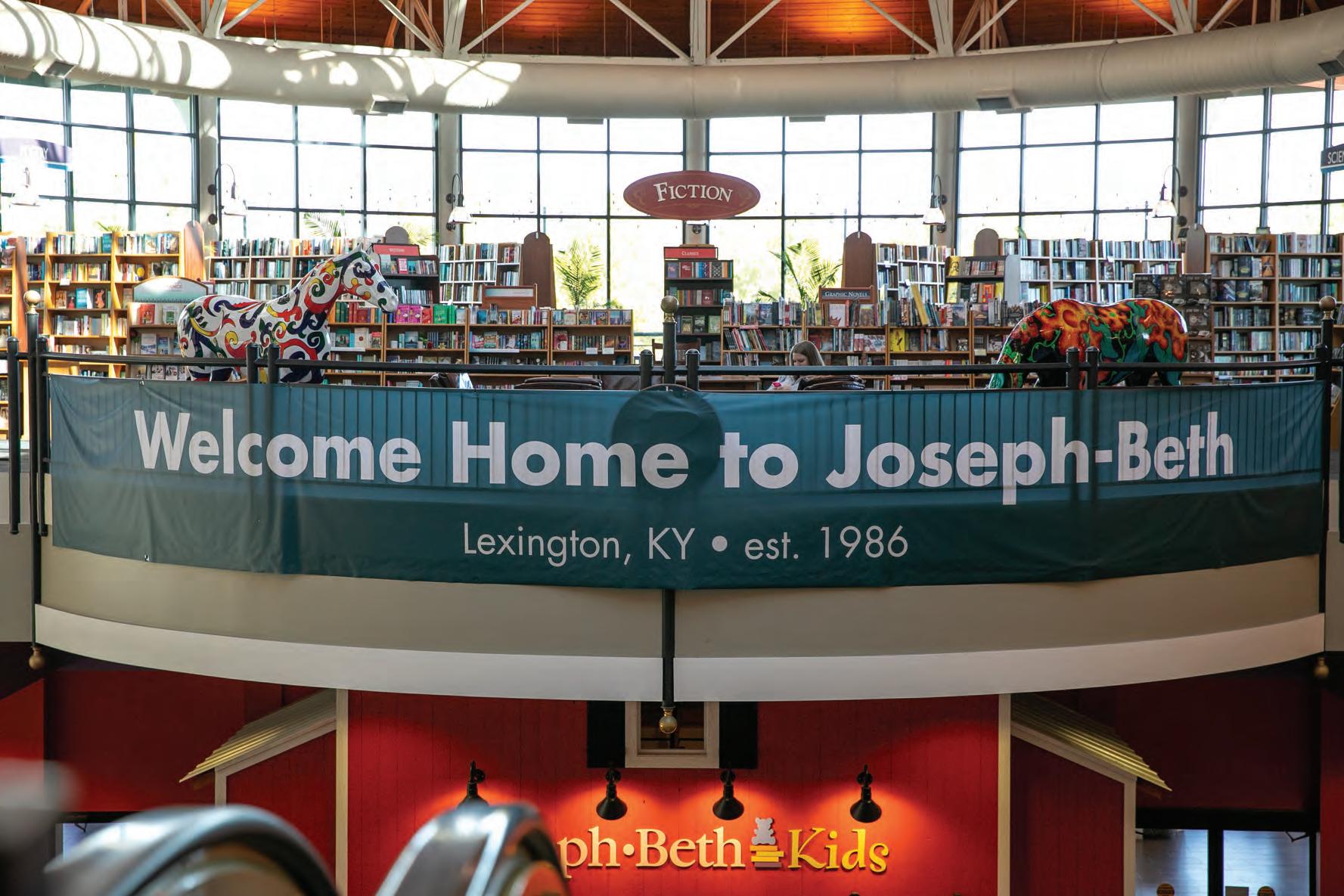
AUTHOR EVENTS LOCAL GIFTS STORY TIMES CASUAL DINING
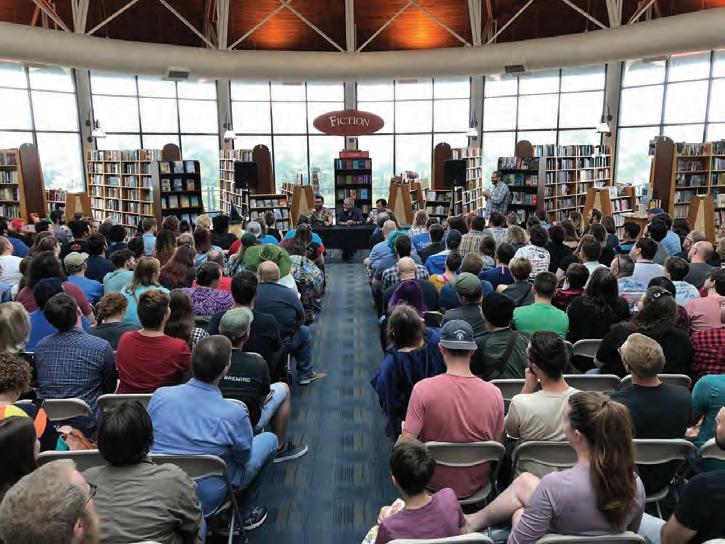
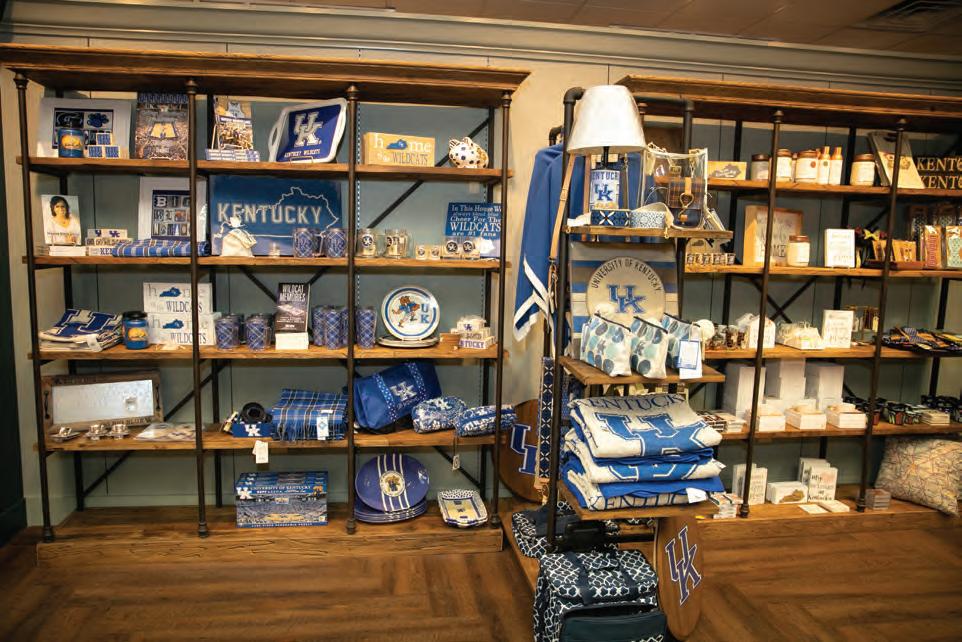

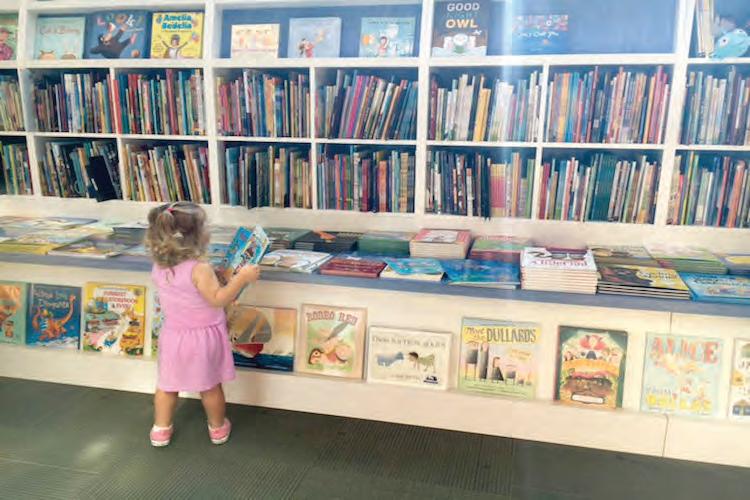


Kentucky Humanities is proud to welcome you to the 43rd edition of the Kentucky Book Festival , where every lover of literature can find a book to enjoy and to shake the hand that wrote it. We hope you enjoy browsing the author’s gallery, attending a few sessions of our diverse programming, and visiting the children’s tent with fun activities for the next generation of readers. Thanks to our sponsors, for the third year, hundreds of children age 14 and under can receive vouchers for a free book of their choice.

This festival would not have been possible without the generous help of numerous organizations and individuals. We’re grateful to our partners at Joseph-Beth Booksellers for hosting and assisting in planning the event. Our volunteers’ dedication and enthusiasm are greatly appreciated. We hope that everyone who attends the event leaves enriched with engaging books
AND THE KENTUCKY BOOK FESTIVAL TEAM
2024 IMAGE ARTIST John Lackey is a native of Lexington and runs Homegrown Press Studios. He now operates his various art endeavors out of the weird and wonderful Luigart Gallery. A painter of surreal landscapes and realistic abstractions, he is also responsible for many logos, murals, posters and wood engravings for, among others, North Lime Coffee & Donuts, Wilco, Holler Poets Series, Alfalfa Restaurant, Larkspur Press, Kroger, the Kentucky Chamber, and the Kentucky Arts Council.
NOVEMBER 2 9:30AM–5:00PM
Joseph-Beth Booksellers 161 Lexington Green Circle Lexington, KY 40503
Authors will sign books at Various locations within Joseph-Beth Booksellers. Most authors will be seated downstairs on the lower level with access via escalator and elevator. Maps will be provided day-of.
For the most up-to-date author lineup and event schedule, follow us here:
WEBSITE
kybookfestival.org FACEBOOK Kentucky Book Festival INSTAGRAM @kybookfestival
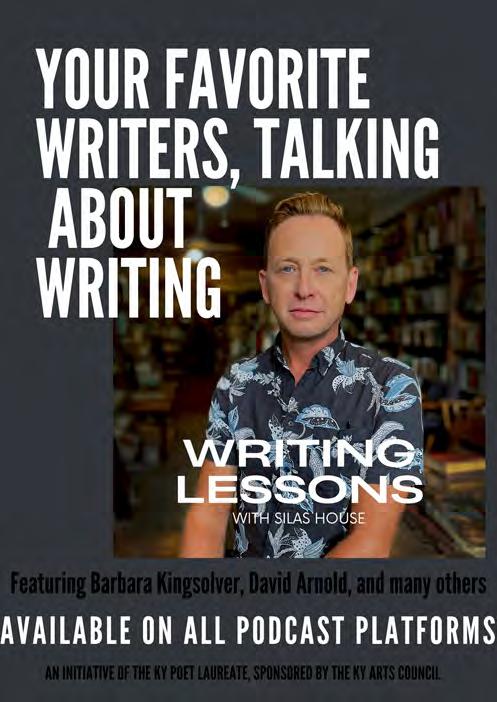

Thank you to the staff and volunteers who make this event possible! We appreciate your time and support in making the book festival a success.
BRIAN CLARDY Murray
JENNIFER CRAMER Lexington
CHELSEA BRISLIN Lexington SELENA SANDERFER DOSS Portland, TN
BEN FITZPATRICK Lexington
CLARENCE GLOVER Louisville
NICHOLAS HARTLEP Lexington
CHRIS HARTMAN Louisville
SARA HEMINGWAY Owensboro
ERIC JACKSON Florence
LOIS MATEUS Harrodsburg


KEITH McCUTCHEN Frankfort
TOM OWEN Louisville
JORDAN PARKER Lexington
LIBBY PARKINSON Louisville
PENELOPE PEAVLER Louisville
LOU ANNA RED CORN Lexington
ANDREW REED Prestonsburg
JUDY RHOADS Owensboro
RON SHEFFER Louisville
HOPE WILDEN Lexington
BOBBIE ANN WRINKLE Paducah
WAYNE YATES Princeton
Bill Goodman Executive Director
Derek Beaven Program Manager
Gladys Thompson Fiscal Officer
Jay McCoy
Administrative Assistant to Kentucky Book Festival
Joanna Murdock Administrative Assistant
Julie Klier Event Producer
Katerina Stoykova Kentucky Book Festival Director
Mariane Stoess Assistant Director
Rebecca Redding Graphic Designer
Sam Corbett Development Assistant
Zoe Kaylor Grant Administrator
Kentucky Humanities is an independent, nonprofit affiliate of the National Endowment for the Humanities in Washington, D.C. Kentucky Humanities is supported by the National Endowment and by private contributions. In addition to producing the Kentucky Book Festival, Kentucky Humanities sponsors PRIME TIME Family Reading Time®, offers Kentucky Chautauqua® and Speakers Bureau programs, hosts Smithsonian traveling exhibits throughout the state, publishes Kentucky Humanities magazine, and awards grants for humanities programs. Views expressed in this publication do not necessarily reflect the views or policies of the NEH or Kentucky Humanities board and staff. Learn more at kyhumanities.org.

FASIG-TIPTON , 2400 NEWTOWN PIKE, LEXINGTON, KY 40511
Join Crystal Wilkinson and Ronni Lundy for a discussion of Crystal’s culinary memoir, Praisesong for the Kitchen Ghosts: Stories and Recipes from Five Generations of Black Country Cooks. Books by both writers will be available for purchase. This premier event will be catered by Ouita Michel and Holly Hill Events.
OCTOBER 31 • 7 PM
&
Socialize and to test your literary trivia! Free and open to the public.
GOODWOOD LEXINGTON , 200 LEXINGTON GREEN CIRCLE, LEXINGTON, KY 40503

NOVEMBER 2 • 9:30 AM to 5 PM
JOSEPH-BETH BOOKSELLERS 161 LEXINGTON GREEN CIRCLE LEXINGTON, KY 40503
150 authors, co-authors and illustrators will be in attendance, meeting readers and signing books. Patrons can enjoy a full slate of presentations, readings and craft talks across five stages, as well as a packed schedule of children’s events. The program includes special appearances by Pulitzer Prize winning writer Jonathan Eig, bestselling young adult author Nic Stone, Yolanda Renee King – the granddaughter of Dr. Martin Luther King Jr. with her debut picture book, We Dream a World, and others.
P. Anastasia is the author of nine novels and two children’s picture books resonating with mystery, charm and a little bit of magic—the embodiment of her unique writing style. The second in her POE Prophecies series, an engaging young adult mystery series inspired by true events and the works of Edgar Allan Poe, The Black Cat continues Aidan Gray’s journey through P.O.E. Academy as he investigates the mysterious behavior of another student and uncovers a sinister secret.
BRITAINY BESHEAR + ANITA HATCHETT
Winnie Tours the Kentucky State Capitol
2024 Kentucky Book Festival Honorary Chair and Kentucky First Lady Britainy Beshear is a powerful advocate for the Commonwealth’s children and has been there for them and their families during challenging times. After completing her BA in English from the University of Kentucky, Anita Hatchett worked as a graphic designer and graphic design coordinator before joining the Tourism, Arts and Heritage Cabinet, where she now serves as executive director. In Winnie Tours the Kentucky State Capitol, First Dog of Kentucky Winnie Beshear takes kids on an adventure touring the State Capitol.
Dognapped at the Ice Rink
Lori Briley is the author of the Buddy and Panda Mysteries series based on her real-life dogs and her daughter’s experiences playing ice hockey. In her latest book, Dognapped at the Ice Rink, the dynamic doggy duo sniff out clues, unravel secrets and embark on a heartwarming adventure proving that true friendship and teamwork can overcome even the most challenging mysteries.
JODIE CAMPBELL
There Was a Zookeeper
As a registered nurse for her local health department, Jodie Campbell has a big heart for helping families in her community. Filled with her memorable characters and vibrant illustrations by Alexey Chystikov, There Was a Zookeeper offers a tale of decision-making, friendship and forgiveness.
JEFFREY EBBELER
Jerry, Let Me See the Moon
A graduate of the Art Academy of Cincinnati, Jeffrey Ebbeler has worked as an art director, book designer, illustrator and even marionette sculptor and performer for a puppet theater. Larger-than-life bad guys and slapstick humor meet a heartfelt exploration of what makes a place home in Jerry, Let Me See the Moon, a page-turner that will leave younger middle-grade readers howling for more.
Dragons Don’t Cook Pizzas
A former columnist for Writer’s Digest magazine, Marcia Thornton Jones is the author or co-author of 138 books for children, including the bestselling The Adventures of the Bailey School Kids series. In the fourth title in the popular Bailey School Kids Graphix Scholastic Series, Dragons Don’t Cook Pizza, the kids visit Jewel’s Pizza Castle for a party, only to see smoke and hear roars coming from the kitchen and wonder what’s going on.
YOLANDA RENEE KING
We Dream a World: Carrying the Light From My Grandparents Martin Luther King, Jr. and Coretta Scott King
The first and only granddaughter of Coretta Scott King and Martin Luther King Jr., Yolanda Renee King is a national civil rights figure in her own right. With inspiration from Langston
Hughes and a deep love for her grandparents, King shows the world that young people are strong enough to carry on their elders’ legacy while creating a new path for themselves in her latest book, We Dream a World
An award-winning author living in Lexington, Mary Knight coaches other writers on their book-length manuscripts and travels around the country visiting schools and hanging out with her middle-grade readers, who always offer her new insights into her novels as well as life. What the Seahorse Told Me is a magical tale of friendship, family and the spirit of aloha—guaranteed to delight your heart.
REBECCA SUTER LINDSAY + DEBORAH SLONE
Mr. Tux and the Little Garden Hotel
Former president of the Kentucky State Poetry Society, Rebecca Suter Lindsay knows how kids tick from tutoring them for 35 years, and how cats behave from living with at least 15 of them over time. Illustrator Deborah Slone is a watercolor artist whose botanical paintings are a nod to her family’s storytelling traditions. Mr. Tux and the Little Garden Hotel, born from a stay at a small, charming hotel in Central France, follows Pipsqueak, an abandoned kitten who finds a new job, new name, new home, and adventure trying to save the hotel from the mice, the health department and El Cidre.
GEORGE ELLA LYON
Time to Fly
Former Kentucky Poet Laureate George Ella Lyon is an award-winning poet and author with more than 35 books for young readers and numerous books for adults. In Time to Fly, a sweet and encouraging picture book, Baby Bird learns to overcome his fear of leaving the nest.
T.L. M c BETH
I Am Not Santa Claus!
Author and illustrator T.L. McBeth’s work has been featured by Macmillan, Scholastic, Penguin Random House, Threadless, McDonald’s, Today, The Wall Street Journal and the Society of Illustrators, and is part of the permanent collection of the Mazza Museum. His latest picture book, I Am Not Santa Claus!, is a hilariously clever story about a man with a white beard and a red hat who, despite all evidence to the contrary, insists that he is NOT Santa Claus.
SUSAN MILLS
Hadley, the Happy and Helpful Hadrosaurus
Susan Mills is an award-winning author and illustrator renowned for the DinoSprout Educational Book Series as well as founder of the nonprofit My Autism Tribe. Beyond teaching about incredible dinosaurs, the yummy tale of Hadley, the Happy and Helpful Hadrosaurus reminds us that friendship is the best ingredient in every recipe.
Mother Goose’s Appalachian Melodies
Mike Norris is an author and songwriter well known for his children’s books in collaboration with Minnie Adkins, a folk artist with permanent collections in national museums and a recipient of the Artist Award from the Kentucky Arts Council for lifetime achievement. Their fifth collaboration, Mommy Goose’s Appalachian Melodies, offers lyrical poems and nursery rhymes in tandem with whimsical and vibrant wood carvings giving readers an opportunity to delight in language and the richness of music and storytelling attuned to the verbal complexities of Appalachia.
ADAM ROSENBAUM
The Ghost Rules
Before working the last 15 years in video production and digital media, Adam Rosenbaum operated a sawmill in Kentucky, stocked groceries in Los Angeles, and was a student draftsman at a local power company. He makes
his literary debut with a middle-grade novel, The Ghost Rules, a hilarious yet heart-wrenching look at grief and the supernatural.
Mothman’s
A five-time Goodreads Choice Award nominee and a two-time finalist in the Humor category, Andrew Shaffer is The New York Times bestselling author of Hope Never Dies: An Obama Biden Mystery, the international bestselling parody Fifty Shames of Earl Grey, and 18 other books in multiple genres, including mystery, horror and humor. In Mothman’s Merry Cryptid Christmas, Rudolph takes an unexpected vacation one foggy Christmas Eve, forcing Santa Claus to ask for Mothman’s help.
Forever and Always
Brittany J. Thurman, a Louisville native with an MFA in Dramatic Writing from Carnegie Mellon University, writes award-winning books for kids. Forever and Always respects the deep emotions of young readers while offering comfort and reassurance to any child waiting for a loved one to come home.
KRISTIN O’DONNELL TUBB Fowl Play
Author of The Story Collector series and several books for middle-grade readers, Kristin O’Donnell Tubb lives near Nashville with her bouncy-loud family and two dogs. In her latest book, Fowl Play, Chloe Alvarez inherits her Uncle Will’s African grey parrot Charlie, whose mysterious chatter makes Chloe question her favorite uncle’s death and sends her in pursuit of answers.
JAYNE MOORE WALDROP + MICHAEL M c BRIDE
She Remembered It All: The Art of Memory Painter
Helen LaFrance
Kentucky writer and attorney Jayne Moore Waldrop writes fiction, poetry and children’s books, and has been published in several literary journals
and anthologies. Michael McBride, a Nashville, Tennessee-based artist and a professor at Tennessee State University, has illustrated more than 75 children’s books. She Remembered It All, Waldrop’s second children’s book, explores the life and art of Helen LaFrance, a Kentucky memory painter, who captured a lively, vibrant view of rural life in a changing world.
GAYLE G. WEBRE
Greta’s Gumbo
Gayle G. Webre has worked in elementary education for 25 years, primarily designing and implementing enrichment curricula for gifted children, and represented Louisiana in 2020 at the National Book Festival with her debut picture book, When I Was an Alligator. In her latest book, Greta’s Gumbo, imagination rules when a young girl summons the help of a hyperactive monkey, a curious rabbit,and a frozen penguin while shopping for groceries for her family.
CAROL WILLIAMS
Carol Williams has a long history of writing: ad agency copywriter, healthcare content wordsmith, insurance marketing scribe and motherly storyteller. Her debut middle-grade novel, The Supernatural Files of CJ Delaney, is a fast-paced mystery with just the right amount of hair-raising thrills that begs to be read cover-tocover in one setting.
JESSICA E. YOUNG
A former art teacher who grew up in Ontario, Canada, Jessica E. Young loves writing picture books, early readers and chapter books, and sharing the creative process with young readers through author visits. In her latest picture book, Two Homes, One Heart, Young’s poignant story and Chelsea O’Byrne’s tender illustrations offer gentle reassurance to kids navigating separation or divorce and remind us that while families change, love is constant.
I Loved You in Another Life
David Arnold is a New York Times and USA Today bestselling author and winner of the Southern Book Prize and the Great Lakes Book Award. He was named a Publishers Weekly Flying Start for his debut novel, Mosquitoland. With lyrical prose and original songs (written and recorded by the author), I Loved You in Another Life explores the history of love and how some souls are meant for each other—yesterday, today, forever.
The Levi Effect
After graduating from the University of Kentucky with a bachelor’s degree in English, Zach Garland fulfilled his childhood dream in 2017 when he published his first book, Snow Angels. His second novel, The Levi Effect, follows the story of 16-year-old Levi and the aftermath of a bad batch of Kentucky moonshine.
KAITLYN HILL
Wild About You
Kaitlyn Hill is a Kentucky writer who lives to tell love stories and make people laugh. She also enjoys messy reality TV, has never met a tea she didn’t like, and thrives on overly ambitious home-improvement projects. Her latest novel, Wild About You, is a grumpy-sunshine teen romance that proves the trail to true love doesn’t always come with a map.
MARIAMA J. LOCKINGTON
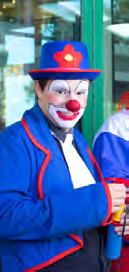
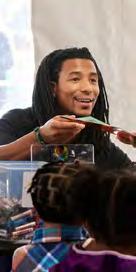

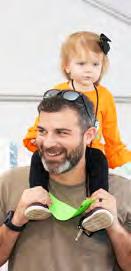
When We Become Ours: A YA Adoptee
Award-winning author of Forever Is Now, Mariama J. Lockington has more than 13 years of experience working as a K-12 educator in the nonprofit sector and currently works for the University of Kentucky’s College of Education. Edited by Shannon Gibney and Nicole Chung, When We Become Ours: A YA Adoptee Anthology contains tales from 15 bestselling, acclaimed and emerging adoptee authors, including Lockington, who genuinely and authentically reflect the complexity, breadth and depth of adoptee experiences.
STAY UPDATED. Events and authors are subject to change. Visit kybookfestival.org, for the latest updates and full schedule.


NANCY M c CABE
Vaulting Through Time
The author of nine books, Nancy McCabe directs the writing program at the University of Pittsburgh at Bradford and teaches in the low-residency graduate writing program at Spalding University in Lousiville. Her most recent book, the young adult novel Vaulting Through Time, tells of 16-year-old gymnast Elizabeth Arlington’s captivating journey through time, courtesy of the discovery of a time machine by ex-best-friend Zach.
MINDY M c GINNIS
Under This Red Rock
A ninth-generation farmer and former school librarian, award-winning author Mindy McGinnis has written multiple novels spanning many genres, from historical to fantasy, contemporary to gothic thriller. With Under This Red Rock, she delivers a powerful psychological thriller, deftly exploring the dark places in the earth and the human mind, where what is real and imaginary isn’t so easily distinguishable.
KELLIE M. PARKER
Thin Air
Kellie M. Parker is an award-winning writer of young adult fantasy and thrillers. A flight to Paris full of teenagers seeking opportunity turns deadly in her latest novel, Thin Air, a suspenseful, locked-door YA thriller.
CHRISTEN RANDALL
The No-Girlfriend Rule
When Christen Randall—a queer, fat, neurodivergent author—is not writing joyful stories for the next generation of geeky gay kids, you can find them
working at their local library branch or at home planning all the D&D campaigns they’ll run one day, they swear. The No-Girlfriend Rule, their debut novel and an instant USA Today bestseller, is a queer YA romance in which the rule of high school senior Hollis Beckwith’s boyfriend prompts her to join an all-girls group of role-playing game, Secrets & Sorcery, only to experience an in-game crush with a charismatic girl, which develops into a sweet romance.
Recipient of the ALA Schneider Family Book Award, the Anna Dewdney ReadTogether Award and the Comstock Read Aloud Book Award, Shannon Stocker is driven to fill bookshelves with diverse protagonists with disabilities, as she believes every child deserves to see themselves on the written page. With themes of self-advocacy and acceptance in the face of medical hardship, her debut YA novel, Stronger at the Seams, is for everyone who has ever felt broken.
After graduating from Spelman College, Nic Stone worked in teen mentoring and lived in Israel for a few years before returning to the U.S. to write full time. Stone, the No. 1 New York Times bestselling author of Dear Martin, delivers in Chaos Theory a gripping romance between two teens, a gut punch of a novel about mental health, loss and making the discovery that you are worthy of love.
EMMA M c ELVANEY TALBOTT
Not Far from Freedom
Educator, freelance writer and human rights advocate Emma McElvaney Talbott taught in public schools and as an adjunct professor at several universities, served as parenting editor for Family Digest magazine and Family Digest Baby magazine, and was a part of the inaugural class of Louisville Courier-Journal Forum Fellows. In Not Far from Freedom, a formerly enslaved great-grandmother in mid-1950s Kentucky shares stories of crossgenerational survival, striving, determination and forgiveness as her great-granddaughter garners knowledge, strength and understanding to chart her future and find a new way to move forward.
A Michigan native, Ambika Vohra now lives in San Francisco, writing while surrounded by tiny plants and big books and making Indian-style chai with concerning levels of cardamom pods. Her first novel, The Sticky Note Manifesto of Aisha Agarwal, starts with a deal to get Aisha out of her comfort zone so that she can write a college essay, follows a series of sticky note to-dos and dares she accepts in exchange for helping Quentin pass math class, and leaves Aisha and the reader contemplating if winning is worth it if you end up losing yourself in the process.

Turning 65 means it’s time to learn about your Medicare Advantage plan options and find the coverage that fits you best.
Did you know you can choose a Medicare Advantage plan up to three months before your big birthday month and up to three months after it? There’s no need to wait to explore your options. Plus, most plans, such as the Wellcare No Premium (HMO) plan provide additional coverage to help with everyday needs,
$0 or low monthly plan premium
Prescription drug coverage
Dental coverage
Hearing coverage
The Wellcare Spendables™ debit card with $49 every month/$588 every year to use for additional dental, vision and hearing costs, and over-the-counter health items

Plus, your Spendables™ card balance rolls over every month so you never lose a cent as long as you have the Wellcare No Premium (HMO) plan.
The coverage you need & more
Discover your options today.

AMY CIPOLLA BARNES
Child Craft
Award-winning author of three short fiction collections, Amy Cipolla Barns is a Fractured Lit associate editor, Gone Lawn co-editor and Ruby Lit assistant editor. She reads for CRAFT, The MacGuffen Best Small Fictions and Narratively. She returns with a new hybrid prose collection of stories, Child Craft, that will leave you feeling both haunted and a little less alone.
JEFF BIGGERS
With work appearing in in The New York Times, The Guardian and on NPR, Jeff Biggers is the American Book Award-winning author of many works of investigative journalism, history and theater, and winner of the Delta Prize for Literature and the Brower Award for Environmental Reporting. Written with the acclaimed director of The Fugitive, Andrew Davis, Disturbing the Bones is a propulsive debut political thriller set in the aftermath of a global nuclear weapons crisis.
WES BLAKE
Pineville Trace
Wes Blake received his MFA from the Bluegrass Writers Studio. His fiction and essays have appeared in Blood & Bourbon, Book of Matches and Jelly Bucket. Winner of the Etchings Press Book Prize, Pineville Trace follows a former Southern revival preacher on his escape from prison eventually confronting his past and seeking redemption amidst the wilderness.
JOSH BOLDT
Moneymaker
Josh Boldt writes crime fiction and mystery novels set in the American South. For fans of his prior novels, Moneymaker offers a glimpse into the early years of the familiar character Mack Abbott in this gripping tale of intrigue and suspense.
Co-founder and chair of the nonprofit Lexington Writer’s Room, Gwenda Bond is The New York Times bestselling author of many novels and nonfiction work in Publishers Weekly, Salon and The Los Angeles Times. In her latest novel, The Frame-Up, a magically gifted con artist must gather her estranged mother’s old crew for a once-in-a-lifetime heist.
Award-winning feature writer, short story author, essayist and debut novelist, Beth Dotson Brown has visited with a king in Ghana, listened to the dreams of mothers in Guatemala, and learned about sustainable living in Kentucky. Rooted in Sunrise is a story of learning to change and, in the process, discovering what is most important.
A writer from Estill County, who received his BA in English from Berea College and an MA in writing from the NaslundMann Graduate School of Writing, Rick Childers serves as Berea College’s Appalachian Male Advocate and Mentor. In Turkeyfoot, the opioid epidemic has ravaged the namesake Eastern Kentucky community and Sweetie Goodins has played no small part in feeding his neighbors’ bad habits. Before he can atone for any of his wrongdoings, he must either acknowledge his role in the lives ruined or continue paving a path of destruction.
A member of the Patawomeck Indian Tribe of Virginia, author Lora Chilton is a nonprofit executive and a writer living in Memphis. 1666: A Novel is her second work of historical fiction based on interviewing tribal elders, researching
colonial documents, and studying the Patawomeck language. The novel tells the story of her people and their unlikely survival due to the courage of two Patawomeck women.
Before Melissa R. Collings started writing women’s fiction and romantic comedies, she worked as a physician’s assistant in Nashville, where one of her favorite procedures was reconstructing a lower-lumbar tattoo after a back surgery. In The False Flat, an uplifting story about friendship, love and growth, one woman must untangle herself from a past that’s holding her back in order to move forward into the life that will set her free.
Pushcart Prize-winning author and MFA graduate from the Naslund-Mann Graduate School of Writing, Whitney Collins has been a contributing editor for The Weeklings; a book reviewer for Barnes & Noble; a reader for The Big Jewel, The Louisville Review and Carolina Quarterly; and an editorial assistant for The Sun Magazine. Her second story collection, Ricky & Other Love Stories blends elements of Southern gothic, speculative fiction and horror into 23 dark, derelict (and hilarious) tales about love … and the stories we tell ourselves about it.
Born in Morehead, and raised in a nearby holler, Bobi Conn developed a deep connection with the land and her Appalachian roots. She graduated from Berea College and Eastern Kentucky University and becoming a passionate advocate for educational access for people on the margins of society. In her third book, Someplace Like Home, a mother and daughter in Appalachia
unpack the traumas of the past in a powerful and reflective novel about family, healing and moving on.
I Can Outdance Jesus
Willie Davis is the winner of the Willesden Herald International Short Story Prize, judged by Zadie Smith, and The Katherine Anne Porter Prize, judged by Amy Hempel. The shady characters in I Can Outdance Jesus go on bizarre and unforgettable adventures, taking them from the Appalachian Mountains to the Atlantic Ocean, and bringing alive the strangeness and humor of the mountains.
ANN H. GABHART
Ann H. Gabhart has mined her rich family history and rural Kentucky background to tell award-winning stories in her 39 published books. Her most recent release, The Song of
Sourwood Mountain, returns to the mountains of Eastern Kentucky for the story of a schoolteacher at an Appalachian mission school and a young mountain girl yearning for family.
The Best That You Can Do
The author of four award-winning short story collections and more than 100 published stories, Amina Gautier is the recipient of the Blackwell Prize, the Chicago Public Library Foundation’s 21st Century Award, the International Latino Book Award, the Mellon-Flamboyan Foundation Letras Boricuas Fellowship, and the PEN/MALAMUD Award for Excellence in the Short Story. Inspired by 1970s and ’80s music and pop culture touchstones, The Best That You Can Do is a collection of stories loudly and joyfully filled with cousins, aunts, grandparents, budding romances and the nostalgia of Black childhood.

KAREN L. GEORGE How We Fracture
Retired from a career as a computer analyst to write full time, Karen L. George is a recipient of grants from the Kentucky Foundation for Women and the Kentucky Arts Council, and earned an MFA in writing from the Naslund-Mann Graduate School of Writing. The stories in How We Fracture, winner of the Rosemary Daniell Fiction Prize and set primarily in Kentucky, follow a group of diverse female characters, from teenagers to women in their 60s, who experience some points of fracture in their lives and discover how we are connected to, and nourished by, the natural world.
NATHAN GOWER
The Act of Disappearing
Nathan Gower is a professor of English at Campbellsville University with an MFA in fiction from Spalding University and a PhD in humanities from the University of Louisville. Alternating
Write five thick packets each semester. Study one-on-one with field-leading faculty. Grow in craft, confidence, and community.
We accept applications year-round. For early placement, apply by March 1 to start with the on-campus May residency or April 1 to start with the virtual June residency.
and stage children and young adults



between present-day Brooklyn and Kentucky as it enters the 1960s, The Act of Disappearing chronicles the days of Julia White, a bartender and debut author, struggling to make ends meet while unraveling the mystery of a strange photograph with a story more staggering than anything she could have imagined.
An assistant professor at Marian University in Indianapolis, Scott Guild served for years as assistant director of Pen City Writers, a prison writing initiative for incarcerated students. A musician, Guild earlier toured with the B-52s and opened for Blondie as the lead guitarist for the new wave band New Collisions. Plastic is a surreal, hilarious and sneakily profound debut novel that casts our current climate of gun violence and environmental destruction in a surprising new mold.
A founding member of the Bluegrass Writers Coalition and editor-in-chief and publisher of Trajectory Journal, Chris Helvey is an award-winning author of more than a dozen novels and multiple short-story collections. His latest unique and powerfully honest novel, Bayou, is a must read for fans of historical fiction and Southern grit lit.


A recent convert to fiction writing with an MFA from NYU’s graduate film school and several writing and directing credits for PBS documentaries, Robby Henson now teaches screenwriting at the University of Kentucky and is the Artistic Director of Pioneer Playhouse. He runs the outreach program Voices Inside, which instructs incarcerated writers in writing and performance skills to fight recidivism. His debut novel, Loud Water, details the gritty and redemptive story of Crit Poppwell and his paroled return to Breathitt County after a prison awakening to the healing power of art and creativity.
Kelly Hill has a PhD from the University of Louisville and an MFA in fiction from Spalding University. Set in Victorian-era Louisville, A Home for Friendless Women follows the home’s benefactors and several women who live there through their daily religious lessons and hard work, while they grapple with a secret that has the power to unravel the home entirely.
A born and raised Kentucky girl, Wendy M. Jett is a longtime fitness instructor, découpage nerd and improv junkie, who loves to write. Tainted picks up where her first book, Girl, left off in a cosmic blend of magical prose, poetry and recipes, wrestling cosmic questions as Girl continues her journey.
FENTON JOHNSON
A contributor to National Public Radio, Harper’s Magazine and The New York Times Magazine, Fenton Johnson has received numerous literary awards, including a Guggenheim Fellowship, Lambda Literary Awards in both fiction and creative nonfiction, and induction into the Kentucky Writers Hall of Fame. Scissors, Paper, Rock delves into the complexities of human relationships, identity and the search for self-discovery. Kentucky Humanities selected the novel for its 2024 Kentucky Reads to serve as a focal point for community-wide book discussions that promote a shared literary experience and celebrate the diverse voices and stories that shape Kentucky’s rich cultural landscape.
KAROL LAGODZKI
A native of Poland, Karol Lagodzki has fixed stucco while dangling from roofs in Paris and sorted through human cadaver heads in Florida, but his true ambition is to remain a student for as long as he possibly can. His debut novel, Controlled Conversations, challenges readers with the question of what separates people who transcend their fear and take risks for the sake of change from the rest of us.
MEREDITH R. LYONS
Meredith R. Lyons grew up in New Orleans, collecting two degrees from Louisiana State University before running away to Chicago to pursue acting. There, she made martial arts and yoga her full-time day job before relocating to Nashville. In her fast-paced debut, Ghost Tamer, a young woman discovers why she was the lucky one to survive a train crash while also facing—and conquering—shadows from her past that won’t let her go.
CHRIS M c GINLEY
Once These Hills
A middle school English and social studies teacher, Chris McGinley has published fiction and commentary on literature and film in LitHub, Cutleaf and many other forums. His third book, Once These Hills, begins in 1898 on Black Boar Mountain in Eastern Kentucky and follows Lydia King from her discovery of an ancient, preserved body, through love and marriage, to her attempts to reverse the curse of the bog body.
ANESA MILLER
I Never Do This
A recipient of an Ohio Arts Council Fellowship for creative writing, Anesa Miller was a finalist in regional fiction in the Next Generation Indie Book Awards. With Rust Belt country gothic flair, I Never Do This touches on spiritual abuse, addiction, family entanglements and the disenfranchisement of women and young people in fundamentalist settings.
LWC School of Arts and Humanities provides academic, research, and study abroad opportunities, cultivating curiosity and intellectual flexibility.
Experience limitless possibilities at Lindsey Wilson College. LWC is a
Every Student, Every Day
sah@lindsey.edu lindsey.edu 1-800-264-0138
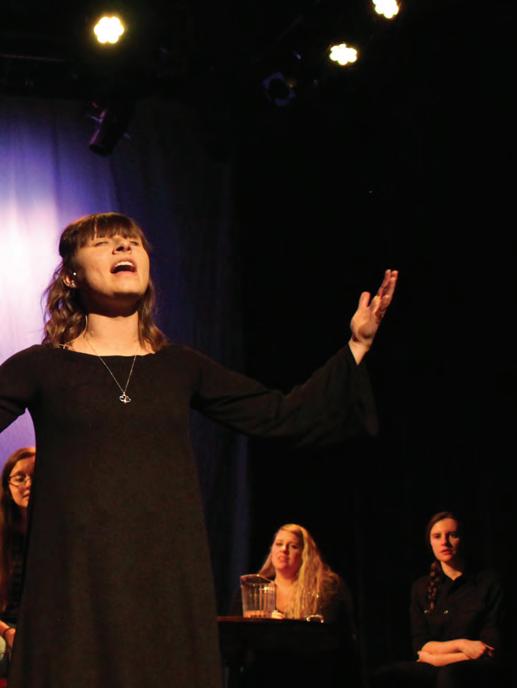

ELLEN BIRKETT MORRIS
Beware the Tall Grass
Ellen Birkett Morris is an award-winning poetry, fiction and essay writer who teaches creative writing across the country. Beware the Tall Grass skillfully weaves the story of a modern family with a young son’s past life memories as a soldier in Vietnam and the life of another young man caught up in the drama of mid-1960s America.
LAURA LEIGH MORRIS
The Stone Catchers
Laura Leigh Morris teaches creative writing and literature at Furman University and lives in Greenville, South Carolina, with her family. Narrated in alternating voices and set in economically depressed Appalachian town, Morris’ The Stone Catchers explores the trauma experienced by survivors of a school shooting.
TAMMY OBERHAUSEN
The Evolution of the Gospelettes
Tammy Oberhausen has an MFA in writing from Spalding University and lives in Bowling Green, Kentucky. Her debut novel, The Evolution of the Gospelettes, is a compelling exploration of family ties and rifts, faith and doubt, and holiness and hypocrisy in a changing world.
MARK POWELL
The Late Rebellion
A recipient of the Chaffin Award for contributions to Appalachian Literature, fellowships from the National Endowment for the Arts, the Breadloaf and Sewanee Writers’ Conferences, and two grants from the Fulbright Foundation to teach in Slovakia and Romania, Mark Powell directs the creative writing program at Appalachian State University. In The Late Rebellion, the residents of Germantown, a small South Carolina community in the Appalachian Mountains, challenge traditional notions of what it means to be Southern and what it means to be accepted, particularly when the old ways begin to crumble.
A full-time writer who splits his time between Ohio and Texas, Jim Roberts has been nominated for a Pushcart Prize, was a finalist for the Screencraft Cinematic Short Story Award, and was longlisted for both the Santa Fe Writers Project Short Fiction Prize and the W.S. Porter Prize. His debut short story collection, Of Fathers & Gods, opens a window into the most primal elements of the human condition and shows us how, try as we might, we can never fully escape the bonds of parent and child.
The Wishing Game, the debut novel of Meg Shaffer—a part-time creative writing instructor living in Louisville—was a national bestseller, Goodreads Choice Awards finalist and Book-of-theMonth Book of the Year finalist. Her second novel, the fantasy The Lost Story was inspired by C.S. Lewis’ The Chronicles of Narnia. It is a fairy tale for grown-ups who still knock on the back of wardrobes, just in case.
STRAWSER
The Last Caretaker
The USA Today bestselling author of six popular book-club novels, Jessica Strawser is editor-at-large at Writer’s Digest and a former writer-in-residence for the Public Library of Cincinnati & Hamilton County. In her latest book, The Last Caretaker, an empowering and provocative page-turner, a woman in search of a new beginning is put to the test in ways she never imagined.
You Shouldn’t Be Here
Lauren Thoman’s debut novel, I'll Stop the World, was selected for publication by six-time Emmy Award nominee Mindy Kaling through her imprint, Mindy’s Book Studio. In Thoman’s latest thrilling and twisty novel, You Shouldn’t Be Here, two strangers search for the truth behind bizarre occurrences no one else dares to discuss, only to discover that they’re connected by secrets that could destroy them both.
NATHAN L. VANDERFORD + HOLLY BURKE
Cancer in Appalachia: A Collection of Youth-Told Stories
Nathan L. Vanderford is an associate professor at the University of Kentucky College of Medicine and the Director of the Appalachian Career Training in Oncology (ACTION) Program. The program coordinator for ACTION at the UK Markey Cancer Center, Holly Burke has worked students in her language arts classroom and through the Upward Bound programs at Morehead State University. Cancer in Appalachia: A Collection of Youth-Told Stories is an anthology of powerful short stories and poems written by high school and undergrads who use their experiences in Appalachia and knowledge of cancer to convey fictional, yet realistic stories about the pain and disruptions cancer causes individuals, families and communities in the Appalachian region.
JULIA ELLEN WATTS Lovesick Blossoms
Author of 14 novels for young adults and adults, Julia Ellen Watts’ books have won a Lambda Literary Award, a Golden Crown Literary Award, and Honorable Mention for Best YA Novel of the Year in the Foreword INDIES awards. Set in a small Kentucky college town in 1953, Lovesick Blossoms is a compelling and emotional tale of passion, power, fulfillment and consequence of not playing by the rules in Appalachia.
SHEILA J. WILLIAMS No Better Time
A graduate of the University of Louisville living in Northern Kentucky, Sheila Williams is the author of seven novels, one of which was adapted for the Netflix film, Juanita. The multitalented Williams also is the librettist for Fierce, an opera commissioned by the Cincinnati Opera. Her latest novel, inspired by the author’s second cousin, who served in World War II as a member of the WACs, No Better Time is a story about a unit comprised entirely of women of color, the only unit of its type to serve in Europe during WWII.
ELIZABETH BECK
Dancing on the Page
B. Elizabeth Beck is a poet who writes fiction and the founder of two poetry series: Teen Howl and Poetry at the Table in Lexington. Her fifth collection of poems, Dancing on the Page, a memoir in verse, is an homage to the soundtrack of the process of a poet becoming herself.
MISSY BROWNSON
Hush Candy (Revised Edition)
Poet Missy Brownson resides in Georgetown and works in Frankfort as the associate director for communications and outreach for an educational agency. In Hush Candy, her accomplished debut collection, she revisits the venerable genre of domestic advice manuals—those 19th and 20th century compendia of wisdom designed to guide women (especially aspiring women of the rising middle class) in the exercise of their proper roles in the home and society.
LYNNELL M. EDWARDS
The Bearable Slant of Light
Lynnell Edwards serves as Associate Programs Director and on the poetry faculty for the Naslund-Mann Graduate School of Writing at Spalding University. Her sixth poetry collection, The Bearable Slant of Light, documents the burden and beauty of mental illness in one family and across this history of writers and artists.
RIGOBERTO GONZÁLEZ
Latino Poetry: The Library of America Anthology
Rigoberto González is distinguished professor of English at Rutgers University in Newark, New Jersey, where he is director of the MFA program in creative
writing. He edited Latino Poetry: The Library of America Anthology, a landmark Latinx poetry collection that includes more than 180 poets, spanning from the 17th century to today, and presenting poems written in Spanish in the original and in the English translation.
DORIAN HAIRSTON
Pretend the Ball Is Named Jim Crow Poet and scholar Dorian Hairston is a former University of Kentucky baseball player and a member of the Affrilachian Poets. His debut poetry collection, Pretend the Ball is Named Jim Crow, explores the Black American experience through the lens of basebal legend Josh Gibson’s life and 17-year baseball career, while addressing social change, culture, family, race, death and oppression. Hairston honors and gives voice to Gibson and a voiceless generation of African Americans.
PAULETTA HANSEL
Will There Also Be Singing?
Born and raised in Southeastern Kentucky, Pauletta Hansel is a poet, memoirist and teacher, who is a core member of the Urban Appalachian Community Coalition and has served as Cincinnati’s first Poet Laureate. She was the past managing editor of Pine Mountain Sand & Gravel, the literary journal of the Southern Appalachian Writers Cooperative. Will There Also Be Singing?, her 10th collection, contains poems of witness and protest exploring personal culpability in current social injustices and divisions, while examining the complicated grief about a land she loves and for whose future she fears.
LENNIE HAY
A former educator and MFA graduate of Spalding University, Lennie Hay now lives on the water in Southern Indiana and in Florida, drawing energy from the natural world, visual art, her family’s history and music. Lost in America chronicles the pain and joy of navigating life in America as the daughter of an immigrant Chinese father and German mother.
A professor of English and creative writing at Western Kentucky University since 2003, Tom C. Hunley has published eight full-length poetry collections, eight chapbooks and two textbooks, as well as written and co-directed You’re Not Alone, a short film produced by Forerunner TV. The poems in his latest collection, The Loneliest Whale in the World, have been called “prayers [and] a way to remind us that we are not alone, that there is a world inside this world, and it is beautiful.”
A community-building mind-body health specialist and social justice advocate, Lisa M. Miller has spent 25 years as an energy healer, is trained in clinical chaplaincy, and serves a wide demographic through support groups and workshops. Her debut poetry collection, Woe & Awe, invokes the voices of female ancestors—physical and spiritual—in poems of timeless perspective and contemporary language with fearless depth and beauty.






GREG PAPE
Former Montana Poet Laureate and current faculty member of Spalding University’s Naslund-Mann School of Writing, Greg Pape has received the Discovery/TheNation Award, two National Endowment for the Arts Individual Fellowships, the Richard Hugo Memorial Poetry Award, the Pushcart Prize, and others. The poems in A Field of First Things are evocations of experience and attempts to clarify, preserve and share first things.
MARIANNE PEEL
After teaching middle and high school English for 32 years, Marianne Peel spent three summers in Guizhou Province, teaching best practices to teachers in China and received Fulbright-Hays Awards to further her research in Nepal and Turkey. Her second poetry collection, Singing Is Praying Twice, focuses on five generations of females and the rites of passage inherent in intergenerational connections. It makes palpable the musicality amid loss and regret with much singing, dancing and rejoicing on the page.
ERIK REECE
Winner of Columbia University’s John B. Oakes Award for Environmental Journalism and the Sierra Club’s David Brower Award for Excellence in Environmental Writing, Erik Reece teaches writing and literature at the University of Kentucky. He is the author of six books of nonfiction and two previous collections of poetry, and is the founder of Kentucky Writers and Artists for Reforestation. By conveying the despair—and serenity—found in the
loneliness of the woods and tackling the frank reality of self-acceptance in the face of ugly truths, Kingfisher Blues offers a visceral encounter with the intertwined forces of nature, human struggle and redemption.
Founding editor of The Pikeville Review and professor emeritus of English at the University of Pikeville, James Alan Riley is the recipient of a National Endowment for the Arts Fellowship, the Thomas and Lillie D. Chaffin Award for Excellence in Appalachian Literature, two Al Smith Fellowships from the Kentucky Arts Council, and an Individual Artists Fellowship from the Ohio Arts Council. His second poetry collection, Uncertain Mythologies, deals with our perception of time passing and the moments that establish and accumulate meaning in our lives.
KATERINA STOYKOVA
Between a Bird Cage and a Bird House
Founder of the independent literary press, Accents Publishing, Katerina Stoykova is an author, editor, teacher and translator from Bulgaria who has published several poetry books in English and Bulgarian since her arrival in the United States. Through themes of domestic abuse, the death of a parent, the loss of a friend, and the search for cultural identity, the poems in Between a Bird Cage and a Bird House transcend the borders of language and nation-states.
Load in Nine Times: Poems
The first African American writer to be named Kentucky Poet Laureate and co-founder of the Affrilachian Poets,
Frank X Walker is a multidisciplinary artist and the author of 13 collections of poetry and a children’s book. He also serves as professor of creative writing and African American and Africana Studies at the University of Kentucky. In Load in Nine Times, a stirring new collection of historical poetry, Walker braids the voices of the United States Colored Troops— including his own ancestors—with family members, slaveowners and prominent historical figures—including Frederick Douglas, Abraham Lincoln and Margaret Garner—into a wideranging series of poems imbued with atmospheric imagery and brimming with indomitable spirit.
Founder of the Working Class Kitchen and host of Cafe LuigArt, Laverne Zabielski has traveled nationally and internationally from California to Northern Ireland as a community artist to develop writing communities and host readings. Her latest poetry collection, Mariposa: Opioid Abatement Poems, tells two parallel stories: one a harrowing descent of a beloved adult daughter into heroin addiction and homelessness, the other a quietly hopeful mother’s journey toward a heroic self-discipline.
STAY UPDATED. Events and authors are subject to change. Visit kybookfestival.org, for the latest updates and full schedule.
GEORGE BARNETT
Foraging Kentucky
Author, forager and environmental educator George Barnett owns and operates the Hungry Forager, an educational program based in the Bluegrass region and focused on teaching people about wild edibles, ethnobotany, ecology and agroforestry. With high-definition color photographs, recipes and short history lessons, Foraging Kentucky is an beginners’ guide full of information for readers who want to safely and ethically forage the delectable foods available in Kentucky.
GAYLORD BREWER Before the Storm Takes It Away
A recipient of a Tennessee Arts Commission Fellowship, Gaylord Brewer has been a professor at Middle Tennessee State University for more than three decades and is the author of 17 books of poetry, fiction, criticism, cookery and this collection of nonfiction. In Before the Storm Takes It Away, he steps into short explorations in nonfiction—alternately dark, wry, contemplative and explosive.
LUBRINA BURTON
Shitbag Soldier
Raised in Knox County, Lubrina Burton left home as a teenager to serve in Germany with the United States Army and returned home at 21. Her many experiences as a young, enlisted soldier in a pre-9/11 military inspired much of her work. Her first book, Shitbag Soldier, examines the military fairy tale that fueled Burton’s enlistment in light of the camouflage nightmares of a reality where she must survive by writing her own narrative instead of letting someone else define her truth.
ERIN CHANDLER
Bluegrass Sons: A True Crime Memoir
Memoirist, essayist and playwright Erin Chandler spent 22 years in Los Angeles
working as an actress and producer before returning to Kentucky. Bluegrass Sons is a true crime family saga about Bradley Bryant, a United States Marine who lived a double life set between Lexington and the desert days and gaudy nights of 1970s Las Vegas, Nevada, with a little El Paso, Texas; Guatemala; and Savannah, Georgia, thrown in.
KEITH CLEMENTS, MICHAEL L. JONES, ET AL.
The Soulful Sounds of Derbytown
The six authors of The Soulful Sounds of Derbytown—Ken Clay, Michael L. Jones, Wilma Westfield Clayborn, Keith Clements, Gary Falk and Ron Lewis— have spent their lives immersed in a variety of roles within many genres of music and entertainment in Louisville, all sharing the same dream: to research, write and publish a coffeetable book that would be the first-ever record of Louisville’s African American musicians, entertainers, promoters and enablers. Their comprehensive volume contains historical essays, hundreds of historical and contemporary photographs, and biographical sketches profiling award-winning African American musicians, songwriters, recording artists, singers and entertainers, who have performed on television, in films and on stage.
ANGELA CORRELL
in Tuscany:
Angela Correll is an award-winning author, whose trilogy of novels were adapted to the stage for Pioneer Playhouse, and co-founder of the annual Good Lit Writer’s Retreat, Kentucky Soaps & Such, The Stanford Inn, the Bluebird restaurant and other hospitality businesses all located in Stanford, Kentucky’s second-oldest city.
Nearly 25 years of traveling to Italy with her husband and recently making a second home in a small hilltop village through restoring a former horse stable inside the medieval walls of a tiny town form the basis of her latest book, a travel memoir called Restored in Tuscany
WILLIAM E. DAVIS
In Service to Justice: Striving to Bring Forth Our Nobility
One of the first Kentuckians to join the Peace Corps, William E. Davis has spent the past 45 years working in the field of improving justice systems across the United States and internationally. An account of a life framed by family, faith and service, In Service to Justice is a part-spiritual and part-adventure story.
LISA DICKEY
The Situation Room: The Inside Story of Presidents in Crisis
A longtime book collaborator, Lisa Dickey has helped write more than 20 nonfiction books, including 12 New York Times bestsellers, and is the author of Bears in the Streets: Three Journeys Across a Changing Russia. Written with George Stephanopoulos, The Situation Room provides the definitive, past-thesecurity-clearance look at the White House Situation Room and the people— the famous and those you’ve never heard of—who have made history within its walls.
JOSHUA A. DOUGLAS
The Court v. The Voters: The Troubling Story of How the Supreme Court Has Undermined Voting Rights
Joshua A. Douglas is a law professor at the University of Kentucky College of Law and legal expert invested and engaged in helping everyday people understand our elections. In The Court v. The Voters, he takes us behind the scenes of significant cases in voting rights—some surprising and unknown, some familiar—
to investigate the historic crossroads that have irrevocably changed our elections and the nation.
CAROLYN RENEE DUPONT
Distorting Democracy: The Forgotten History of the Electoral College—and Why It Matters Today
A contributing opinion writer for The Huffington Post and The Washington Post, Carolyn Dupont is professor of history at Eastern Kentucky University, where she specializes in African American history and American religious history. By telling the story of the Electoral College’s origins, 237-year history, and surprising present-day operations, Distorting Democracy, her most recent book, shows how we ended up with this odd method for choosing our leader.
JONATHAN EIG
King: A Life
Jonathan Eig is a former senior writer for The Wall Street Journal and a New York Times bestselling author of several books that have been listed among the best of the year by The Washington Post, Chicago Tribune, Sports Illustrated and Slate. In this landmark biography, winner of the 2024 Pulitzer Prize for Biography and finalist for the 2023 National Book Critics Circle Award, Eig gives us a Martin Luther King Jr. for our times: a deep thinker, a brilliant strategist and a committed radical who led one of history’s greatest movements and whose demands for racial and economic justice remain as urgent today as they were in his lifetime.
RODA FERRARO
The Heart of the Turf: Racing’s Black Pioneers
Roda Ferraro, director of the Keeneland Library, has more than 25 years of experience leading, assessing and promoting library, museum, research and educational services, including her work with National Museum of Racing and Hall of Fame. The first comprehensive chronicle of its kind, The Heart of the Turf showcases 125 select stories of the countless African Americans, from racetrack superstars to behind-the-scenes caretakers, who forged their way in Kentucky and beyond, making the racing industry what it is today.
TAMA FORTNER
Everyday Joys Devotional: 40 Days of Reflecting on the Intersection of Ordinary and Divine
Tama Fortner is an ECPA award-winning and bestselling author with more than 60 titles to her credit, including collaborations with such well-known authors as Max Lucado, Levi Lusko, Sadie Robertson Huff and Emily Ley. Everyday Joys Devotional is an invitation to see and experience joy with 40 short, sometimes humorous, and always real and thoughtprovoking interactive devotions.
GEORGE W. GETSCHOW
Pastures of the Empty Page: Fellow Writers on the Life and Legacy of Larry McMurtry
Former writer, editor and bureau chief for The Wall Street Journal, George Getschow is a Pulitzer Prize finalist for National Reporting and director of the Archer City Writers Workshop. Pastures of the Empty Page brings together fellow writers to honor Larry McMurtry and his impact on American letters.
DANIEL GIFFORD
Benefactors of Posterity: The Founding Era of the Filson Historical Society, 1884–1899
With a career spanning both academia and public history, including several years with the Smithsonian Institution, Daniel Gifford is a public historian who focuses on American popular and visual culture, as well as museums in American culture. His most recent book, Benefactors of Posterity, explores the Filson Historical Society’s founding era and Louisville in the Gilded Age.
JACK GIVENS + DOUG BRUNK They Call Me Goose: My Life in Kentucky Basketball and Beyond
Formerly an American collegiate and professional basketball player, broadcaster and real estate developer, Jack “Goose” Givens currently serves as the vice president of business development and external affairs at the Bowlin Group and as a radio color analyst for the University of Kentucky Sports Network. Doug Brunk is an award-winning journalist who has written hundreds of articles for trade and consumer publications. They Call Me Goose presents fans with the powerful story of a husband, father, mentor, businessman and ambassador for Kentucky—who also happens to be an iconic sports legend.
BARBARA BRADLEY HAGERTY
Bringing Ben Home: A Murder, a Conviction, and the Fight to Redeem American Justice
Twice the recipient of the American Women in Radio and Television Award, Barbara Bradley Hagerty is a New York Times bestselling author and contributing writer for The Atlantic, and she covered criminal justice and religion for NPR for nearly 20 years. Her third book, Bringing Ben Home, tells the story of Ben Spencer, a Black man wrongly convicted and sentenced to life before being freed after 34 years. It is a case that reveals how easy it is to convict an innocent person and how difficult it is to undo the mistake.
TOM HAMMOND + MARK STORY
Races, Games, and Olympic Dreams: A Sportscaster’s Life
American sportscaster Tom Hammond retired after a renowned rise to the top, including a 34-year career with NBC Sports. Mark Story has been a sports reporter with the Lexington HeraldLeader for more than three decades. In Races, Games, and Olympic Dreams, Hammond—with co-writer Story—offers an intimate and gripping look at his experiences of broadcasting from 13 Olympic Games and 16 Kentucky Derbys to providing the play-by-play commentary for Notre Dame football and announcing SEC men’s basketball.
NICHOLAS DANIEL HARTLEP
Belonging in Higher Education: Perspectives and Lessons from Diverse Faculty
Dr. Nicholas D. Hartlep holds the Robert Charles Billings Endowed Chair in Education at Berea College, where he chairs the Education Studies Department. With chapters contributed by a diversity of higher education staff and faculty, Belonging in Higher Education illuminates autoethnographic stories of belonging in higher education in the United States.
MELISSA HELTON
Troublesome Rising
Previously a tenured associate professor of English at Southeast Kentucky Community and Technical College, Melissa Helton, serves as the literary arts
director for the Hindman Settlement School. In Troublesome Rising, a powerful anthology, well-known and emerging Appalachian writers create not only a historical document and an in-depth investigation of the July 2022 flash flood in Eastern Kentucky, but also a celebration of Appalachian strength, determination and resilience.
BLAIR THOMAS HESS + CAMERON M. LUDWICK
Kentucky, Y’all: A Celebration of the People and Culture of the Bluegrass State
Friends for more than 20 years, Cameron M. Ludwick and Blair Thomas Hess have written four Kentucky travel books for destinations across the state as well as reliable sources of history, culture, arts, events, food, entertainment and living. Their latest book, Kentucky, Y’all, is an entertaining and informative compilation of the state’s favorite oddities, quirks and traditions told through stories from their experiences as writers, travelers and residents in this ode to the Commonwealth.
AVALYN HUNTER
The Kentucky Oaks: 150 Years of Running for the Lilies
Avalyn Hunter is a nationally recognized authority on Thoroughbred pedigrees and racing history whose work has appeared in BloodHorse, Thoroughbred Times, MarketWatch, New York Breeder and Louisiana Horse. In The Kentucky Oaks: 150 Years of Running for the Lilies, Hunter traces the evolution of the Kentucky Oaks through the stories of the men, women and fillies who have made the race a symbol for women’s growing participation in the sport.
ERIC R. JACKSON
Introduction to Black Studies
Recipient of the Thomas D. Clark
Medallion Award, Dr. Eric R. Jackson is a professor of history and associate dean in the College of Arts and Sciences at Northern Kentucky University, with 30 years of university experience and more than 50 publications. In An Introduction

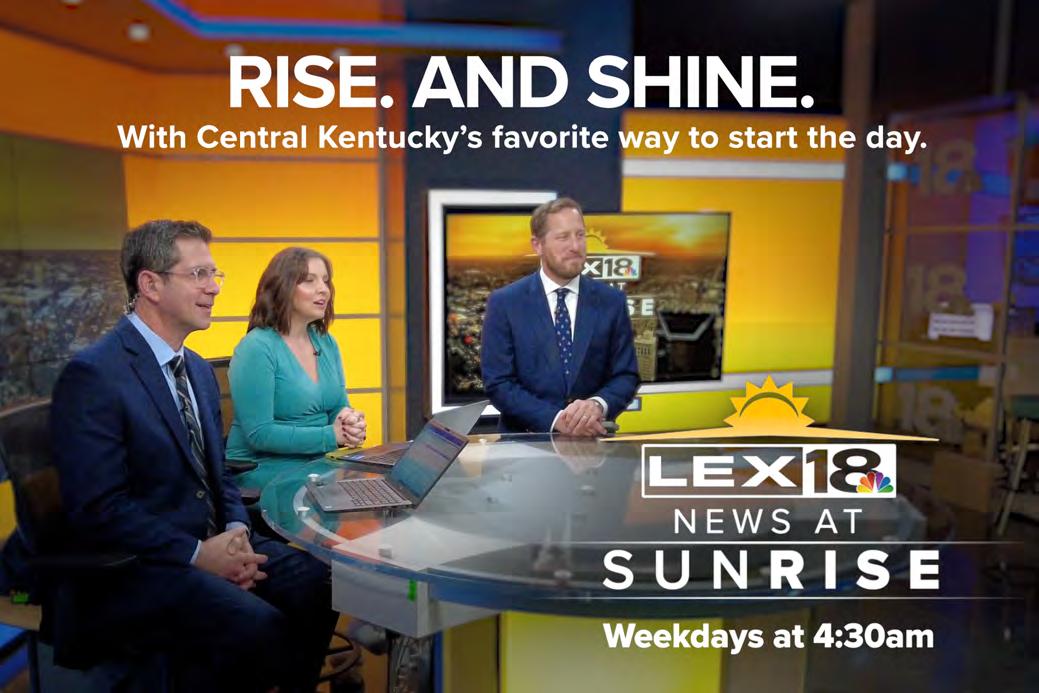
to Black Studies, he connects the growth and impact of Black studies to social justice movements, emphasizing the historical and contemporary demand for the discipline.
EUGENIA JOHNSON-SMITH
Positive Power: 31 Devotionals to Unleash Your Positive Power
A passionate member of the Kentucky Black Writers Collaborative and an active member of St. Matthew African Methodist Episcopal Church, Eugenia Johnson-Smith teaches writing classes and serves on the board of the Carnegie Center for Literacy and Learning. She wrote the foreword and several stories for The Midway Museum Midway African Heritage Series Book No. 2 published in June 2023. Positive Power is a collection of empowering stories and poems for anyone who needs encouragement or inspiration along their spiritual journey.
DAVID A. JONES + BOB HILL
Always Moving Forward: A Memoir of Friends, Family and Building Humana
Born and raised in Louisville, David A. Jones was co-founder, CEO and
chairman of the board of directors of Humana. Retired Louisville Times and Courier-Journal columnist Bob Hill collaborated with Jones to write Always Moving Forward, an inspiring and insightful autobiography of the healthcare business titan and philanthropist.
STEVEN L. JONES
Murder Ballads Old and New: A Dark and Bloody Record
Kentucky-born son of a choir director and violinist, Steven L. Jones is an artist, writer, musician and former instructor at Virginia Commonwealth University and the School of the Art Institute of Chicago. His first book, Murder Ballads Old and New, is a graveyard stroll that’s equal parts musicological, psychosocial and genealogical, excavating facts and exploring stories that reveal larger contexts, while mapping the lineages of songs and themes, forebears and ancestors.
DAN KLEFSTAD
DIY Book Promo: How to Find Readers Without Spending Money
Dan Klefstad is a longtime radio host and newscaster. His latest book, DIY
Book Promo, helps his fellow authors find readers without spending money based on lessons learned during his 30-year broadcasting career and a three-year campaign for his novel, Fiona’s Guardians
BROOKS LAMB
Love for the Land: Lessons From Farmers Who Persist in Place
Brooks Lamb, the land protection and access specialist at American Farmland Trust, is a conservationist, agrarian, teacher and author. His latest book, Love for the Land, draws on in-depth interviews and the writings of Wendell Berry to explore why some small and midsized farmers continue to care for their land. Lamb calls upon everyone to learn from these farmers and cultivate a better future for food and farming.
EDWARD LEE
Bourbon Land: A Spirited Love Letter to My Old Kentucky Whiskey
Author of Bourbon Land, Smoke & Pickles and Buttermilk Graffiti, Edward Lee is chef and owner of 610 Magnolia in Louisville and culinary director of
Humanities Council.

Succotash in National Harbor, Maryland, and Washington, D.C. In Bourbon Land, Lee pays tribute to the iconic Kentucky spirit with a book full of original recipes, Kentucky bourbon history, industry profiles and more.
ANYA LIFTIG
Holler Rat: A Memoir
Anya Liftig is a writer and performance artist whose essays have been nominated for a Pushcart Prize and whose artworks have been exhibited at Tate Modern, Museum of Modern Art, Queens Museum, Movement Research, Performer Stammtisch Berlin, Performance Space London, and many other venues around the world. In Holler Rat, Liftig skillfully interweaves family lore from her childhood with descriptions of her performance art pieces and scenes of the yearlong period in which her life fell apart, then plumbs the cathartic self-reckoning that followed.
RONNI LUNDY
Victuals: An Appalachian Journey, with Recipes
Former restaurant reviewer and music critic for the CourierJournal and former editor of Louisville Magazine, Ronni Lundy has long chronicled the people of the hillbilly diaspora as a journalist and cookbook author and has been recognized for her work with the Southern Foodways Alliance Craig Claiborne Lifetime Achievement Award. Winner of the James Beard Foundation Book of the Year Award and Best Book, American Cooking, Victuals is an exploration of the foodways, people and places of Appalachia.
JEFFREY J. MATTHEWS
Generals and Admirals, Criminals and Crooks: Dishonorable Leadership in the U.S. Military
Author of five books, Dr. Jeffrey Matthews is the George F. Jewett Distinguished Professor of History at the University of Puget Sound in Tacoma, Washington. His most recent book, Generals and Admirals, Criminals and Crooks, analyzes the bases and motives leading to American military missteps of the past 100 years and explores what could be done to curtail future misconduct of generals and admirals.
A.L. M c CLANAN
Griffinology: The Griffin’s Place in History, Myth and Art
An art history professor at Portland State University with family from and caregiving responsibilities still in Floyd County, Kentucky, A.L. McClanan studies the representation of monsters in art. Her recent book, Griffinology, is a fascinating, beautifully illustrated exploration of the mythical creature’s many depictions in human culture.
KAREN SALYER M c ELMURRAY
I Could Name God in Twelve Ways
A visiting writer and lecturer at various programs across the country, Karen Salyer McElmurray has received numerous

The University of Kentucky is boldly committed to transforming our students' lives – both in and out of the classroom.
In August 2023, we were proud to introduce UK Invests – a first-of-its-kind initiative nationally and a holistic wellness program anchored by financial education.
Through UK Invests, we are empowering and encouraging students to understand the importance of investing in themselves and their future.
Ultimately, through this initiative, every student on campus can receive a personal investment account that will be used to incentivize and reward them for developing healthy habits – from wellness to career skill building to financial literacy. During the 2023-2024 academic year, more than 7,100 students opened a brokerage account through UK Invests. Collectively, those students participating in the program have earned nearly $900,000.
This program sets UK apart from other colleges and universities by teaching real-world situations to demonstrate the benefits of saving and investing early.
“We can say we’re going to put students first, but by stepping forward in this way, we do put students first,” UK President Capiluoto said. “We believe in them, their future and what it can mean for Kentucky.”
awards, including the Annie Dillard Prize, the New Southerner Literary Prize, the Orison Anthology Award, a grant from the National Endowment for the Arts, and multiple notable mentions in Best American Essays At turns lyrical, poignant and alluring, I Could Name God in Twelve Ways probes her personal history from the stance of different places and perspectives, as she searches for acceptance and a place to call home.
KEVEN M c QUEEN
Historic Louisville Murders
A senior lecturer in English composition at Eastern Kentucky University, Keven McQueen has written 23 books on topics such as American history, the supernatural, biography, historical true crime, and what he calls real-life surrealism. Historic Louisville Murders covers 24 homicides that rocked Louisville from the 1840s to the 1920s.
JAMES WALTER MOORE
Exile on K Street
A 13-year aerospace engineer for the McDonnell Douglas Missile Systems Company, James Walter Moore started his own IT consulting firm and was a candidate for the United States Congress. His intriguing life experience and subsequent involvement in politics form the basis of his first book, Exile on K Street
KEVIN NANCE
Geneva’s Garden: Four Seasons of Beauty in Lexington’s Gratz Park
Kevin Nance is a writer, photographer and arts journalist who has exhibited in solo and group shows in Chicago, Portland, Danville and Lexington. His hardcover coffee-table book, Geneva’s Garden, is a collection of his photographs shot over the course of a year in the private garden of Elvis and Geneva Donaldson.
TIM NEWBY
The Original Louisville Slugger: The Life and Times of Forgotten Baseball
Tim Newby was awarded a Certificate of Merit from the Association for Recorded Sound Collections for Best Research in Recorded Country Music, and his book, Bluegrass in Baltimore was named one of the 30 best books about bluegrass music by About Great Books. The Original Louisville Slugger addresses the myths surrounding the larger-than-life figure Louis “Pete” Rogers Browning. It uncovers the thin line between fact and fiction, and presents an extensive account of the man and legendary ball player.
DANICA NOVGORODOFF
The Simple Art of Rice: Recipes from Around the World for the Heart of Your Table
Writer, artist and New York Times bestselling illustrator, Danica Novgorodoff has been a fellow at the MacDowell Colony, Blue Mountain Center, VCCA, Willapa Bay and Brush Creek, and was awarded the Yoto Kate Greenaway Medal, the United Kingdom’s most prestigious award for children’s book illustration. With Novgorodoff, award-winning author Chef JJ Johnson takes readers on an informative and exciting culinary adventure through The Simple Art of Rice that will help anyone master the art of cooking rice.
ELAINE FOWLER PALENCIA
On Rising Ground: The Life and CIvil War Letters of John M. Douthit, 52nd Georgia Volunteer Infantry Regiment
An award-winning writer and freelance editor, Elaine Fowler Palencia grew up in Kentucky and Tennessee and has authored six books of fiction, four poetry chapbooks, and numerous essays and book reviews. On Rising Ground provides a richly researched account of a Confederate foot soldier drawn from the 30 surviving letters he wrote to his wife, Martha.
CAROL PEACHEE
Shaker Made: Inside Pleasant Hill’s Shaker Village
Awarded the Bluegrass Trust for Historic Preservation’s Clay Lancaster Heritage Education Award, a Governor’s Award for Innovative Programming, and an Art Meets Activism grant from the Kentucky Foundation for Women, Carol Peachee is a fine art photographer and psychotherapist whose photographic work explores cultural and natural heritage. Shaker Made is a love letter to the cultural artifacts—the architecture, furniture and crafts—of one of America’s most notable utopian societies.
BROTHER PAUL QUENON A Matter of the Heart: A Monk’s Journal, 1970–2022
One of Thomas Merton’s former novices, Brother Paul Quenon, OCSO, entered the Abbey of Gethsemani at 17, studied theology at Catholic Theological Union in Chicago, and taught and lived at a monastery in Nigeria. After five decades of life at the Abbey of Gethsemani in Kentucky and 10 published books of poetry, Quenon has penned A Matter of the Heart, which mingles reflections, meditations, insights and wanderings. It includes outward experiences in nature and community, as well as sketches of monks—saintly, comical or strange— and poetic moments, for a multi-colored, diverse and surprising display of what it is like to live “an enclosed life.”
DERRICK RAMSEY
+ JOHN HUANG
They Call Me Mr. Secretary: Through the Lens of a Winner
Derrick Ramsey was the first African American starting quarterback in the history of the University of Kentucky football program, who went on to great success in the National Football League, entrepreneurial real estate endeavors, state government and academia. Dr. John Huang is a retired orthodontist and military veteran, who currently serves as a sports columnist for Nolan Group Media and a freelance reporter for several other regional publications. A story of encouragement and inspirational leadership, They Call Me Mr. Secretary follows Ramsey’s journey from an impressionable childhood spent in
segregated Hastings, Florida, up through his current role as elder statesman of both the NFL and the Commonwealth of Kentucky.
JON REYNOLDS
An award-winning photographer based in the Northern Kentucky/Greater Cincinnati area, Jon Reynolds has been a full-time adult educator with Gateway Community and Technical College for more than 25 years. His first book, Illuminating Nature, combines mesmerizing photographs with reflections on the peace we find in nature, the importance of planning and equal power of serendipity, and tips for getting that photo.
BOBBI DAWN RIGHTMYER
James Harrod: Founder of Harrodsburg, Kentucky
A lifelong native of Harrodsburg, Bobbi Dawn Rightmyer writes books of narrative historical nonfiction and historical articles for the Harrodsburg Herald, Kentucky Monthly, the Advocate-Messenger and Kentucky Humanities. Her latest book, James Harrod, details the beginning of the historic city of Harrodsburg and life of the pioneer, soldier and visionary who founded the first permanent English settlement west of the Allegheny Mountains.
AL ROKER
Al Roker’s Recipes to Live By: Easy,
America’s weatherman, Al Roker, with a career spanning more than 40 years on TV and 14 Emmy Awards, is the current weather anchor on NBC’s Today and a prolific author, with 13 books to his credit—from cookbooks to true-life historical narratives. Written with his daughter, Courtney Roker Laga, a recipe developer and trained chef who has worked in two Michelin-starred restaurants, Al Roker’s Recipes to Live By celebrates the joy of cooking for family, friends and loved ones, of gathering people together and not just for the big events but for everyday occasions, which are even more important.
DEIRDRE A. SCAGGS
Simplicity and Excellence: Elizabeth Kremer from Beaten Biscuits to Shaker Lemon Pie
Deirdre A. Scaggs is associate dean of the University of Kentucky Libraries Special Collections Research Center and director of the Wendell H. Ford Public Policy Research Center. A gastronomic history like no other, Simplicity and Excellence effortlessly paints a portrait of Elizabeth Cromwell Kremer, one of the most influential forces behind the preservation of Kentucky’s culture through its cuisine.

16 COLLEGES | 1 SYSTEM KCTCS.EDU
KCTCS is an equal opportunity employer and education institution.
JEANINE SCOTT
+ BERKELEY SCOTT
Kentucky’s Lost Bourbon Distilleries
Journalists and historians with a keen interest in Kentucky’s bourbon legacy, husband-and-wife team Jeanine and Berkeley Scott have authored seven books in the Images of America series. Their latest contribution, Kentucky’s Lost Bourbon Distilleries, recounts a part of the rich history of the Commonwealth’s world-renowned bourbon industry and the hundreds of distilleries that closed because of Prohibition or decades afterward with only old photographs left to tell this story of dedicated craftsmanship.
MATTHEW SPARKS
+ OLIVIA SIZEMORE
Haint Country: Dark Tales from the Hills and Hollers
A native of Southeastern Kentucky, Matthew R. Sparksis a published writer and researcher on minority ethnic and religious communities in the Middle East. Olivia Sizemore, who was born and raised in Leslie County, Kentucky, holds a BA in studio art from Berea College. Comprised of a mixture of claimed accounts and fabricated lore, Haint Country is a collection of weird, otherworldly and supernatural phenomenon in Eastern Kentucky, recorded and documented for the first time.
RAINESFORD STAUFFER
All the Gold Stars
Rainesford Stauffer, a Kentucky freelance writer and reporter, has contributed reports and essays to Time, The Guardian, Esquire, Teen Vogue, The New York Times and other publications. Her latest book, All the Gold Stars, is an examination, dismantling and reconstruction of ambition, where burnout is the symptom of our holiest sin: the lonely way we strive.
JON M. SWEENEY
My Life in Seventeen Books: A Literary Memoir
Former bookseller and longtime publisher Jon M. Sweeney is an award-
winning author of 40 books on spirituality, mysticism and religion. With history and anecdotes centering around books such as Thoreau’s Journal, Tagore’s Gitanjali, Martin Buber’s Hasidic Tales, and Tolstoy’s Twenty-Three Tales, he demonstrates how and why there is magic and enchantment that takes place between people and books.
Déjà Blue: A Sportswriter
Reflects on 41 Seasons of Kentucky Basketball
After a Hall of Fame career that spanned nearly 50 years, veteran sportswriter Jerry Tipton is best known for his no-nonsense coverage of University of Kentucky men's basketball, challenging questions, catchy leads, and legendary exchanges with Coach John Calipari. In Déjà Blue, he shares a behind-the-scenes look at his career in sportswriting, from his early years at the Huntington Herald-Dispatch (W.Va.) through over four decades covering the highs and lows,of the Wildcats for the Lexington Herald-Leader, including three national championships, nine Final Fours and six head coaches.
M. VEST
George Graham Vest: The Life and Times of Dog’s Best Friend
Author, teacher and frequent speaker Stephen M. Vest is the editor and publisher of Kentucky Monthly, a Governor Award in the Arts (Media) honoree. His most recent book, George Graham Vest: The Life and Times of Dog’s Best Friend, provides a detailed look at George Graham Vest, a distinguished attorney and politician known as a champion for the rights of Native Americans, who helped establish Yellowstone National Park.
An independent writer and artist, Jessica K. Whitehead is curator of collections at the Kentucky Derby Museum, where she has worked for more than a decade. In
The History of the Kentucky Derby in 75 Objects, she sets out to recover the accurate history of America’s longest continuously held sporting event and establish a balance between well-known narratives and those that are less widely shared with a personal tour of 75 objects from the museum.
Recipient of a Writing Freedom fellowship, an NAACP Image Award for Outstanding Poetry, an O. Henry Prize, an Academy of American Poets Fellowship, a USA Artists Fellowship and an Ernest J. Gaines Prize for Literary Excellence, Crystal Wilkinson was Poet Laureate of Kentucky from 2021 to 2023 and currently teaches creative writing at the University of Kentucky, where she is a Bush-Holbrook Endowed Professor and Director of the Divsion of Creative Writing. Her latest book, Praisesong for the Kitchen Ghosts, is a lyrical culinary journey that explores the hidden legacy of Black Appalachians. Through powerful storytelling along with nearly 40 comforting recipes, the book was named a Most Anticipated Book or Best Book in 2024 So Far by Ms. Magazine, Book Riot, Parade, Electric Lit, The Root, Atlanta Journal Constitution and others.
A member of the Society of American Travel Writers and the Authors Guild, Kathryn Witt is an award-winning author and travel writer who has written about Kentucky for many years, including for Kentucky Living magazine and the official Kentucky Visitors Guide. Her latest book, Perfect Day Kentucky, shares insights and insider tips to help visitors make the most of the quintessential experiences, while presenting additional suggestions to further inspire exploration and encourage longer stays.

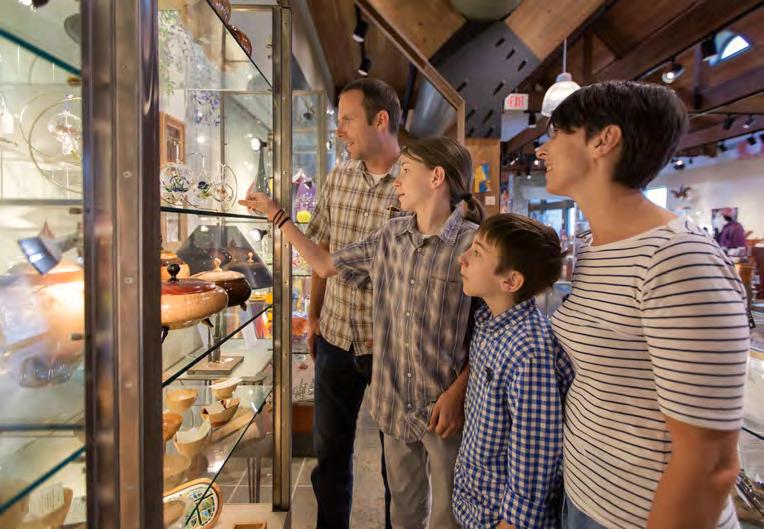
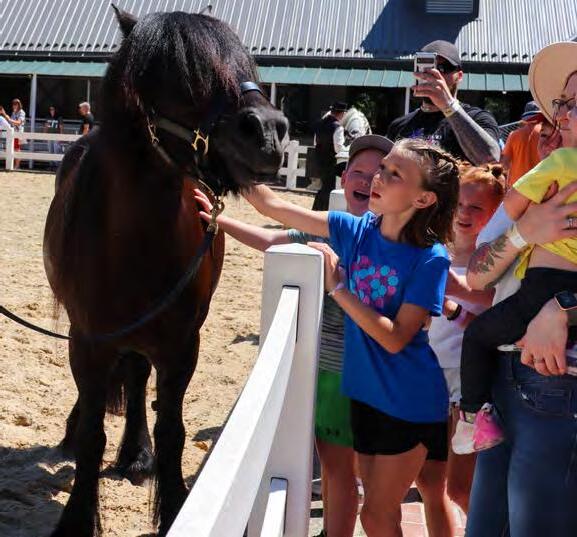
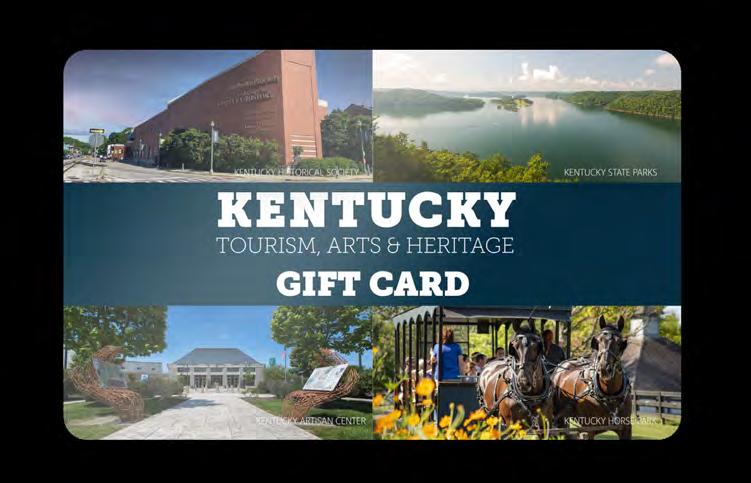
TAH Kentucky Gift Cards are perfect gift ideas for any occasion for anyone on your gift list. Gift cards can be used at all Kentucky State Resort Parks (except Breaks Interstate Park), the Kentucky Artisan Center, the Kentucky Horse Park and the Kentucky Historical Society’s 1792 Store. Use gift cards to purchase anything from meals to lodging or gift shop items. ORDER


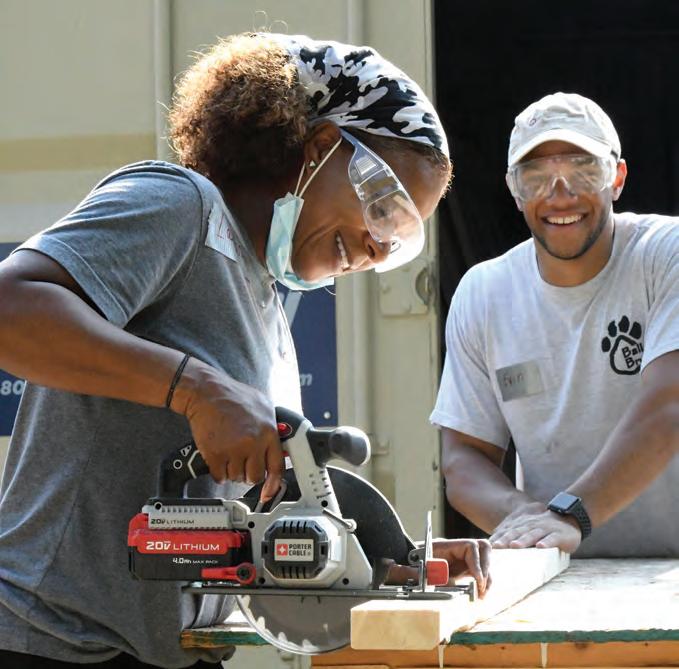


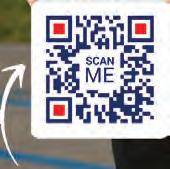
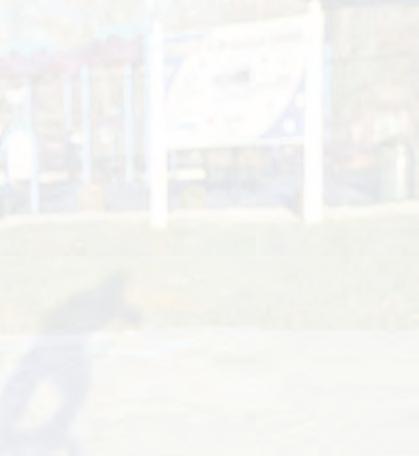
Kosair for Kids is the e safetety y ne n t fo f r ou o r co commmun u itty’ y s chillddrren.
La L st t year, 260 6 ,948 8 childdren a accrooss ss Keentucky annd southern Innddiiana beneefited d frroom the gennerrososit i y of ou our r suupp p orters

Whether t through assistance with med e ical bills, equipment, and thherrappies fami m lies could not t otherw r is ise af a foordrd, or r funndi d ng g researarchh, education, social services, or chihild advocacy, Kosair for Kids standds committed to helping all h children live life to the fullest.


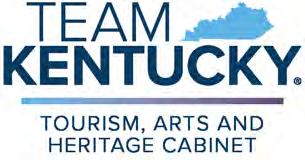

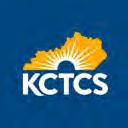




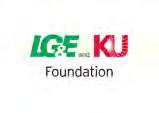

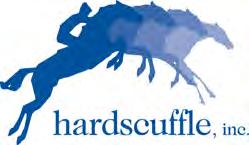

















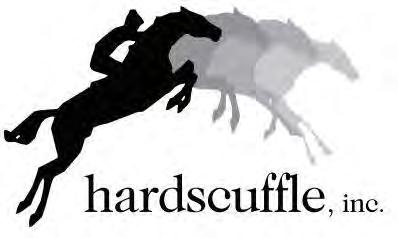
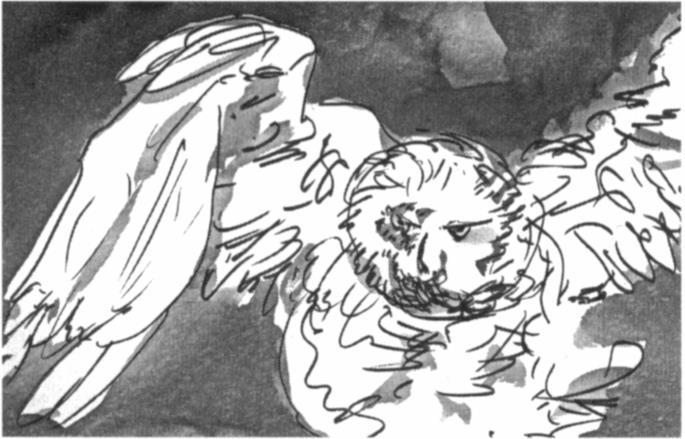

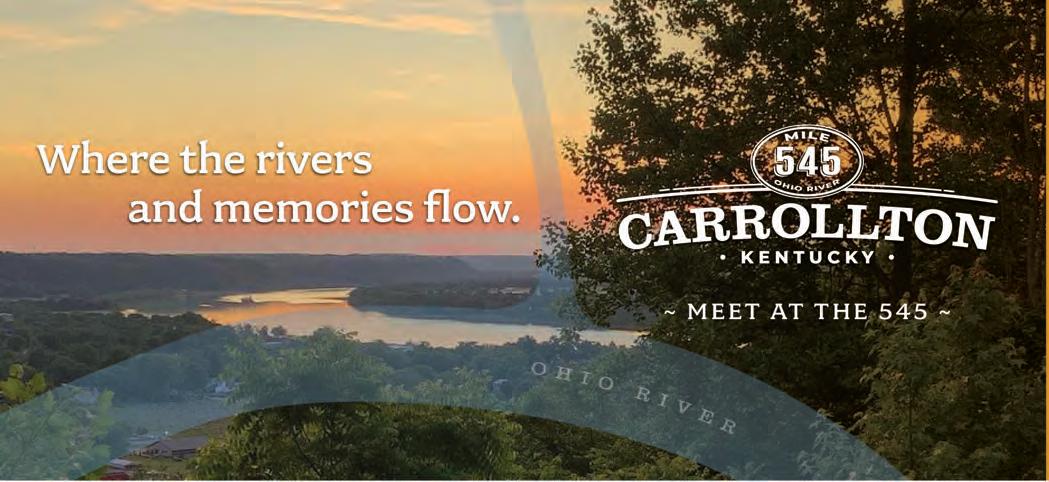
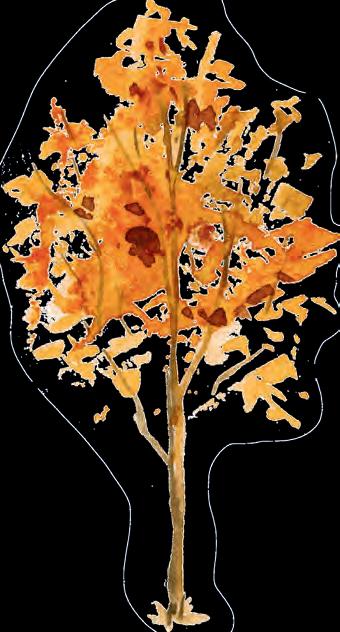

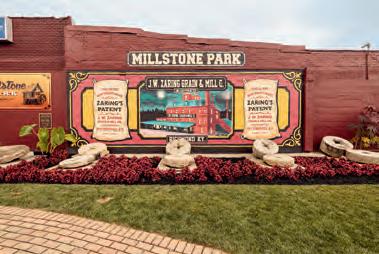

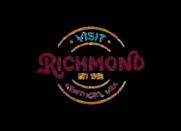
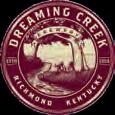




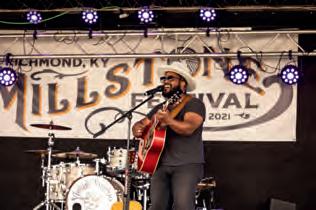




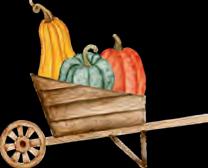

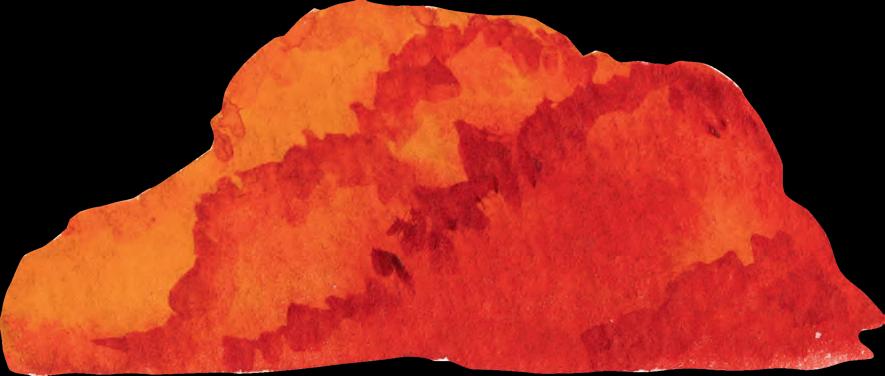
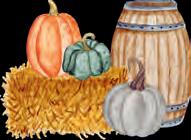

Effective January 1, 2025, a new Kentucky law requires vision screening for anyone renewing a driver’s license. In 2025, if you’ve seen a vision specialist or Transportation Cabinet credentialed medical provider in the last 12 months, simply bring in a completed vision form to any Driver Licensing Regional Office when you renew OR get free vision screening at the time of renewal. Renew early in person, online or by mail (up to 6 months before your expiration date). For more details, visit drive.ky.gov/visionscreening.

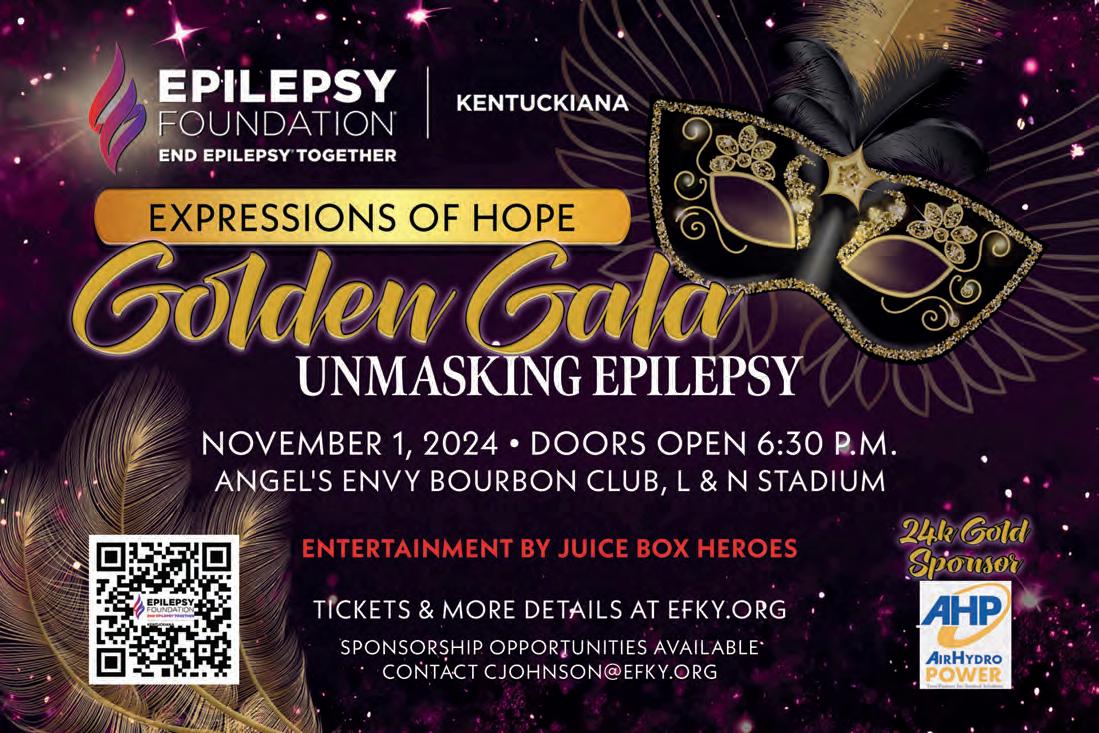
The 1901 Kentucky Derby was the 27th running of the Kentucky Derby. The race took place on April 29, 1901.
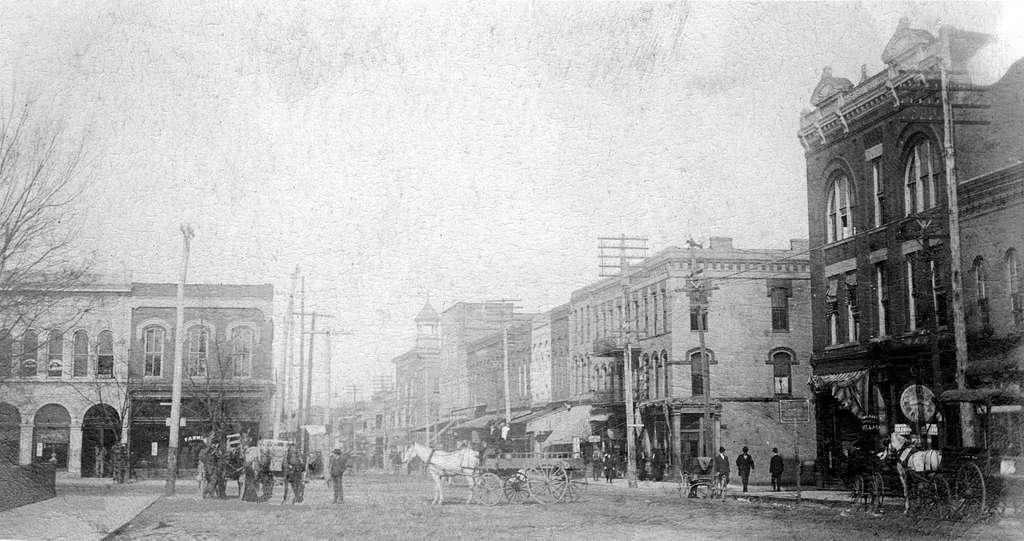
Mayfield is in the center of the Jackson Purchase, an eight-county region in far Western Kentucky. Isaac Shelby and Andrew Jackson purchased the area from the Chickasaw people in 1818. Mayfield was established as the county seat of Graves County in 1821.
Charles
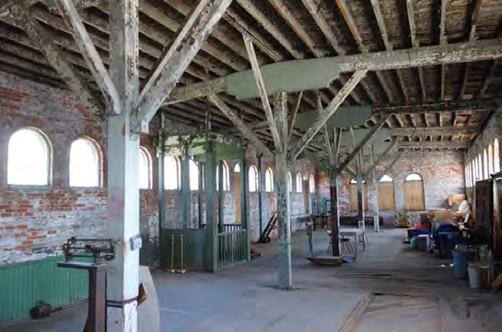
Efforts to preserve The Storehouse at Ludlow Railyard in Kenton County are currently under way, with future plans to make it the home of The Ludlow Heritage Museum.
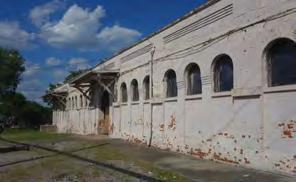
This unique 1890s building will showcase the rail history of the Cincinnati to Chattanooga line. We invite anyone with memories, memorabilia or photos to contact:
The Ludlow Heritage Museum 49 Elm Street, Ludlow, KY 41016 859.609.1808
ludlowheritagemuseum@gmail.com.
Supporters and interested parties are invited to attend The Ludlow Railyard Heritage Festival on Oct. 5, when The Storehouse will be open for viewing.
Carol Kirkwood, Hebron
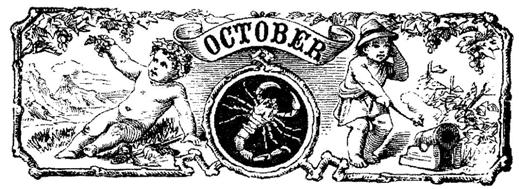
In the 1930s and ’40s, sacks containing flour and grain were made of cloth, primarily cotton fabric. Manufacturers realized that families were reusing their cloth bags to sew dresses for women and girls.
To draw attention to their brand, they began to print them with floral and other colorful motifs. They also made sure that the ink used for the logos faded after a simple wash.
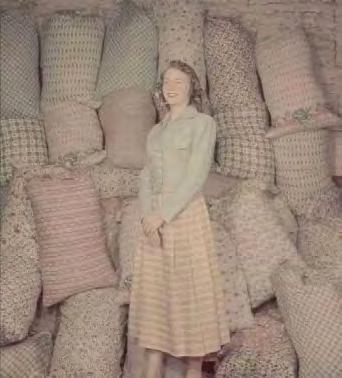
Some bags even had patterns already drawn on the fabric, ready to be cut and sewn.
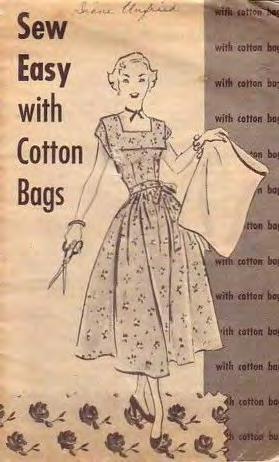
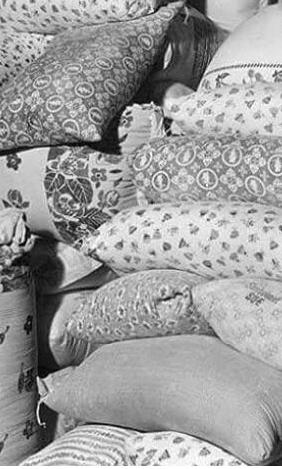
I own West Kentucky Genealogy and have thousands of old Kentucky photos and documents. I’ve raided every auction, flea market, antique shop and eBay shop, grabbing all of the Western Kentucky items I can find. I then get online and try to track down families and get the memorabilia back home, where it belongs.
I’ve been donating many of the old court books I have to the Pogue Library in Murray State University and some books to various historical societies.
Generally, I know nothing about the photos and items I find. If I see they’re identified or in a family estate, that’s usually the extent of what I know about them. There are those that I find that have local photographers’ stamps on them but no other identification. I grab them all, then post them in various locations in hopes that someone can identify them.
My sole focus is just getting them back into the family they came from. All I ever ask is my money back, if I paid $10. The only time I ask for a higher amount is if I have to ship the items. I’m not wealthy, just determined.
Don A. Howell West Kentucky Genealogy Research Books & Materials Westkygenealogy@yahoo.com
Here are a few items from Don’s collection. Others can be seen on the Facebook page Items of Interest from Calloway, Graves, and Marshall County Kentucky
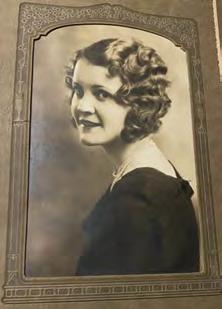
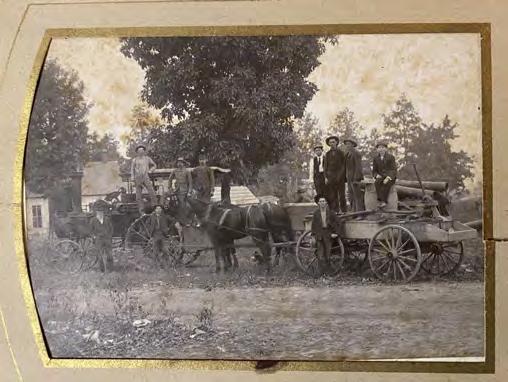
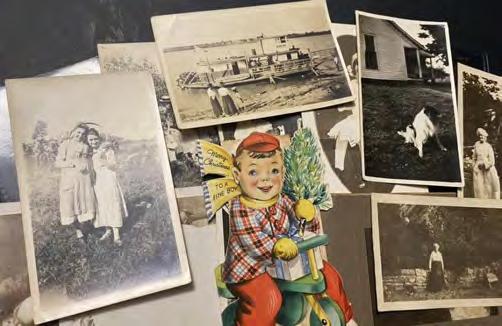


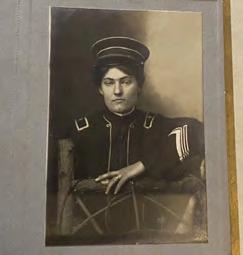
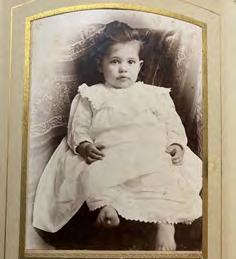
Send memories to Deborah Kohl Kremer at deb@kentuckymonthly.com or mail to
559, Frankfort, KY 40602.
Send your memory in today!
By Carol Ingle, Scott County
When I was growing up in Wayne County in the 1950s, the majority of my friends were cousins. I had a friend my age who I met on the school bus. We were in the same room in the first and second grade. Her family had more money than we did, so our friendship was limited to the bus and school. We did not live in the city, and the kids who lived in the city kind of ruled the school.
I got three brand new dresses and a new pair of shoes when I started school. They were ordered from a Sears and Roebuck catalog. We ordered them big. My granny could sew and used a treadle sewing machine. I still have that machine. My granny fixed the dresses to fit better. As I’d grow during the year, she would let them out and alter them to fit me. My shoes were a little big, but socks helped them fit better. During the year, I’d grow into them.
As soon as I got home, I hung up my dress and put my shoes away before I put on my play clothes. Granny inspeced the dress to make sure it was still clean. If it wasn’t, she washed it by hand and hung it up. I had only three dresses, and there were five days of school. My
granny told me to put the dress at the back of the hook so I would know that I’d already worn it that week.
We were dirt poor, but we were clean. I took a wash pan bath before bedtime. On the weekends, I got a big tub bath. The tub used to wash clothes was my bathtub, too.
My hair was washed on weekends and was kept short in a pixie cut. I had a family member who could cut hair. She wasn’t a beautician. My granny had her hair permed by this friend. I hated smelling those home perms.
I loved school, but the stuck-up kids let you know they were better than you. I learned to try to ignore them, but I got called names and made fun of. Some of the girls figured out that I had only three dresses and pointed it out to me. I was always chubby, so I was called “fatty, fatty, two by four; can’t get through the kitchen door.” Or “Carol, Carol, big as a barrel.” I’d come home and tell Mom or Granny. They told me to ignore them, but if they touched me, to fight back. I did hit a girl one time, and that’s because she spit on me. I slapped her cross-eyed and got a whipping with the teacher’s paddle. I didn’t care; nobody was going to spit on me. The teacher didn’t do anything to the girl who spit on me. It did stop the teasing/bulling. I got a reputation as a redneck, and that suited me just fine.
Do you enjoy reading “I Remember”? Our readers tell us it is their favorite part of Kentucky Explorer! Please share your memories of how things were, or what it was like when you were growing up. Just be sure to include the Kentucky town or county and decade when it took place. You can email it to deb@kentuckymonthly.com or write to me and mail it to Kentucky Monthly, Attn: Deb Kremer, P.O. Box 559, Frankfort, KY 40602. Be sure to include a phone number so I can call you if I have questions. Thanks! DKK.
By Eloise C. Layman, Mankato, Minnesota
When I was growing up, ladies wore hats. It was important to get a new hat for Easter, fall and winter. Milliner Miss Effie Foster, whose shop was on Main Street in Springfield (Washington County) said that every hat was individually suited to her client. She had an array of feathers, flowers, ribbons and fancy trims.
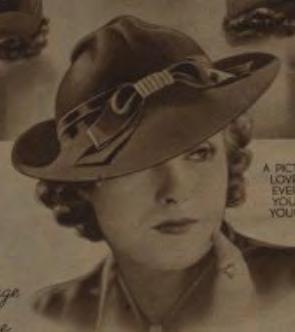
While decorating a hat, she entertained us with interesting stories about our family. She told how my grandmother, Annie Moore Cooksey, and her sister, Berti
Moore Cooksey, were always late for church because they were dressed in the latest fashions. I loved going with my mom, Reba Cooksey, to the milliner, because Miss Effie was entertaining, and it was interesting to see the artist at work.
Hat boxes were stacked from floor to ceiling in my closet at home. I haven’t seen a hat box in years. Hats were important in the 1940s and ’50s because most women only went to the beauty parlor for a permanent. They did their own hair with pin curls and bobby pins.
Miss Effie made sure that all her clients’ hats were flattering.
By Cathy Bunch, Williamsburg
When I was growing up in the 1950s and ’60s in Whitley County, Mom and Dad helped Papaw make molasses in the fall. I remember getting to stay up late because they were still running off a batch of molasses and couldn’t just stop when it got dark. We watched the mule going round and round, turning the cane mill, as it
By Markley M. Freer, Owensboro
I started school in 1941 at Belmont near the Ralph Community in Ohio County. This one-room school originated around 1850.
The wooden school building was located about a mile down the country road from our home. The school had some boards missing and a few windowpanes broken out. It was heated by a pot-bellied stove in the center of the room. In the wintertime, the teacher came early to start the fire for the day. In extremely cold weather, children wore long cotton underwear and old socks or rags on top of their shoes. In the summertime, most of the boys went barefoot. Most boys wore bib overalls, and girls wore dresses to school. The classroom was sparsely equipped, with a blackboard, chalk, erasers, a world map, a small globe, an American flag, a Bible, a dictionary and a set of encyclopedias.
squeezed the juice out of the cane. Then, they poured the juice into the long pans set over a fire, where they boiled the juice down to make the molasses. They cut off pieces of the cane for us to suck out the sweet juice. I can still remember the smell of fresh molasses being poured into canning jars. If it boiled too long, it made what they called “tough jack,” which was not a good thing, so they had to keep close watch on it, stirring it occasionally with big wooden paddles.
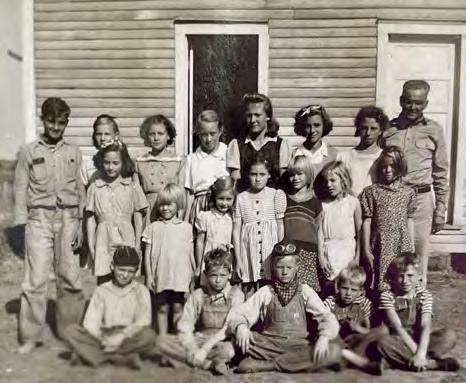
folded to take home and use again.
Our bathroom was an outdoor privy, away from the school near a fence. We had no toilet paper; therefore, you used some scrap Big Chief tablet paper after wadding and crumpling it up to make it softer. Some kids wiped themselves with the poke leaves that grew near the toilet’s door.
We began the day with Bible readings, saying the Pledge to the Flag, and singing “My Country ’Tis of Thee” from The Golden Book of Favorite Songs. It was not unusual for boys to carry Barlow knives to school in their pockets. A few would have a rifle to use for killing squirrels and rabbits as they walked home from school. This was a common food for supper. A dog might come to school and sleep underneath a tree to wait for the kids to go home.
The recitation bench was much like a church pew. It was in the front, near the teacher’s desk. The teacher called each group to recite, read and spell their lessons.
My little yellow primer was Ben and Alice by the American Book Company; I was thrilled to receive a copy later from a longtime girlfriend and classmate.
At the back of our school was a blue-and-white stone crock with a spigot for drinking water that came from the well located a few feet away. Water was drawn with a rope tied to a metal bucket. At recess, someone removed the rope to use for a jump rope. Germs were never mentioned.
Games at recess included playing marbles, pitching horseshoes or washers, and playing “Ring Around the Rosie” and “London Bridge Is Falling Down.”
All kids took their lunch in lunch boxes, sorghum molasses buckets, or brown paper bags that would be
Teachers usually were local people from the community and rode horses to the school, tying them to a tree while he or she taught. Teachers were invited to eat supper in a child’s home at least once during the school year.
School plays were simple but educational. The teacher would put up a strong string and hang sheets for stage curtains. That was my first experience in drama and performance. Who would have thought a little girl in a pink crepe paper dress (made by her teacher) could one day perform with a chorus in Carnegie Hall!
Aside from plays, another popular social event held at school were pie suppers. Folks brought lanterns for lights, as there was no electricity until 1946. Many of our neighbors didn’t own cars, so they walked or rode horses to the pie supper.
My father decided to have his children leave the oneroom school one year before it closed its doors forever. We last three siblings went to the larger Fordsville School, about 8 miles away, until we graduated high school.
By Nancy Daily Duncan As told to her daughter, Gaye Holman, of Lexington
The area known as “Patton’s Creek” once was a lively rural community in Northern Kentucky. Defined by the creek that flowed into the Ohio River halfway between Westport and Milton, the neighborhood stretched across the creek to both shores of Trimble and Oldham counties. My mother, Nancy Daily Duncan (1909-2007), wrote of her memories of the boats that carried goods to the Patton’s Creek country store owned by her parents, Bert and Stella Daily
When I was a little girl, there were few good roads, so most goods were shipped by boat or train. If you were not near a railroad, you traveled on the river by boat. There were places known as “landings” on both the Kentucky and Indiana shores, where boats stopped to pick up or let off passengers or freight.
Our landing was known as Jobson Landing. It had a “government light,” and the people who lived there were responsible for keeping it lighted as a beacon to the boats. My dad stored his merchandise in a warehouse until he hired someone to pick it up by “jolt wagon” (a big wagon drawn by two horses). There was a phone there connected by wire to our house. We called it the River Phone.
The thrill of my life was to go with my dad, or sometimes all the family, to Louisville. We got up by daylight (I couldn’t sleep the night before), dressed and drove the 2 miles to Jobson Landing to catch the boat. We stood on the bank, and the waves lapped at the shore as we watched for the boat to come around the bend in the river. (Sometimes we skipped rocks as we waited.) As the boat neared the landing, it blew one blast. Then, we started waving a cloth in the air (known as “hailing the boat”), after which the boat blew two short whistles, signaling that it was stopping for us. They lowered a stage plank for us to walk from shore to the boat. If there was any freight, the deckhands carried it off.
On the lower deck, there was all kinds of produce— chickens, pigs, cows, fruit, etc. At one landing in Indiana, they sent bushel baskets of fruit from the top of a hill on wire chutes. The deckhands always stayed on the lower deck, and when the boat was not landing, they shot dice, sang and sometimes fought with one another.
On bigger boats, the passenger decks were luxurious, with berths for overnight passengers that had red plush and brass furnishings. There was a dining space with white tablecloths and waiters in white coats. One time, I saw one of the boat officers get angry at a Black waiter for a small mistake. He picked up a chair and started beating him
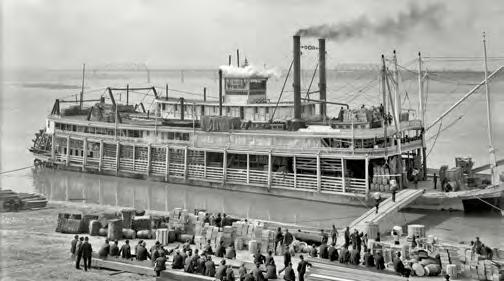
viciously on the head. The poor fellow just stood there, whimpering and taking it. Someone finally grabbed the officer, or I believe he would have killed the man. There was violence of a different kind in those days.
In the summer, we sat on the outside deck, and there was a lot to see as people got off and on and freight was loaded. One time, as they were loading hogs, some of them got away—some jumping into the river, others running into a nearby woods. We had to wait until they were rounded up.
On the bigger steamboats, it was about a three- or fourhour ride to Louisville. We got in before noon and left for home at about four o’clock. Sometimes, we went on a smaller boat run by a gasoline engine. It was called The Hanover. Its captain was a red-haired, fearless man. Once, some men or boys became rowdy, and he stopped the boat and made them get off. The next time he stopped at their landing, they appeared out of the woods (river people were supposed to be tough characters) and dared him to come ashore. He immediately started striding down the stage plank with his head up and back straight. Before he had gone far, they hit him with a barrage of rocks. He was badly injured but recovered and lived to be a old man.
On this boat, some of the freight was on the same deck as the passengers. One time, they had bags of wheat grain stacked outside the cabin. My mother was inside talking to someone and had her hand out the window, rubbing and squeezing on what she thoughtlessly thought a the bag of grain. She felt it moving and looked out and found she was playing with some man’s bald head!
Another time, when the whole family had been to Louisville, it was dark when we got off. We started to get in the buggy to go the rest of the way home, when Dad asked, “Where is your mother?” We panicked and feared she may have fallen into the river. Looking up the river, we saw the lighted boat that had started around the bend suddenly began turning around. Mom had been busy talking and had forgotten to get off! The boat brought her back, but I imagine she was sorry they did from the way we kidded her.
By Bobbie Smith Bryant, Jefferson County
As I’ve studied my ancestral past as an eighthgeneration farm kid from Western Kentucky, I’ve come to understand a great deal more about the culture and traditions of my family. Surprisingly, quilts have a way of telling our collective stories.
In early America, the Album or Friendship pattern was a popular quilt style. It often was given to couples as a wedding gift. It gained popularity when wagonloads of pioneers migrated westward to Oregon and California in search of gold and a new life.
During the post-Depression years, quilters were drawn to the style once more, particularly in Western Kentucky, with the building of Kentucky Dam. During the 1940s, the federal government relocated more than 2,600 families and took over 400,000 acres for what we know today as the Land Between the Lakes.
For women of that era, quilting provided a way to express themselves. For those who had no choice but to move away from family and friends—and others whose voices were neither heard, nor heeded—quilting provided an outlet, both physically and emotionally.
For some, the act of quilting may have provided solace. From the focus of selecting a pattern and choosing multiple pieces of material in different colors, to placing them into pleasing patterns and cutting them into sharp angles or perfect circles, quilting was a diversion from the upsetting changes occurring all around.
For others, the rhythmic and repetitive stitching provided a comforting routine. Perhaps for some quilters, having their hands busy with a creative outlet may have helped them cope with the loss they felt and to deal with their new surroundings.
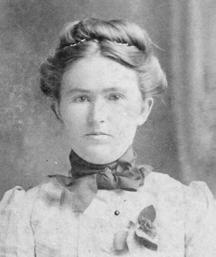
My family, like most in rural 20th century Kentucky, made a living off the land. The women not only worked in the field,
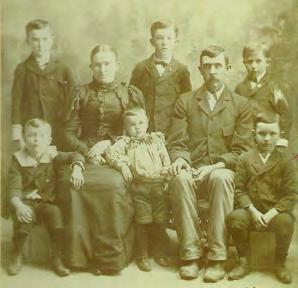
but also grew huge gardens, did all the housework, and— in their free time— quilted and sewed. My brother and I are fortunate to have the results of their handiwork— fabulous, colorful quilts that have been passed down through generations.
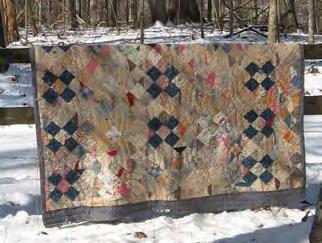
The quilt in the above photo is the oldest in our family collection. It was made by Dovie (Sutherland) Brewer (1871-1946) around 1900. Dovie was my great-greatgrandmother. We have wonderful photos of her, and the stories that have been passed along over the years bring her to life, even though we never knew her.
The eldest of three children, her dad, Jesse Sutherland, fought for the Confederate Army in Hardeman’s 31st Cavalry Battalion during the Civil War. When he was injured, her mother, Martha Ann, drove a covered wagon to Texas and brought him back to Kentucky. He died soon after from his wounds.
Dovie had the same determined grit and spirit as her mother. At an early age, Dovie married James I. Brewer, and they started a family right away. Dovie was dedicated to her family, raising six sons and a daughter in Graves County.
As each of her sons married, Dovie insisted that the couple come to live in her home for a while, so she could teach the new wives to card, spin and weave. She felt it important that they know how to make their own wool, then create a blanket and three quilts before leaving the Brewer home to start life on their own.
When I think about the amount of time Dovie had to spend taking care of children and the house—plus helping her husband on the farm—I am in awe of her capabilities and time management skills. I’m also impressed with her creativity, shown in the layout and design of this fourpatch-pattern quilt made from worn-out shirts, dresses, bibbed overalls and feed sacks.
Quilting is a legacy in which Kentuckians can take pride. Quilts have a way of telling our stories. It is an honor to reflect upon a craft that has been passed along from one generation to the next throughout our shared Kentucky and American history, connecting our past to the present.
This article is excerpted from a longer piece published in the Murray Ledger & Times, May 21, 2020.
By David Wheeler, Mount Dora, Florida
Every morning, speeding cars on Lawrence County’s Ky. 32, the old Skaggs Post Office Road, whooshed between the towns of Martha and Blaine. They came within 10 yards of August L. Sparks’ front porch. That didn’t faze him as he lounged on the woven straw seat of his polished bamboo rocking chair. He pulled down the wide brim of his tall, crushed-crown felt hat to shield his eyes from the morning sun while he listened to the national news. The radio blared from the open window behind him.
He was waiting for the smell of Aunt Maye’s doublesided thick-crust cornbread to float down the hallway to call him into the kitchen.
She fried the coarse home-ground cornmeal, sugar, cream and seasoning mixture on one side, then flipped it over on the wood-burning stove. Nothing spilled from the cast-iron skillet. It had a closed-hinged top. Halved and awash in butter she had churned, the cornbread was a start-the-day gift.
During my elementary and junior high school years, I went with my parents to visit my Grandmother Wheeler and Kentucky relatives. I particularly remember Aunt Maye and Uncle August Sparks and how differently they lived in their narrow clapboard house. It stood on low concrete blocks and was stuffed between the highway and Martha Ridge Mountain.
A hallway began at the front entrance. Its floor was covered in multicolored linoleum, and it ran by each interior room. The door to every room opened from it. The hallway ended at the back door. The appellation “shotgun house” is accurate. If the front and back doors were wide open, you could shoot straight through the house without hitting anything.
The burnished tin roof was sometimes spectacular. In the spring, it sparkled from the splatter of pattering rain. In the summer, it baked in the sun and gleamed. In the fall, it reflected the rainbow colors of nearby leaves. In the winter, it groaned until the snow slid off.
A cold-water well was near the kitchen door with a galvanized bucket hanging from a rope that ran through a pulley.
A hexagonal wire chicken coop was 20 yards away. Next to the coop, an old mule and a Jersey cow shared a shed. An interior wall divided their stalls. They had opposite-side corrals and entrances.
Farthest away was a mucky hog lot with its slop trough on a concrete pad, and a muddy pond for drinking and
soaking. Those arrangements created a solid waste distance from the well and a progressively reduced smell distance from the house. Except for the vegetable garden and severalacre cornfield in the only flat area, the land was limestonepacked and mountainside steep. There was no alternative but to jam the animal land uses close together.
Even in the late 1940s, I thought outhouses were things of the past. Not so. Theirs was down a garden path. Although a small single building, it held its own compared to the animal shelter odors on the other side of the house.
Lime sprinklings dipped from a white, red-lipped enamel bucket were scattered in the pit to speed decomposition below the two wooden seats. If you were in a hurry, waiting in line wasn’t necessary.
Pages were jaggedly torn from a dedicated-purpose Sears catalog, and there were night soil pots in bedrooms. Kentucky winters are cold. Tarrying in the john is a recent phenomenon. Although he was not the original inventor, the credit often goes to Thomas Crapper for his flushtoilet manufacturing prowess. Thank you, Tom.
The Sparks’ decades-long small income stream from the dozen barrels of oil that were produced every few months had stopped. Their two wells were pumped dry. Fracking with dynamite dropped down the drill holes no longer helped.
The open-pit coal mine where Uncle August worked had shut down. He said, “The state’s reclamation and other requirements are costin’ the mines around here so much they’re goin’ broke.”
Aunt Maye was my dad’s youngest sister, a pleasant and hospitable lady, who enjoyed the clear channel radio station that brought music into the mountains. Cool and breezy, she wore hand-sewn flowered flour-sack cotton dresses and danced around in bright yellow clogs. Strumming her Silvertone guitar, she sang along with the Grand Ole Opry stars on the radio.
Uncle August was a prideful fellow and a man of singular opinion. Dressed in bib overalls, he raged about the government as he heel stomped the floor in scuffed brown heavy brogans. Rolling cigarettes with tobacco from his Old Gold cloth pouch, he sermonized. His pulpit was a kitchen chair.
Uncle August’s prime line was, “People should not be paid not to work.” He next said, “David, you need to learn that people have to take care of themselves.”
• • •
We were bouncing up a tree tunnel road in his faded blue Chevy pickup truck. It had a rear window rifle rack.
Uncle August braked and stopped. He unstrapped his .22 caliber Winchester rifle.
“What’re you doing?” I exclaimed, He answered by firing three shots two seconds apart out the window into an oak tree. After two rapid shots came right back, he said, “I gotta know it’s safe to go in the Mulberry Grove. It’s around yonder bend.”
Split firewood was stacked by smoldering coals. Curled copper tubes connected burnished kettles. A dead possum bobbed in the tall copper corn mash vat. Misting clear liquid dripped from the distiller spout for the Mason jars that were in nearby stacked cardboard boxes.
“Will people drink that possum mix?” I asked.
Uncle August said, “Yep. It’s distilled. It’s sterilized. The possum speeds up fermentation and helps the taste.”
“Is it called Moonshine because it’s usually made at night?” I asked.
“Yep, and it’s called white lightnin’, hooch and panther piss. I’ll sell it, and I ain’t payin’ no taxes.”
Uncle August added, “All the government wants is money to spend on somethin’ I ain’t got no say about. And, when thar ain’t no jobs, I jest gotta do what I gotta do. I ain’t takin’ no government dole!”
Moonshining was now his role.
By Carlos “Carl” Combs, San Antonio, Texas
Back in June 2010, I read a story in Kentucky Explorer by William Henry Young about the first Black doctor to deliver babies in Perry County. I was born in Perry County, so this really caught my eye. Reading further, I noticed how familiar the doctor’s name, Carlow Brit Combs, looked. It intrigued me enough to dig out a copy of my birth certificate. Lo and behold, I was brought into this world on Dec. 19, 1936, by Dr. Carlow Brit Combs in Walkertown, Perry County.
It was always a mystery as to why I, a white person, was delivered by a Black doctor, which was not the custom at that time. From the beginning, I have been called Carlos B. Combs because the name recorded in the blank marked “Full Name of Child” on the the birth certificate was Carlow B. Combs. (I had gone by the name Carlos for all these years because the W in Carlow was believed to be an S.) The doctor signed the birth certificate as Carlow Brit Combs in the blank space for the doctor’s name.
Was I named in honor of the doctor who delivered me?
Or was it simply a mistake of entering the wrong name in the “Name of Child” space? Unfortunately, I have not been able to solve the mystery of the unusual circumstances of my birth. All my brothers and sisters have passed on, and sadly, my parents split up shortly after my birth. I lived with a foster family (the Watkinses) in Perry County until I was 17. I was known as Carlos Watkins until I enlisted in the United States Air Force in March 1954, when I became Carlos B. Combs again.
My life-changing entry into military service began with basic training at Sampson Air Force Base in New York, followed by technical school at Chanute AFB in Illinois and then to Great Falls AFB in Montana, where I met my wife, Grace Katherine Reynolds (Cinker). She didn’t care
for the name Carlos, so I’ve been Carl ever since but never officially changed my name.
We were always stationed in the Western United States. Our oldest daughter was born at my first permanent station in Great Falls, Montana, followed by the births of another daughter and two sons in Roswell, New Mexico, and our last daughter in Cheyenne, Wyoming. About six months after her birth, I was deployed to Nha Trang Air Base in South Vietnam for a year. This was an unaccompanied tour, so Grace and the five kids continued to live in Cheyenne while I was overseas. Following that tour, we relocated to Williams AFB in Arizona, and then on to Grand Forks AFB in North Dakota, followed by an assignment at Lackland AFB in San Antonio, Texas. I politely declined orders for one more transfer to Fort Monmouth, New Jersey, and decided to retire in San Antonio with 22-plus years of military service in 1976.
I used my GI Bill and graduated from Southwest Texas State University in San Marcos, Texas. I put my new degree to work teaching auto mechanics in a program for underprivileged students. Preparing these motivated and eager students at St. Philips College for a career that would help them make a good living was meaningful and a good choice for a brand-new college graduate.
After a few years of teaching, I moved on and worked for several other enterprises in San Antonio and continued to learn more tricks of more trades—not a bad life for a kid who grew up with a mysterious name in Perry County, Kentucky.
Fast forward to today, I am happily retired and living in San Antonio, and, of course, reading my Kentucky Explorer!
By David R. Caudill, Daytona Beach
As fall is upon us, my thoughts go back some 50 years to other falls, specifically the year we moved into the old homeplace at the head of Rockhouse Fork of Big Willard Creek in mid-June of 1953. It was way too late to plant anything other than a garden. The fields were overgrown from sitting idle for years and required a lot of work to prepare them for the following year’s corn crop.
Broom sage had overtaken the fields, and Dad decided the best way to get rid of it was to plow them and manually remove the roots. Dad, my two younger sisters, and I spent weeks grabbing broom sage roots, shaking the dirt from them, and placing them in piles for burning. I don’t know if herbicides existed back then, but we sure could have used some Roundup weed killer. I estimated we did some 4 acres. We moved larger rocks to existing rock piles that probably had their beginnings long before Dad and his brothers scratched out a living there in the 1920s and ’30s.

T-shirt would be dry, and I repeated the process.
Then, of course, there were always the snakes. I can’t think of a time hoeing that field that I didn’t come across a snake. I would hoe along, finish one hill, step up to the next hill, and when I reached out with the hoe to grab some dirt from the balk, I’d see a snake. SNAKE! My mind screamed, and I jumped two rows down the hill! As I flew backward, I realized it was a black snake and resumed my hoeing.
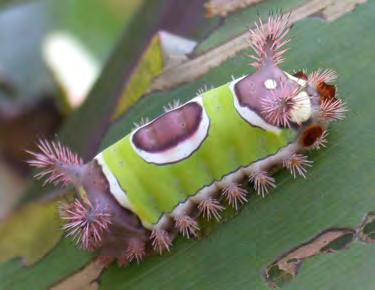
The spring of 1954 saw us planting 3 acres of corn and a 1-acre garden. There were nine of us, and Mom and Dad intended to can lots of vegetables. Dad was in vocational school using his GI Bill to learn to be a carpenter. That left me to take care of the crops. I liked to say I often stood back to gaze fondly at the long green rows of corn, but honestly, it was just a lot of work. The first hoeing wasn’t too bad, but on the second hoeing, two things made it an uncomfortable chore—summer was in full tilt by then and hot, and the corn was high enough to block any chance of a breeze. I always took a second T-shirt with me on the second hoeing. The rows were so long that by the time I made a round (to the end and back), I was soaking wet. I wrung out the T-shirt, hung it up and put on a dry one. By the time I made a round, the first
As things will, everything was laid by, and I naïvely thought the worst was over. As September rolled around, it became time to harvest the crop. Some farmers cut the corn close to the ground and placed stalk, corn and all in tall shocks. I know of a few people where I lived who did that. Others topped the corn (cutting it above the top ear) and stripped the remainder of its leaves. These were placed in bundles and were tied using one or two tops. These bundles were stacked in shocks around two remaining corn stalks. To tie the shock required you to hug the shock and pull everything tight to tie it.
Therein lay the problem. There was (and still is) an insect that loves corn. It is yellow with a design on its back that looks like a saddle. The packsaddle caterpillar, also known as a saddleback, is fuzzy-looking, much like a woolly worm, but there the resemblance ends. Each of those fuzzy things or cilia must have stingers, and they hurt like the devil if you touch the insect. Its sting is guaranteed to raise a large red blister on the skin, and you
are at risk of getting stung when topping the corn, when stripping the leaves, and when hugging the bundles to make a shock! I have never cut tops or pulled fodder without getting stung at least once, and often many times.
What a hot, sweaty chore. The corn leaves made the skin itch so badly that experienced hands wore long-sleeved shirts. Still, you could never tie shocks without getting pieces of corn leaves inside your shirt. And don’t forget the packsaddle.

In one sense, I have unpleasant memories of the fall., but the views were and still are terrific. The mountainsides look like God’s coloring book, with all the different shades of brown, yellow, red, green and even pink. There is nothing more pleasant than standing on your porch and watching the sun work its way over the mountains and see the dew on the leaves sparkle like diamonds. It tends to make one forget harvest time and the packsaddle … well … almost. Reach 120,000 readers with classified advertising available in Kentucky
For more information, contact Deborah Kohl Kremer at deb@kentuckymonthly.com
BURLINGTON ANTIQUE SHOW — More than 200 dealers, 10 minutes south of Cincinnati. Sunday, Oct. 20, 7 am-3 pm, rain or shine, 513.922.6847, www. burlingtonantiqueshow.com.
BOOK FOR SALE — A Hillbilly: His Search for the Correct Path. This autobiography or memoir tells part of the story of one Kentucky hillbilly. Order from Amazon or a bookstore. $14 paperback; $5.99 Ebook from Amazon. You may read part of the Ebook free on Amazon to preview it. (O)
WANTED — Paying cash for large diamonds; collections of vintage wrist and pocket watches; gold and silver coins; sterling flatware and serving pieces; gold and silver jewelry; collections of arts and crafts and pottery; antique advertising signs; antique walking canes; pocket knives; collections of antique guns and swords; military collections; early hand-crafted crocks and jugs; and musical instruments. Call Clarence, buyer for more than 35 years, 606.531.0467. (F-D)
WANTED — All types of antiques and collectibles. Top prices for gold, silver and costume jewelry. Scrap gold. Gold and silver coins. Wrist and pocket watches. Collections. Early post cards and fountain pens. Civil War swords and other military items. Vintage toys. Pocket knives. Lighters. Old eyeglasses. Pottery and stoneware. All types of railroad items. Advertising signs. Handmade quilts. Marbles. Jars. Much much more. Complete and partial estates. Call Clarence, buyer for more than 30 years, at 606.531.0467. (F-D)
BY BILL ELLIS
If you figure this is another “name dropping” venture by someone who is certainly not famous by any means, you are only partially right.
My first year of teaching and coaching came at Harrodsburg High School in August 1962. Not long after I had started practice, I got a call from a Jaycees member inviting me to interview new University of Kentucky football coach Charlie Bradshaw for the local radio station. I agreed. The Jaycees member brought a state-ofthe-art tape recorder to our house and gave me the rudiments of the machine’s mechanics. Actually, all I had to do was push the “on” button.
I went to the UK Athletics Department offices at the appointed time. A secretary led me down a hallway, where I saw Coach Adolph Rupp. We introduced ourselves, and then Rupp’s assistant coach, Harry Lancaster, appeared. Lancaster asked about my hometown, and when I said Shelbyville, he said, “I taught and coached at Bagdad High School.”
“My mother recalled when you coached there,” I replied, and we conversed as if we were old friends. He was a graduate of Georgetown College, my alma mater.
My first impression of Bradshaw was that he was possessed by his profession. UK football fans may recall “The Thin Thirty” 1962 squad. About all I recall of the interview 62 years later is that Bradshaw was excitable. He became so absorbed in describing his defense that (and I can never forget this) saliva drooled down both sides of his mouth.
That year at Harrodsburg, I also
came under the influence of a wonderful mentor, Forest “Aggie” Sale, who was basketball coach at the school until 1960. One of Rupp’s first All-Americans, Sale was full of knowledge and advice. He and Harrodsburg Principal Roy Camic, a hardened war veteran, kept me from making many mistakes. I have kicked myself many times for not interviewing Sale about his life.
Four years later, I embarked on an academic career by entering the master’s in history program at Eastern Kentucky University.
The other famous people I have “known” have been through my work as a historian. I joined the EKU faculty in 1970.
Not long after I moved to Richmond, I met President Robert R. Martin, when—because of a rotation system then in effect—I became president of the Faculty Senate. He was always good to me.
Bill Berge, director of the Oral History Center at EKU in the mid1970s, devised a project to interview people in each Kentucky county who represented “County Elites.” At 50 bucks an interview, I gladly took up the task.
One of my first assignments was to interview Jefferson County JudgeExecutive Mitch McConnell. I found him to be low-key, soft-spoken and rather terse on occasion. He certainly has become famous, hasn’t he?
When Berge left the Oral History Center, I became director for a short time. I carried on the Carl D. Perkins
Oral History Project and initiated others. Of course, I interviewed Carl D. Perkins. I spoke with him after he had completed a hearing on black lung disease one hot Washington, D.C., afternoon and found him to be a warm human being.
As others had told me, Perkins did have a soft whistle when he spoke, but he was not wearing his famous white socks that day.
In studying the life of Louisville entrepreneur Patrick Henry Callahan, a Catholic layman and progressive leader, I interviewed people who had known him. As a young man, Barry Bingham Sr., the owner of the Louisville Courier-Journal and Louisville Times, had known Callahan. A few years later, I interviewed Bingham about his father, Robert Worth Bingham, who had purchased the two newspapers in 1918.
Barry Bingham was a bit patrician in his bearing, carefully spoken and well-dressed. We hit it off, and he was frank about his father’s contemporaries and his own.
Former Gov. A.B. “Happy” Chandler had been a contemporary of the elder Bingham’s in the 1930s, when Chandler was governor. Chandler recalled Robert Worth Bingham vividly. During the ’30s, kidnapping became a serious crime. In 1934, the famous Alice Stoll kidnapping in Louisville brought this home to Kentuckians. While governor in his first term (19351939), Chandler remembered that he and the elder Bingham discussed the
case. When asked if he had a firearm, Chandler replied he did not. Bingham gave a pistol to Chandler. When I interviewed Chandler more than 50 years later, he replied that he still kept it in his bedside table. He then explained how he and Bingham drifted apart politically.
While working on a project that I eventually turned into a monograph, The Kentucky River—published by the University Press of Kentucky in 2002—historian Todd Moberly and I interviewed nearly 150 people.
Among this group was Col. George Chinn, an expert on automatic weapons, who persuaded then Senator Chandler to insist that the United States Marine Corps induct him as an older and obviously overweight 300-pound recruit.
I interviewed Chinn as part of “The Kentucky River Oral History Project.”
As a youth, he recalled “living half of the year on the Kentucky and the other half in the Kentucky” because of constant flooding. At age 84 and hard of hearing, I can now sympathize, whole-heartedly recalling how Chinn had to shout into the telephone in a call to his wife during an interview break.
As a side note, Carlton Jackson wrote a great biography of Chinn called Kentucky Maverick. Don’t miss it.
While at EKU, I interviewed other famous people, including former governors Earle Clements and Louie B. Nunn, and two-time Lt. Gov. Harry Lee Waterfield. However, I was always more comfortable interviewing folks like myself—the not-so-famous, hard-working individuals.


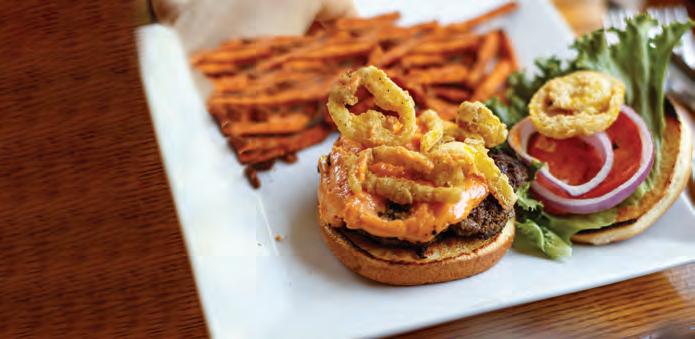


BY GARY GARTH
The morning of Sept. 16, 1805, in what is today Idaho County, Idaho, dawned snowy and cold. Conditions were miserable and would worsen throughout the day. The Corps of Discovery, led by Captains Meriwether Lewis and William Clark, was attempting to traverse the rugged Bitterroot Mountains on its way to the Pacific Ocean and into American history. It was tough going.
Before breaking camp on a day when Clark later would record that he had been as “wet and as cold in every part as I ever was in my life,” the captain, an experienced woodsman with deep Kentucky roots, spotted four mule deer. The previous evening, the party had dined on horse meat. The venison was needed. Clark set his rifle, a flintlock muzzleloader (an antique by today’s standard but a modern, high-tech weapon in that time and place), took aim and pulled the trigger. The hammer snapped, but the gun failed to fire. He repeated the sequence six more times. It’s unknown whether Clark gave up, or the deer moved out of sight or beyond range. But checking his rifle, which had never before failed him, Clark “in examining her found the flint loose.”
Few details are known about the specific firearms carried by the Corps of Discovery. It is known that several members likely were armed with a standard military issue model 1795 musket. The Corps of Discovery was, after all, a military unit. But other members, including Clark, Lewis and the famed nine young men from Kentucky (Charles Floyd, Nathaniel Pryor, William E. Bratton, John
Colter, Joseph Field, Reuben Field, George Gibson, George Shannon and John Shields)—several of whom Clark had hand-picked—carried their personal rifles, as did another famed member from Kentucky—York, the man enslaved to Clark. Specifics of those shooting tools are unknown, except they were muzzleloading flintlocks, each subject to the fractiousness of such weapons.
The Corps survived the Bitterroots, reached the Pacific, and returned with great fanfare to St. Louis, thus weaving themselves into the rich fabric of American history.
The weapons on which their survival depended evolved but didn’t totally disappear.
A muzzleloading-style gun is selfexplanatory. A muzzleloading firearm is simply a rifle or pistol that is loaded from the muzzle. And they still are employed as hunting tools, although the muzzleloaders used by most of today’s hunters are sleek, inline models armed with saboted bullets; designed with lightning-fast, sure-fire ignition systems; and powered with clean, fastburning substitutes for black powder. These would scarcely be recognizable to Clark and his companions.
Kentucky offers 11 days of muzzleloader-only deer hunting. It’s a split season, typically opening with the third weekend in October (Oct. 19-20 this year) with nine additional days in December. The October muzzleloader hunt is popular. It offers hunters their first shot at a deer with a firearm. Hunters typically bag about 10,000 deer during the two-day October muzzleloader hunt.
It’s unknown how many hunters
today use the traditional-style sidelock flintlock rifle that Clark would have recognized. If you’re in this minority, as I am, don’t neglect to check the tightness of your flint.
Muzzleloaders are allowed statewide for deer, but Kentucky has a hunting area specifically reserved for the weapons of old. The 7,731-acre Pioneer Weapons Wildlife Management Area in Bath and Menifee counties was established in 1962 and may have been the first area of its kind in the country that limited hunters to primitive weapons. Little has changed. Regulations prohibit the use of both modern firearms and in-line muzzleloading guns. Scopes are off limits, but open and iron sights are permitted. The rough terrain is heavily forested. It’s a challenging area to hunt. Clark would feel right at home. Details are at app.fw.ky.gov/Public_Lands_ Search/detail.aspx?Kdfwr_id=36
Kentucky is now a chronic wasting disease (CWD) positive state, and wildlife officials have expanded the CWD surveillance zone to eight counties for the current deer season. These include Ballard, Carlisle, McCracken, Calloway, Marshall, Graves, Hickman and Fulton counties. Special regulations apply inside the CWD zone, including no baiting for deer.
For more information, contact the Department of Fish and Wildlife Resources at 1.800.858.1549 or go to fw.ky.gov/Wildlife/Pages/CWDSurveillanceZone.aspx
Readers may contact Gary Garth at editor@kentuckymonthly.com

Juniors and seniors in high school from across Kentucky come to Gatton to take courses at Western Kentucky University, conduct research, and study abroad. They thrive in Gatton’s supportive environment designed just for them. With scholarships covering tuition, housing, and meals, Gatton students explore their infinite possibilities.
Explore your infinite possibilities. Applications for the Class of 2027 will open August 1, 2024. Learn more at www.wku.edu/academy.
WEBSITE: wku.edu/academy EMAIL: academy@wku.edu PHONE: 270-745-6565 facebook.com/gattonacademy @gattonacademy


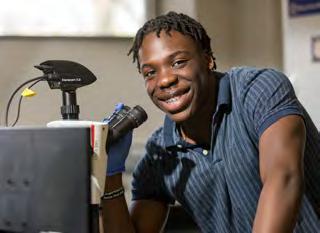


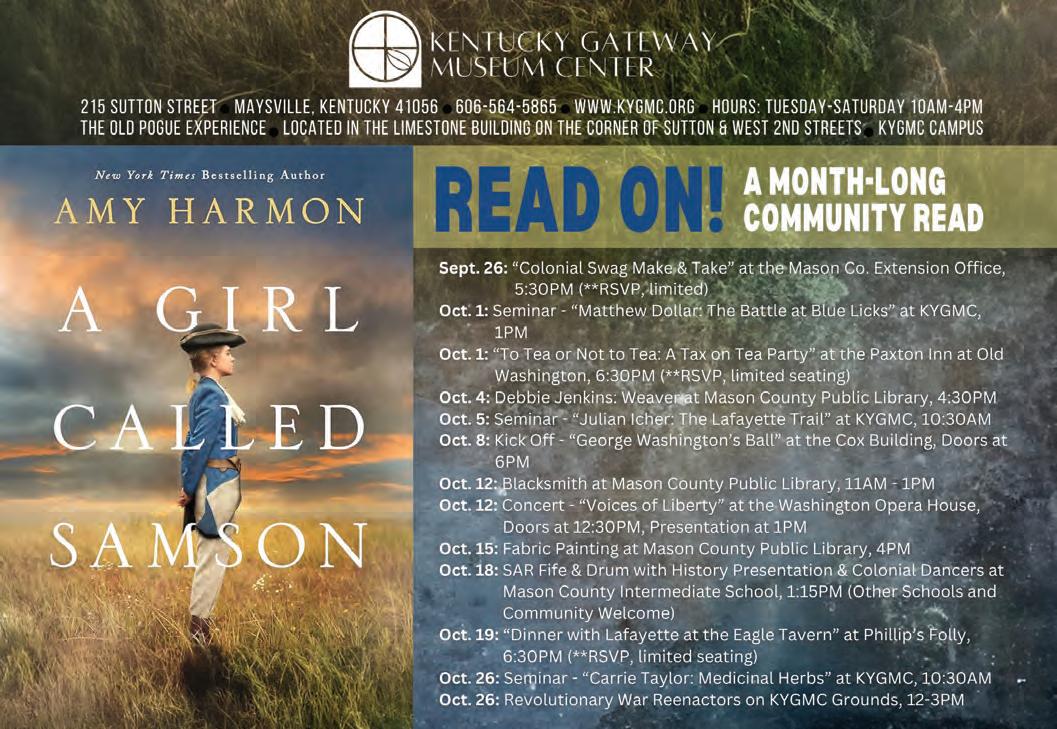
If I were a better record keeper, I could tell you with charts and data exactly how the 2024 gardening season stacked up against previous years. Alas, I am not, so what follows comes from (an increasingly suspect) memory.
In many ways, this past season was much like those of the last decade or so: The weather was quirky; insect and disease attacks were up and down; and new challenges, especially from fourlegged critters, came into play.
We had more of what I would call a “real spring” this year. Temperatures remained cool almost until the onset of summer, and rains were abundant but not overly generous. Cool-season vegetables, such as broccoli and cabbage, and flowers, such as pansies and the spring bulbs, held up well. Bloom times on my 15 or so varieties of daffodils were incredibly long. In Central Kentucky where I live, we were spared the usual strong spring storms, so even delicate flowers, such as tulips, put on a lengthy show.
On the weather-related downside, we again had several late frosts that damaged fruits and flowers in many locations. In my garden, I had little damage to fruit trees and brambles from April frosts, but others in my county (Shelby) lost buds and blooms on everything from apples to raspberries to hydrangeas.
In the summer, we had several weeks of drought or near-drought conditions. In my part of the world, we had a month-long dry spell in early
summer followed by another in midsummer. Like late frosts, dry spells during the summer are becoming a constant in Kentucky gardens.
The lessons gardeners should take from those weather challenges are twofold. First, we need to seek out vegetables, fruits and flowers that bloom toward the latter end of their growing seasons to escape potential late frosts. Second, we need to have equipment on hand to irrigate our gardens during the almost inevitable dry spells we’re going to encounter every summer. We should have plenty of mulch, purchase soaker hoses to water new plants, and buy annuals and perennials that can tolerate periods of low moisture.
Another trick to avoid damage from hot sun and dry weather is to plan your garden for some afternoon shade. Catalogs and gardening sites describe many plants as requiring full sun. But in the South, including most of Kentucky, some afternoon shade is appreciated by even the most sunloving plants. If you’re planning a perennial pollinator garden, for example, position the taller plants, such as Joe Pye weed, amsonia, some of the monarda (bee balm plant, ‘Jacob Cline’) and native grasses, such as switchgrass, on the west side of the bed. They can soak up the rays and will shade shorter plants growing at their feet from the wrath of the summer sun in the afternoon.
On the insect and disease battle, ’24 came off pretty easy, at least for me. The predicted plague of cicadas never showed up at my place.
Japanese beetles were few, although I heard from others whose gardens were devastated by them. Aphids, thrips, spider mites and other juicesucking insects were only a minor nuisance. Flies seemed to be more abundant this past summer than normal (I can still hear my mother yelling at us kids to “close that screen door!”), but they don’t do much harm in the garden.
But as gardeners, we shouldn’t become complacent. Just because ’24 wasn’t a bad year for insects and disease doesn’t mean we shouldn’t be ready for next year. Have plant protection on hand before the season starts. Garden centers tend to order products once in spring and, after running out of supplies, don’t order again until the following year.
On the other hand, four-legged critters became more challenging, especially deer. When I worked at Extension, I constantly heard, “I just gave up growing [fill in the blank] because of the deer.” I could sympathize, but not empathize, with that until this year.
In the spring of 2023, a doe had triplets in a shrubby patch in my neighbor’s back 40. They didn’t do much damage last year except to nibble the lower hanging apples.
I didn’t take any precautions against deer, assuming they would scatter to other properties, get run down on U.S. 60, or be shot by hunters. Those things didn’t happen. All three were back in ’24. They
wiped out the early corn, tromped all over newly planted vegetables, chewed on fruit trees and took most of the fruit within reach, and did some damage to flower beds.
Unfortunately, battling any fourlegged creature, especially deer, is much more challenging than, say, a bug infestation. The battle requires constant spraying of a repellant, fencing or, finally, giving up on those plants the critters prefer.
For deer, there are a few options. Scare tactics—such as balloons, streamers and radios blasting music— work for a while. Then the deer get used to those and ignore them. But they may work long enough to harvest a crop or protect flowers.
Likewise, spraying repellents works for short periods, but they have to be reapplied after so many days or after heavy rains.
Fencing works if you can frame your garden with a fence at least 7 feet high; 8 feet is better. I had pretty good luck keeping deer out of late corn by putting up an electrified woven fence that was easy to install and can be moved from place to place. The deer can certainly jump over it, but they seem to fear getting entangled in the fence. I plan to have more of it on hand next year.
Yes, I could give up growing sweet corn, apples and other deer delights next year, but I don’t plan to. I have just begun to fight, mama deer and her three babies!
See you next year.
Readers may contact Walt Reichert at editor@kentuckymonthly.com

1542-0507, 3)
Annually: 10, 6) Annual Subscription Price: $25, 7-8) Complete Mailing Address of Known Office of Publication & Address of Headquarters: 100 Consumer Lane, Frankfort, KY 40601, 9) Full Name & Complete Mailing Address of Publisher, Editor & Managing Editor: Stephen M. Vest, 100 Consumer Lane, Frankfort, KY 40601, 10) Owner: Vested Interest Publications, Inc., 100 Consumer Lane, Frankfort, KY 40601-8489. Shareholders owning at least 1%: Barbara K. & Stephen M. Vest, 1001 Silver Creek Drive, Frankfort, KY 40601; Michael & Mary Embry, 152 Skyview Drive, Frankfort, KY 40601; Estate of Thomas Hall, 661 Berry Lane, Lexington, KY 40502; Leesa Shake, 4014 South First Street, Louisville, KY 40214; Mary Jo Ratliff, PO Box 1347, Pikeville, KY 41502; Rebecca & Randy Sandell, 7419 Falls Ridge Court, Louisville, KY 40241; Jack E. Dixon, 6114 Franklin Villa Way, Indianapolis, IN 46237; Robert Hawkins, 1140 Rostevor Circle, Louisville, KY 40205; Barry Royalty, 4325 Cloverleaf Drive, Louisville, KY 40216; Judy Harris, 1713 Parkridge Parkway, Louisville, KY 40214; Gregory Carnes, 4106 Montalto Court, Louisville, KY 40299; Ted Sloan, 1067 Macland Street, Lawrenceburg, KY 40342; Walter Norris, 418 Northridge Drive, Lexington, KY 40505; Kendall Shelton, 204 Denison Way, Frankfort, KY 40601; Barbara Ann Chiericozzi, 7114 Topsail Court, Tega Cay, SC 29708; Michelle McDonnell, 10706 Norman Avenue, Fairfax, VA 22030; 11) Known Bondholders, Mortgagees & Other Security Holders Owning or Holding 1% or More of Total Amount of Bonds, Mortgages or Other Securities: First Federal, 216 West Main Street, Frankfort, KY 40601, 12) For completion by nonprofit organizations or other securities: not applicable, 13) Publication Title: Kentucky Monthly, 14) Issue Date for Circulation Data: September 2024, 15A) Total No. of Copies. Avg. No. of Copies Each Issue during Preceding 12 Mos.: 27,360. No. of Single Issues Published Nearest to Filing Date: 26,986, 15B) 1) Mailed Outside-County Paid Subscriptions Stated on PS Form 3541. Avg. No. of Copies Each Issue during Preceding 12 Mos.: 19,401. No. of Single Issues Published Nearest to Filing Date: 17,466. 2) Mailed In-County Paid Subscriptions Stated on PS Form 3541: Avg. No. of Copies Each Issue during Preceding 12 Mos.: 0. No. of Single Issues Published Nearest to Filing Date: 0. 3) Paid Distribution Outside the Mails Including Sales Through Dealers & Carriers, Street Vendors, Counter Sales & Other Paid Distribution Outside USPS: 0. Avg. No. of Copies Each Issue during Preceding 12 Mos.: 0. No. of Single Issues Published Nearest to Filing Date: 0. 4) Paid Distribution by Other Classes of Mail Through USPS: Avg. No. of Copies Each Issue during Preceding 12 Mos.: 0. No. of Single Issues Published Nearest to Filing Date: 0. 15C) Total Paid Distribution: Avg. No. of Copies Each Issue during Preceding 12 Mos.: 19,401. No. of Single Issues Published Nearest to Filing Date: 17,466. 15D) 1) Free or Nominal Rate Outside-County Copies Included on PS Form 3541: Avg. No. of Copies Each Issue during Preceding 12 Mos.: 4,000. No. of Single Issues Published Nearest to Filing Date: 5,000. 2) Free or Nominal Rate In-County Copies Included on PS Form 3541: Avg. No. of Copies Each Issue during Preceding 12 Mos.: 0. No. of Single Issues Published Nearest to Filing Date: 0. 3) Free or Nominal Rate Copies Mailed at Other Classes Through the USPS: Avg. No. of Copies Each Issue during Preceding 12 Mos.: 0. No. of Single Issues Published Nearest to Filing Date: 0. 4) Free or Nominal Rate
Distribution Outside the Mail: Avg. No. of Copies Each Issue during Preceding 12 Mos.: 6,494. No. of Single Issues Published Nearest to Filing Date: 4,065. 15E) Total Free or Nominal Rate Distribution: Avg. No. of Copies Each Issue during Preceding 12 Mos.: 10,494. No. of Single Issues Published Nearest to Filing Date: 9,065. 15F) Total Distribution: Avg. No. of Copies Each Issue during Preceding 12 Mos.: 27,360. No. of Single Issues Published Nearest to Filing Date: 26,986. 15G) Copies Not Distributed: Avg. No. of Copies Each Issue during Preceding 12 Mos.: 465. No. of Single Issues Published Nearest to Filing Date: 455. 15H) Total: Avg. No. of Copies Each Issue during Preceding 12 Mos.: 27,360. No. of Single Issues Published Nearest to Filing Date: 26,986. 15I) Percent Paid: Avg. No. of Copies Each Issue during Preceding 12 Mos.: 70.91%. No. of Single Issues Published Nearest to Filing Date: 64.72%. 16A) Paid Electronic Copies: Avg. No. of Copies Each Issue during Preceding 12 Mos.: 0. No. of Single Issues Published Nearest to Filing Date: 0. 16B) Total Paid Print Copies
Ongoing
Jack O’ Lantern Spectacular
Iroquois Amphitheater, Louisville, through Nov. 4, 502.309.4458
Tanya Tucker in Concert
Paramount Arts Center, Ashland, 606.324.0007
Ongoing All in the Family Exhibit
UK Art Museum, Lexington, through Nov. 23, 859.257.5716
Women of Abstraction Exhibit
Gallery 104, La Grange, through Oct. 21, 502.222.3822
Sesame Street Live!
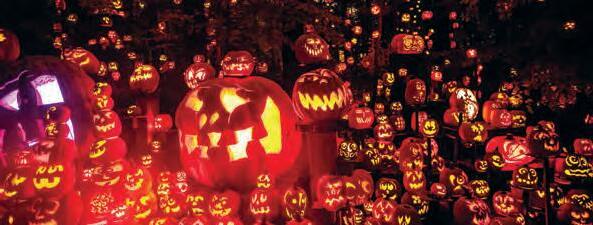
Haunted Objects Live
Norton Center for the Arts, Danville, 859.236.4692
BGKY Harvest Festival
Circus Square Park, Bowling Green, 270.202.0256
Burlington Antique Show Boone County Fairgrounds, Burlington, 513.922.6847 1 2 3
Theresa Caputo Live: The Experience SKyPAC, Bowling Green, 270.904.1880
Stephen M. Vest Book Signing
Paul Sawyier Public Library, Frankfort, 502.352.2665
An Evening with David Sedaris
Lexington Opera House, Lexington, 859.233.3535
Blippi: Join the Band Tour!
Corbin Arena, 606.258.2020
Macbeth Shelby County Community Theatre, Shelbyville, also Oct. 17, 25 and 26, 502.633.0222
Dear Evan Hansen
The Carson Center, Paducah, 270.908.2037

Gold Over America Tour with Simone Biles
KFC Yum! Center, Louisville, 502.690.9000
The Whiskey Files with New Riff’s Jay Erisman
Hermitage Farm, Goshen, 502.398.9289
The Carson Center, Paducah, 270.908.2037
Celtic Thunder RiverPark Center, Owensboro, 270.687.2770
The Isaacs A Tribute to The Grand Ole Opry, Bluegrass Music Hall of Fame, Owensboro, 270.926.7891 October Court Days Festival
downtown Mt. Sterling, through Oct. 21, 859.498.8732
Little Feat: Can’t be Satisfied Tour Louisville Palace, 1.800.745.3000
Righteous Brothers
Turfway Park Racing and Gaming, Florence, 859.371.0200
Bardstown Arts and Crafts Festival downtown, through Oct. 13, 502.348.4877
Fall Art Market
Kentucky Artisan Center, Berea, also Oct. 20, 859.985.5448
2024 Hall of Fame
Induction
Kentucky Music Hall of Fame, Mount Vernon, 606.256.1000
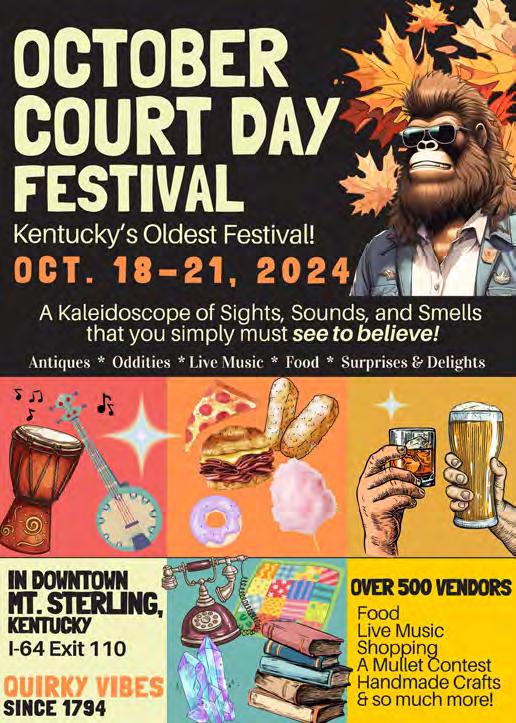



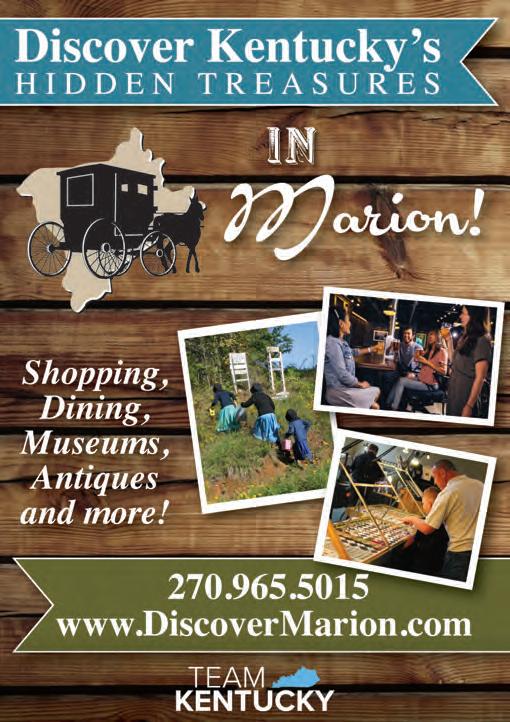
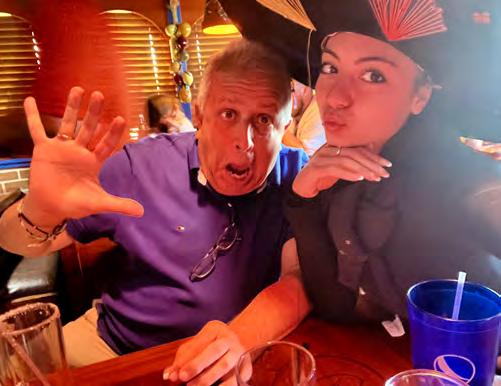
Iam known by many names: Little Stevie, Snail (my friend Slick called me “slow”), Vest, Vestie, Stephen, Stephen Matthew, Bozo, Steve, Dad and Pop-Pop.
My freshest moniker is Pazzo—Papá Pazzo, given to me by Sofia, our 16-year-old Italian exchange student, in response to my inquiry into the name of a shop I saw on our Kentucky Monthly trip to Venice. “It was called Vestopazzo,” I said.
“Oh,” Sofia said. “Vesto means clothing. Pazzo means crazy. So, the store sells crazy clothing.”
“Oh,” I said. “I figured it meant ‘Vest is crazy.’ ”
“No. But Papá is ‘Papá Pazzo.’ ” . . .

STEPHEN M. VEST Publisher + Editor-in-Chief
So, how did we come to have a foreign exchange student? The lady with whom I share my home apparently is experiencing emptynest syndrome—“a feeling of grief and loneliness when the children move out of the family home.” Couple that with one too many frozen margaritas at Casa Fiesta, a Mexican restaurant/watering hole, and daughter Sydney’s former bedroom has become home base for Sofia while she attends Frankfort’s Western Hills High School and experiences American life firsthand.
“We have this young lady whose life dream is to come to America, and her host family fell through,” said Natalie, a neighbor who oversees exchange students in our community. “I think you’d be a perfect family, but if you
say no, I guess we’ll have to tell her she can’t come.”
Imagine, if you will, Casa Fiesta, a former McDonald’s, suddenly transformed into the set of 1947’s Miracle on 34th Street. Cast Kay (the aforementioned empty-nester) as Mrs. Julian Shellhammer after being plied with a couple of double martinis as her husband tries to get her to agree to have Santa Claus come live with them for a few weeks.
“Hellooooo,” Kay says to Natalie, speaking into an imaginary upside-down telephone. “Darling, that would be charming.”
And it has been—charming, that is.
Sofia quickly has become a member of our extended pazzo family, visiting local cultural icons such as Kentucky Kingdom, the Kentucky State Fair and Holiday World. She’s been to Daniel Boone’s grave and places in Kentucky with European names, including Paris, Versailles and Florence. In October, she’ll go through London en route to the original KFC in Corbin and to view Cumberland Falls’ moonbow. We plan to take her to see The Bean in Chicago and a pumpkin patch.
Sofia has taken it all in stride, and I’ve yet to catch her rolling her eyes, which is universal in its meaning. She may have rolled her eyes while trying to get me to understand that my name in Italian is STEF-ano instead of Ste-FAHno, but we communicate fairly well.
Our family’s Italian vocabulary is probably similar to yours and the Fazoli’s menu. We all know spaghetti, lasagna, rigatoni and pizza. Advanced speakers know ciao (pronounced chow), which can be hello or goodbye, buongiorno (good morning) and arrivederci (goodbye).
Four decades ago, I took a semester of modern Italian in college, during which I mastered the pronunciation of “no” and learned that train station is “treno stazione,” which helped me understand “instituzione militaria” is military installation and an upset tummy is often caused by “constipazione.”
A month into Sofia’s visit, she has already expanded my vocabulary to include “pelle d’oca” (goosebumps) and “stupido,” which I’m sure you can figure out.
“Any chance of me being fluent in Italian by the time you go home?” I asked Sofia.
“Nnnoo,” she said with the perfect inflection. “No.”
Vest can be contacted via his email, steve@kentuckymonthly.com
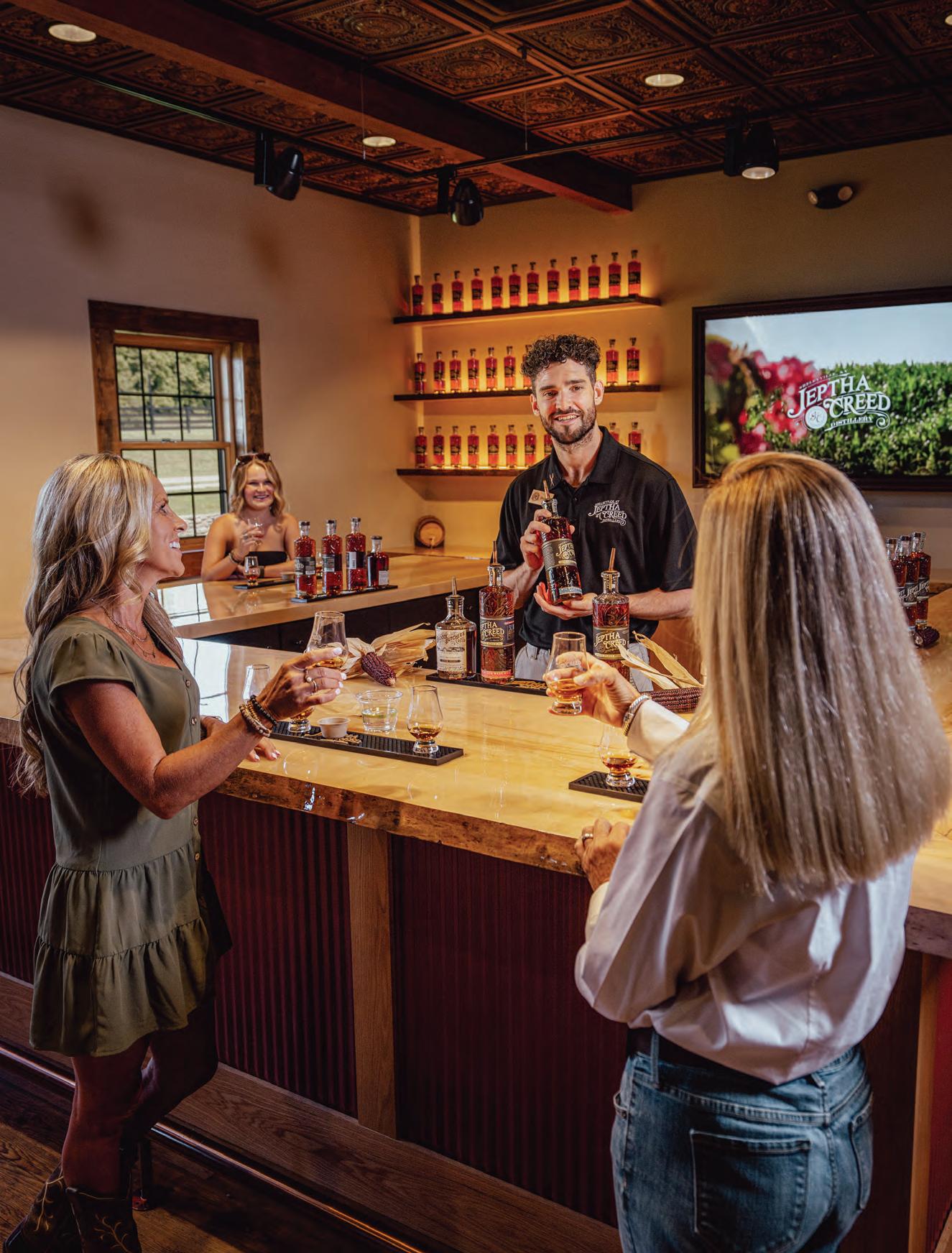
ShelbyKY has the best of Kentucky. Discover Your Bourbon Destination™ • visitshelbyky.com
Handcrafted bourbon, graceful Saddlebred horses, and iconic Southern comfort food perfected by Colonel Sanders himself. Designer shopping and luxurious places to stay. Close to the city without being in the city and full of small town charm. Paired with our authentic Southern hospitality, it’s easy to see why ShelbyKY is known as Your Bourbon Destination™ and the Saddlebred Horse Capital of the World. In other words, ShelbyKY is everything you love about Kentucky.
